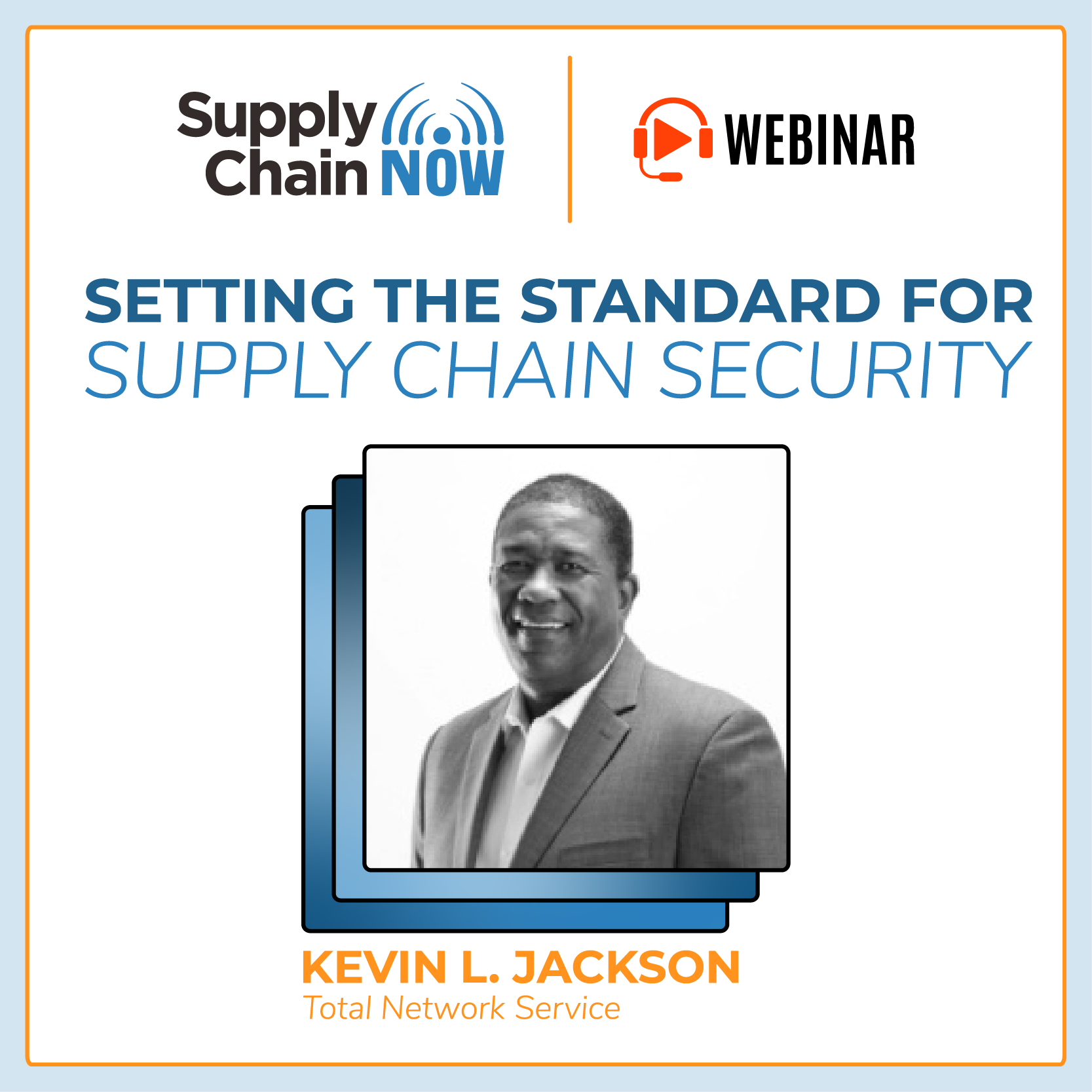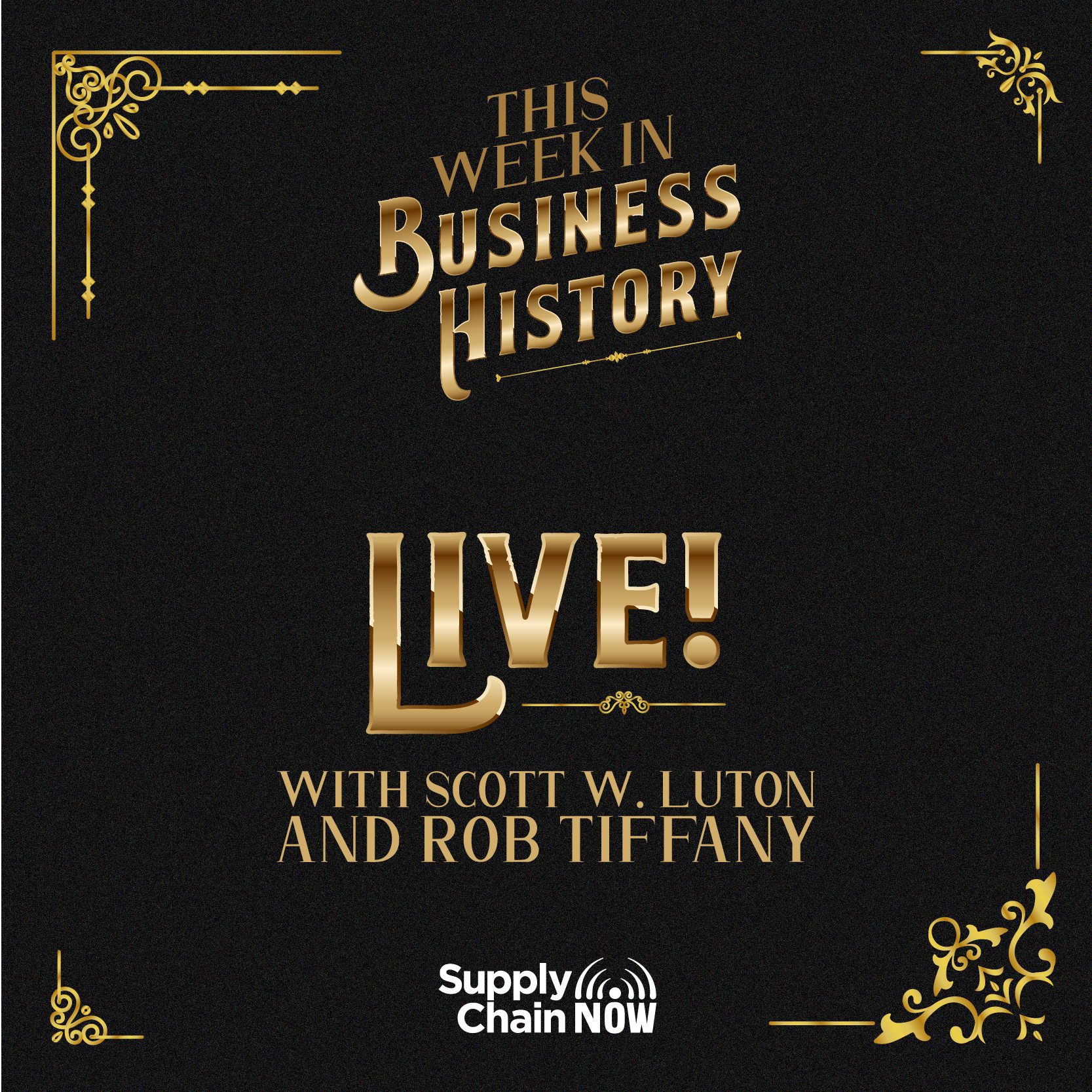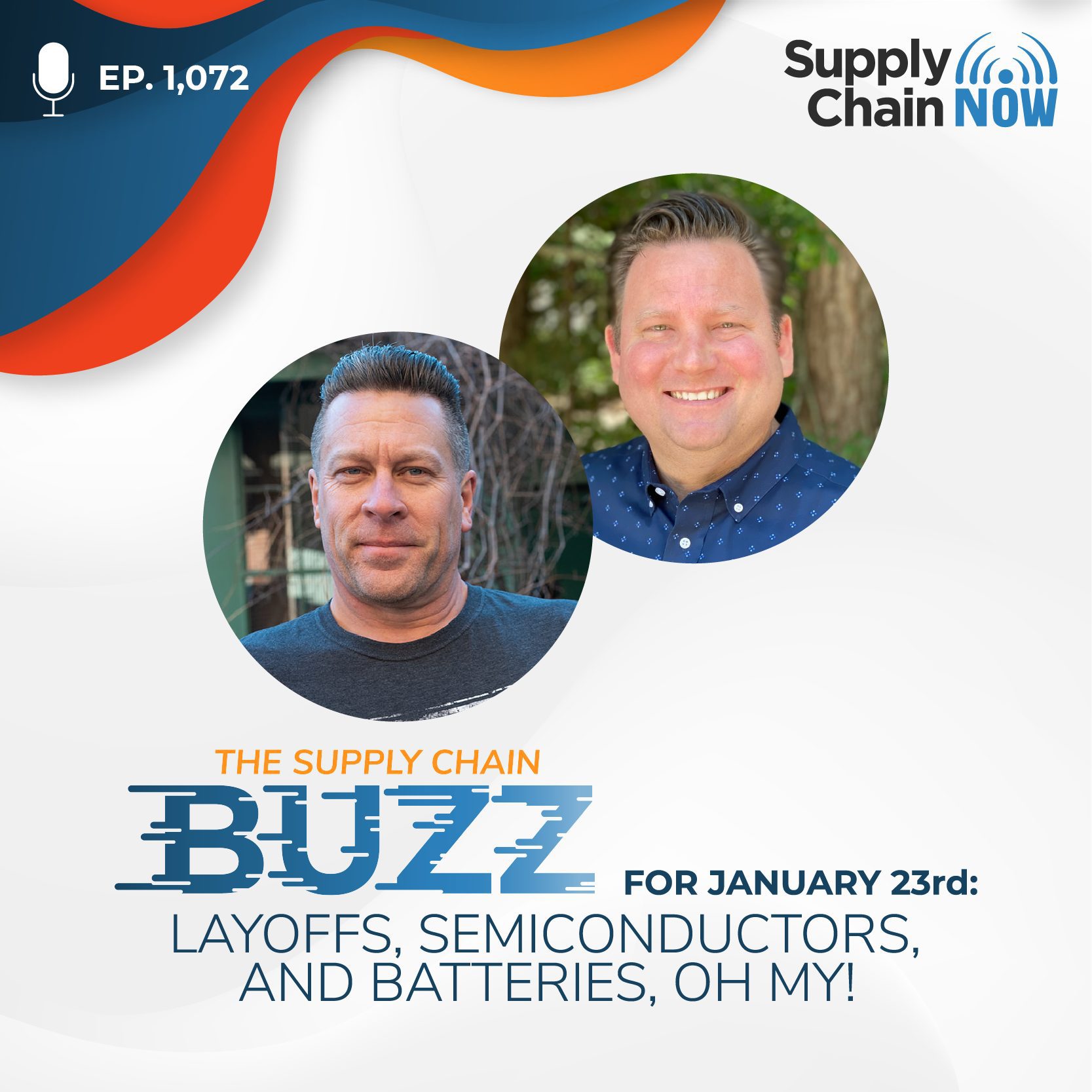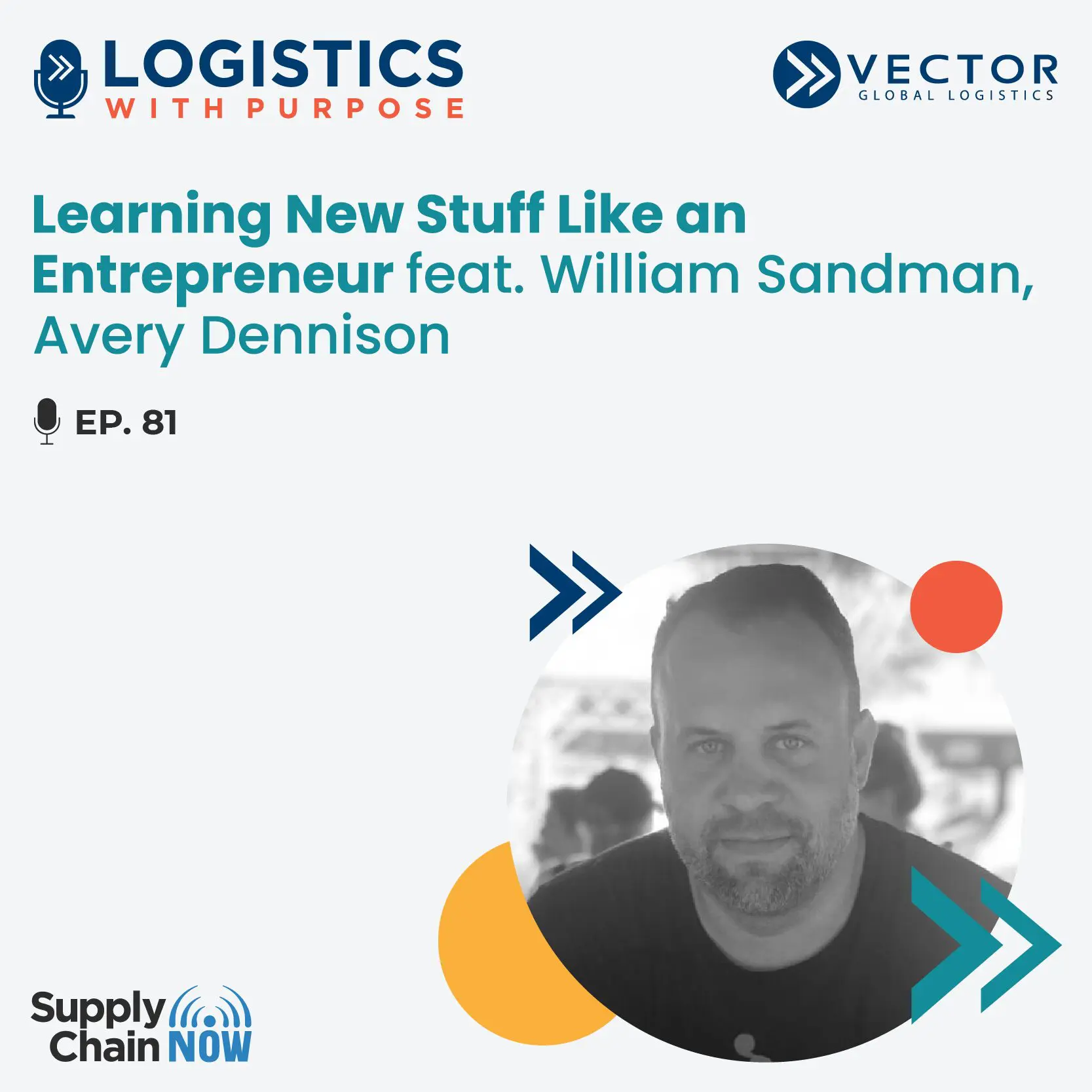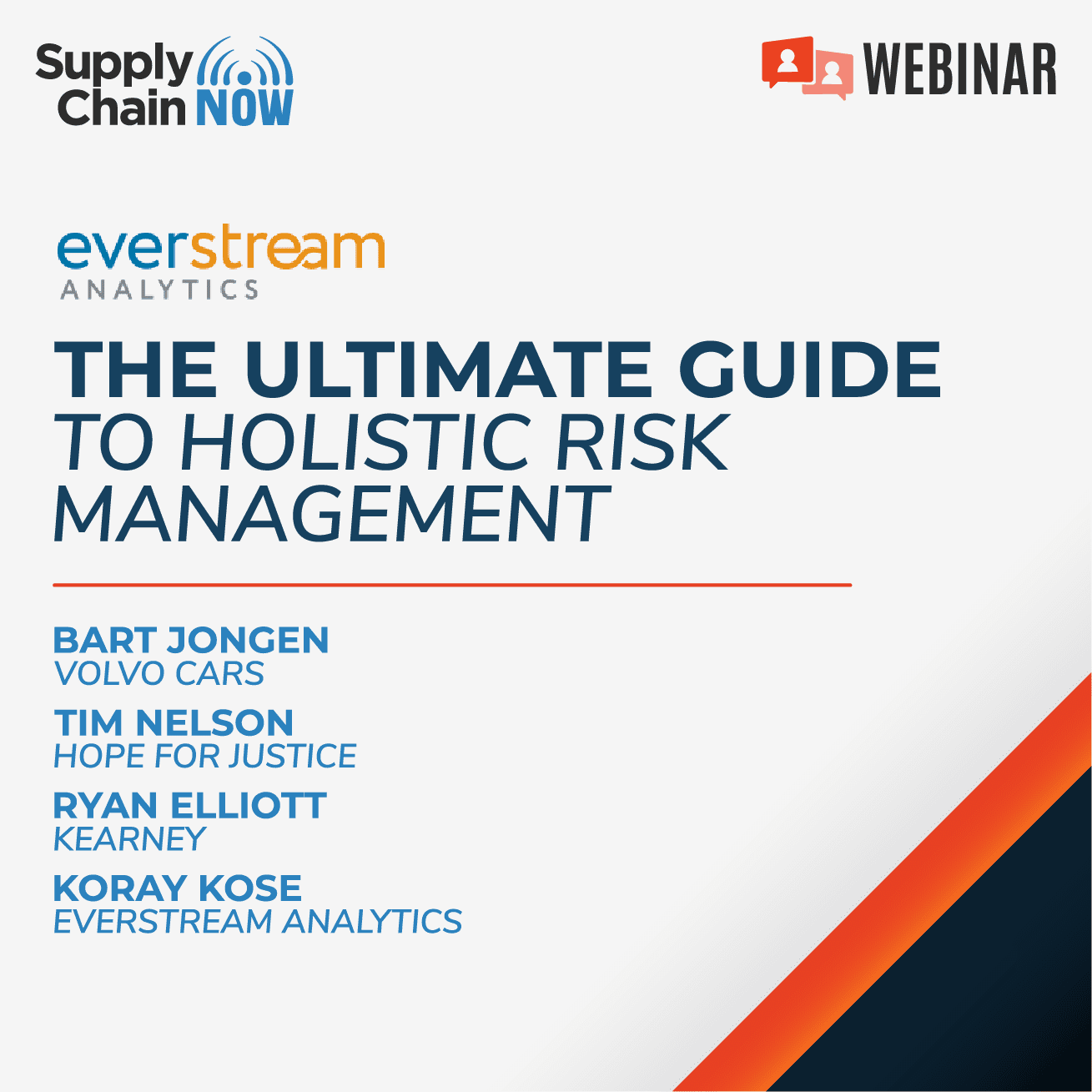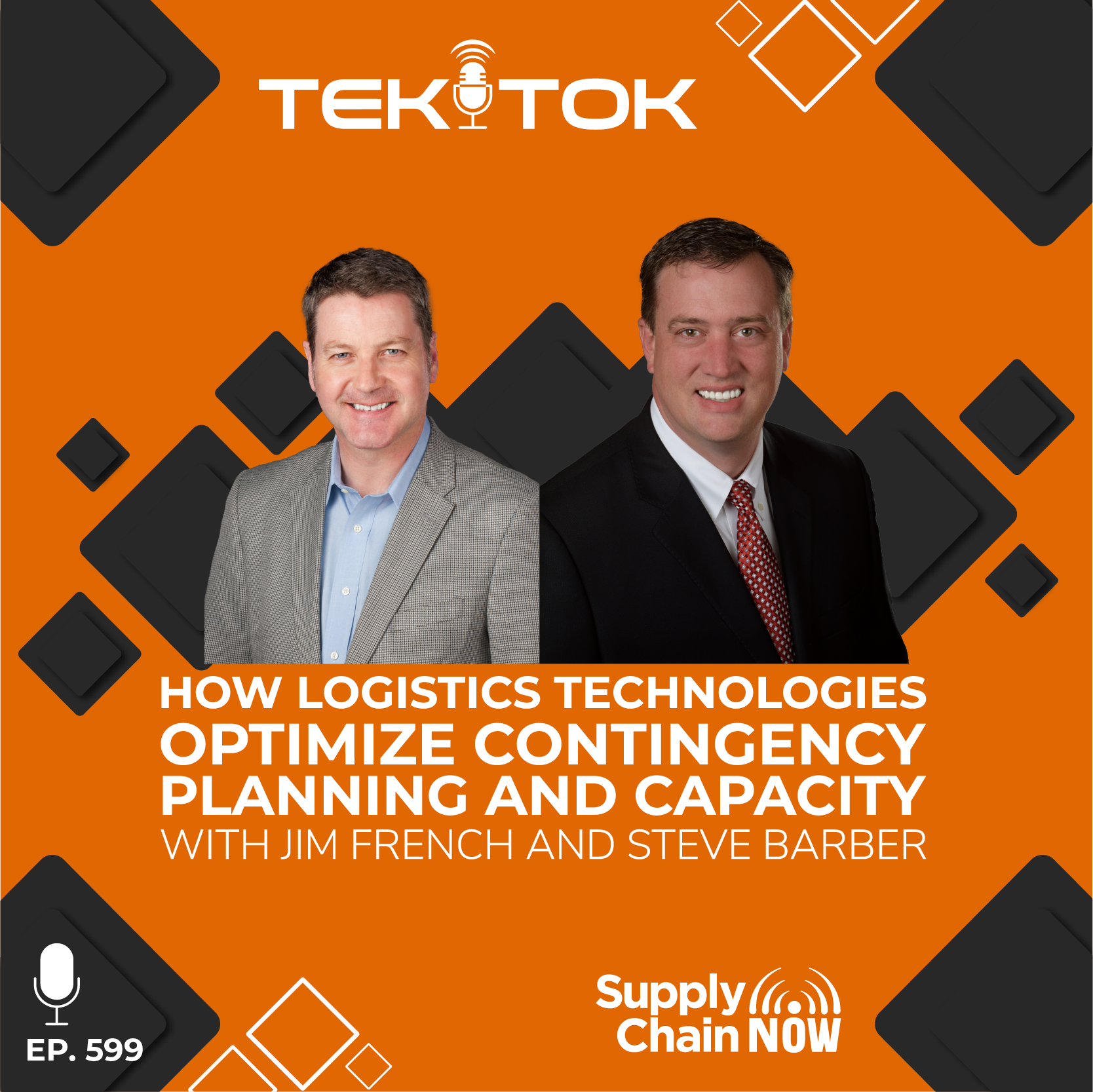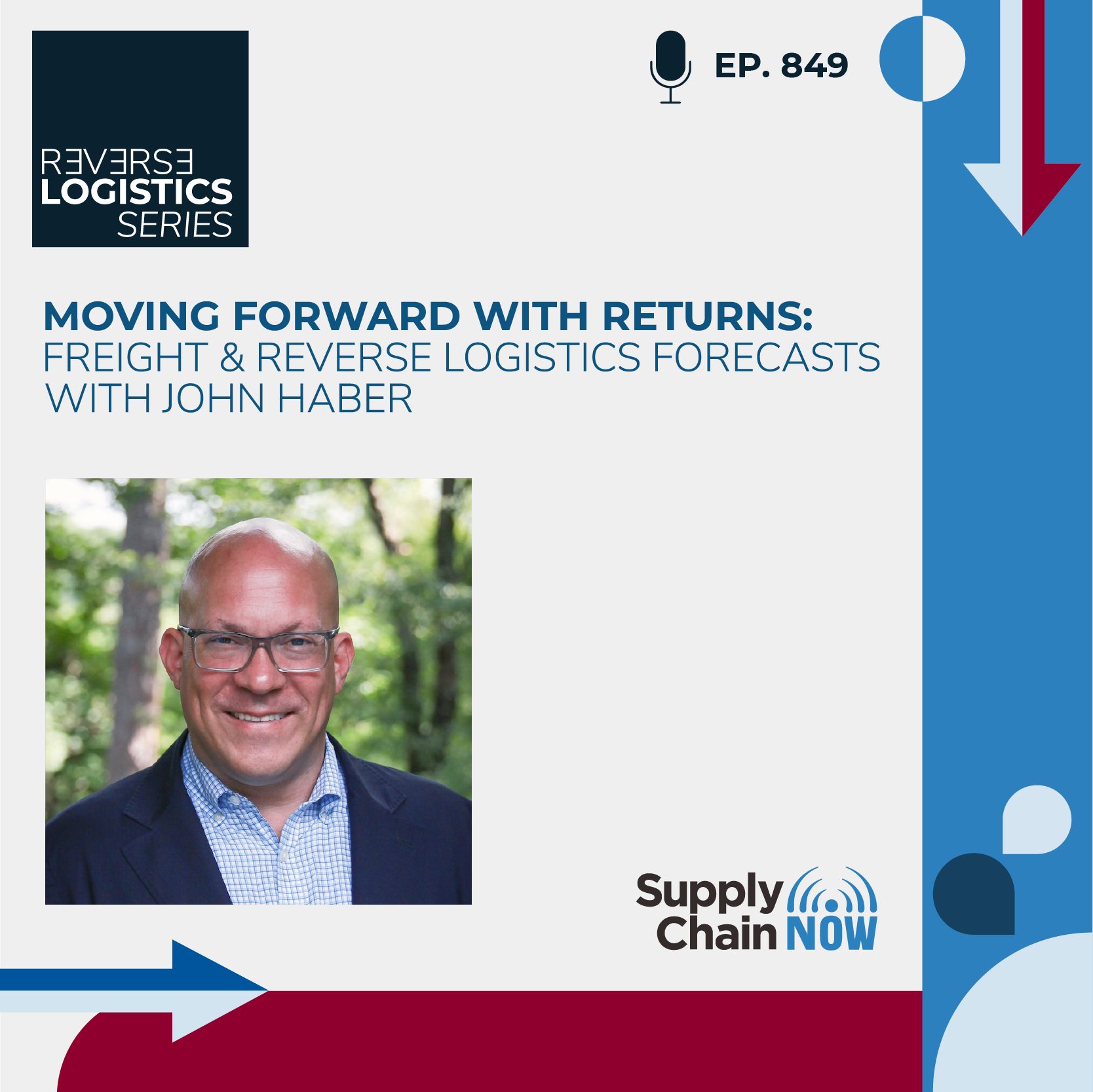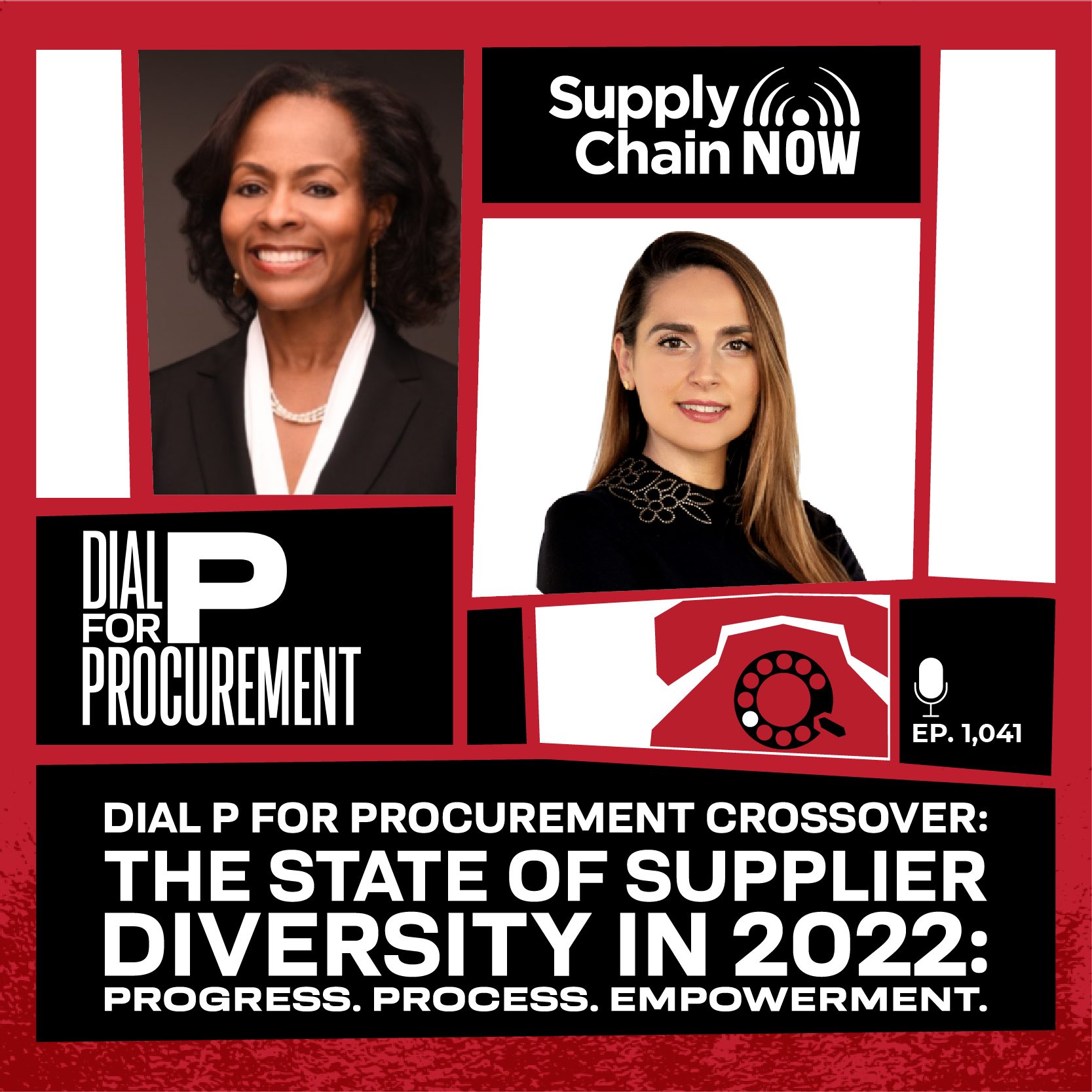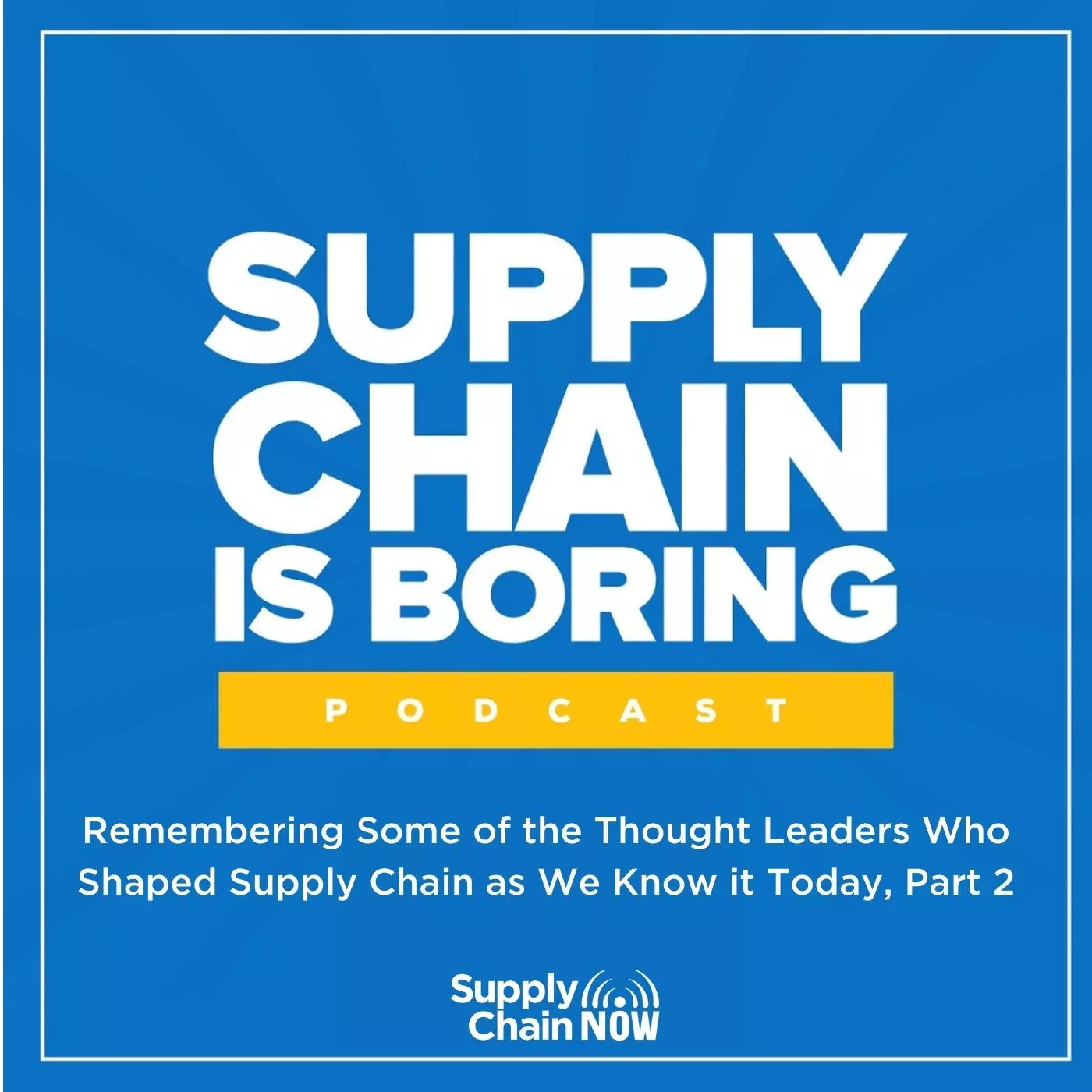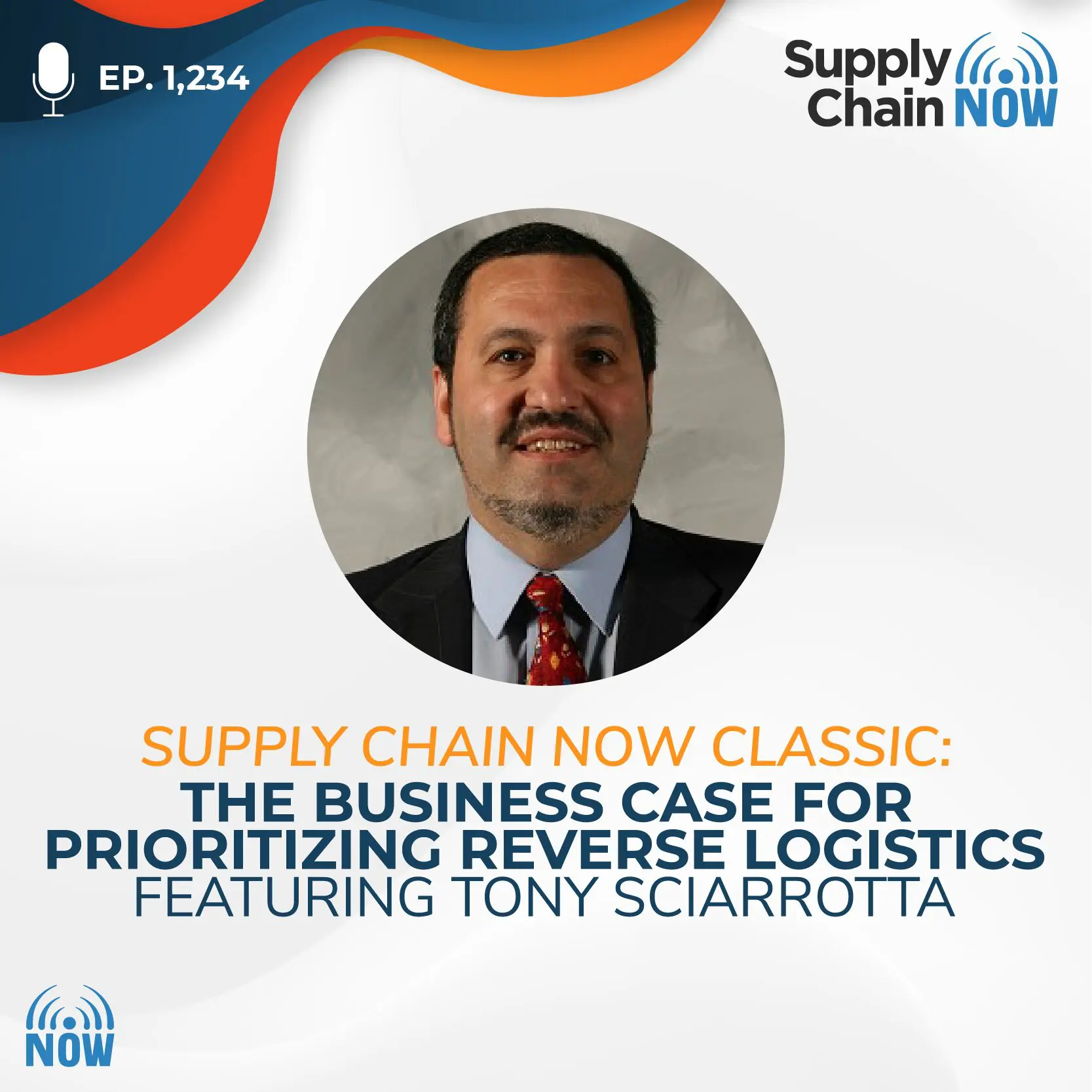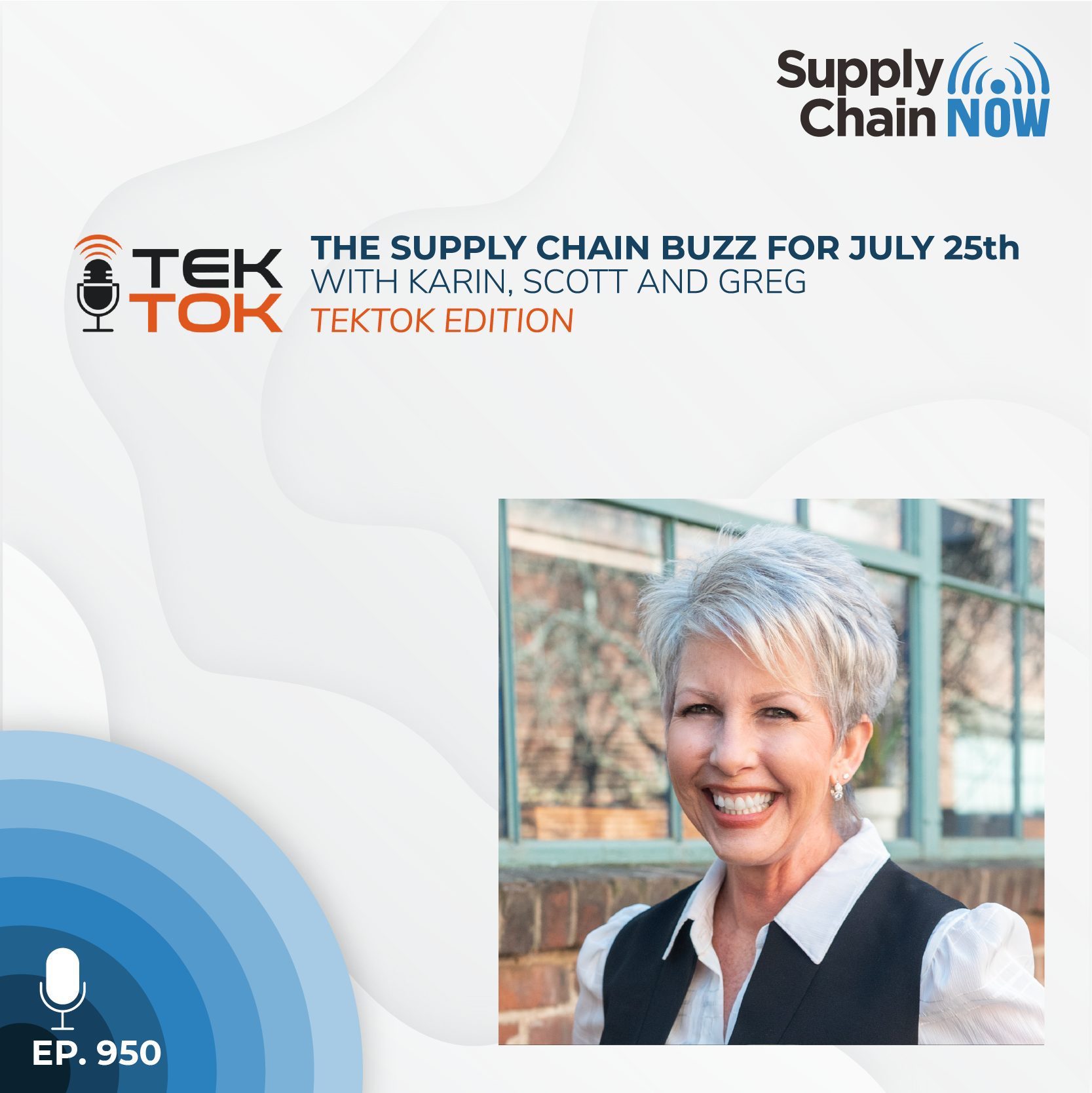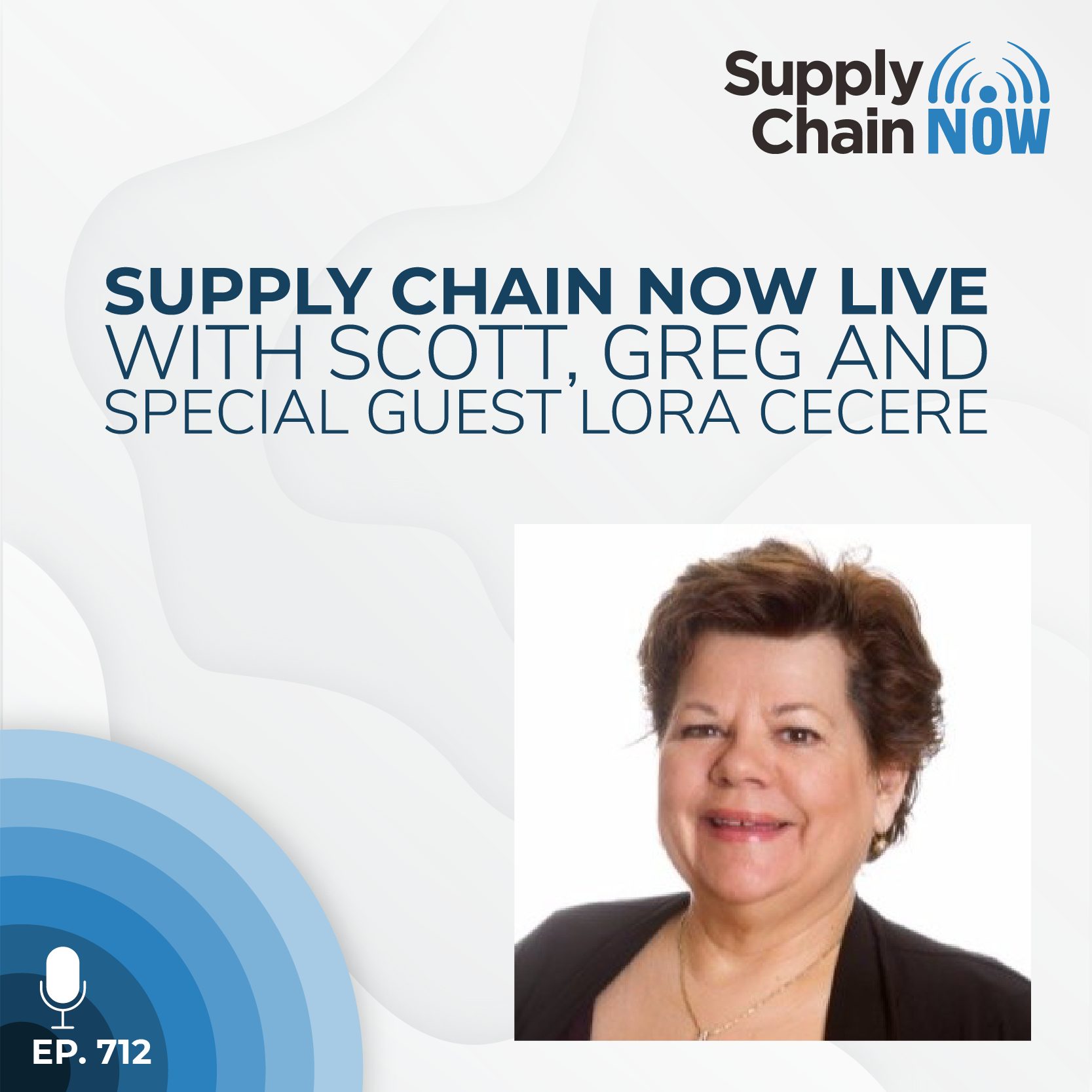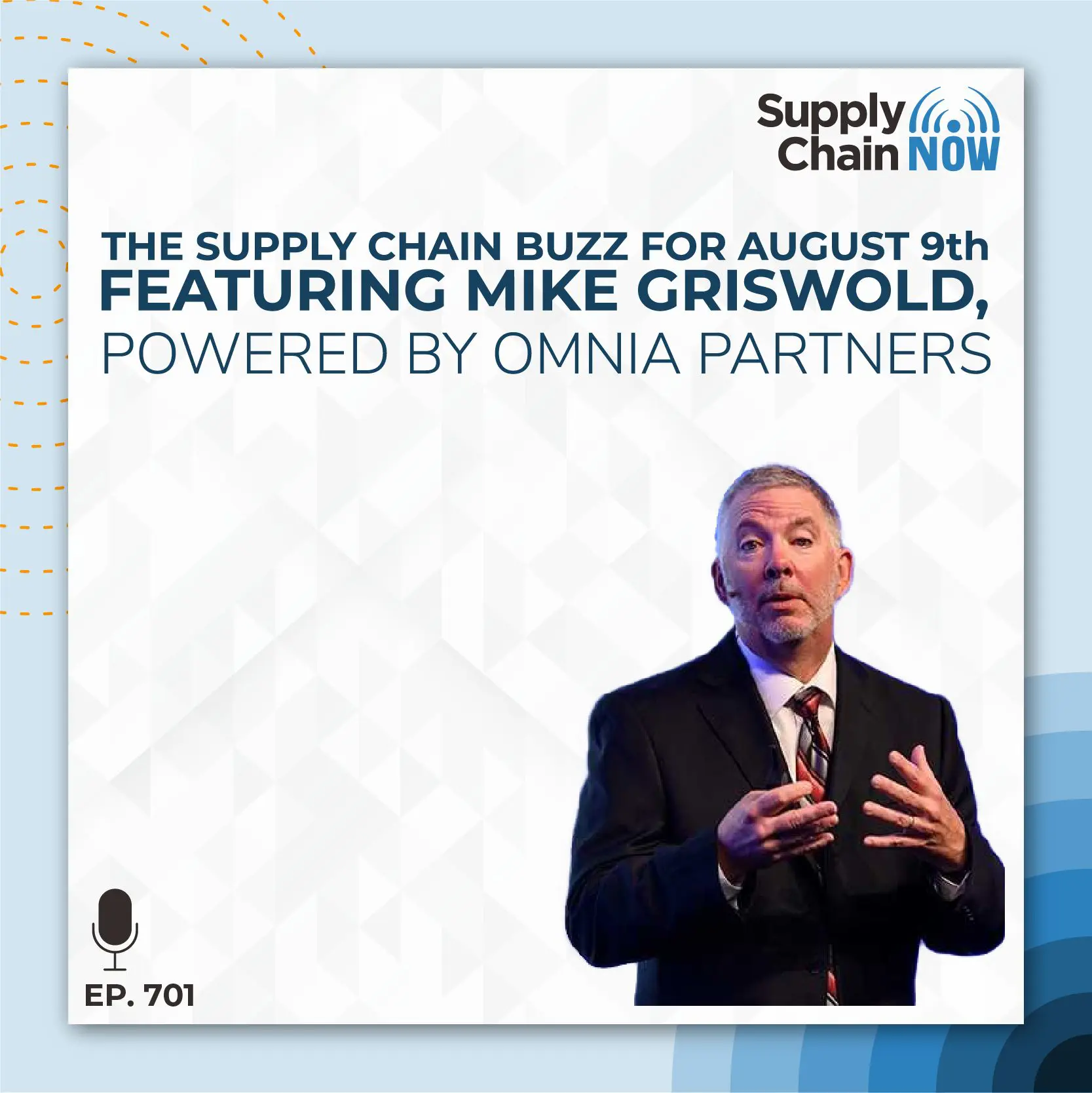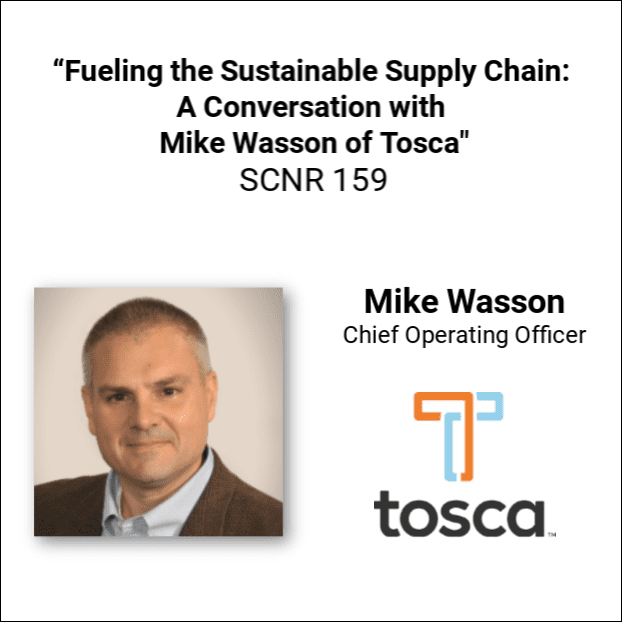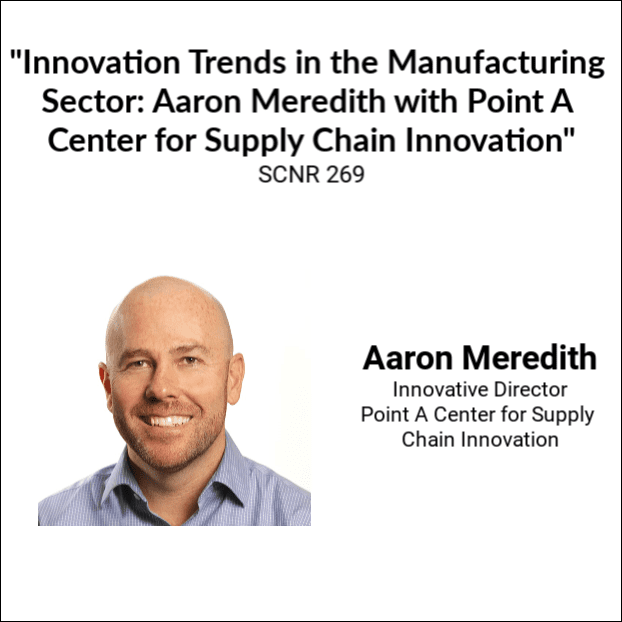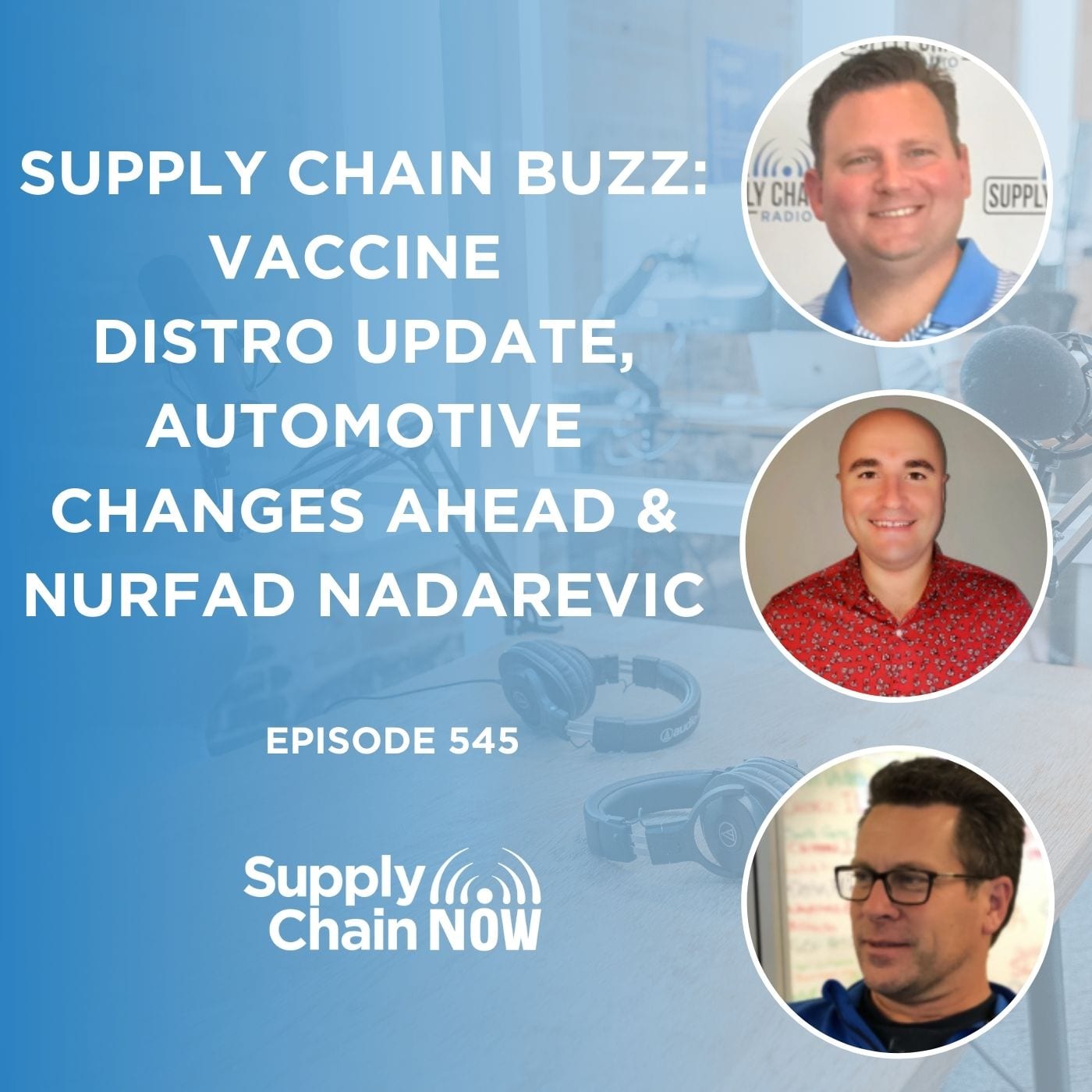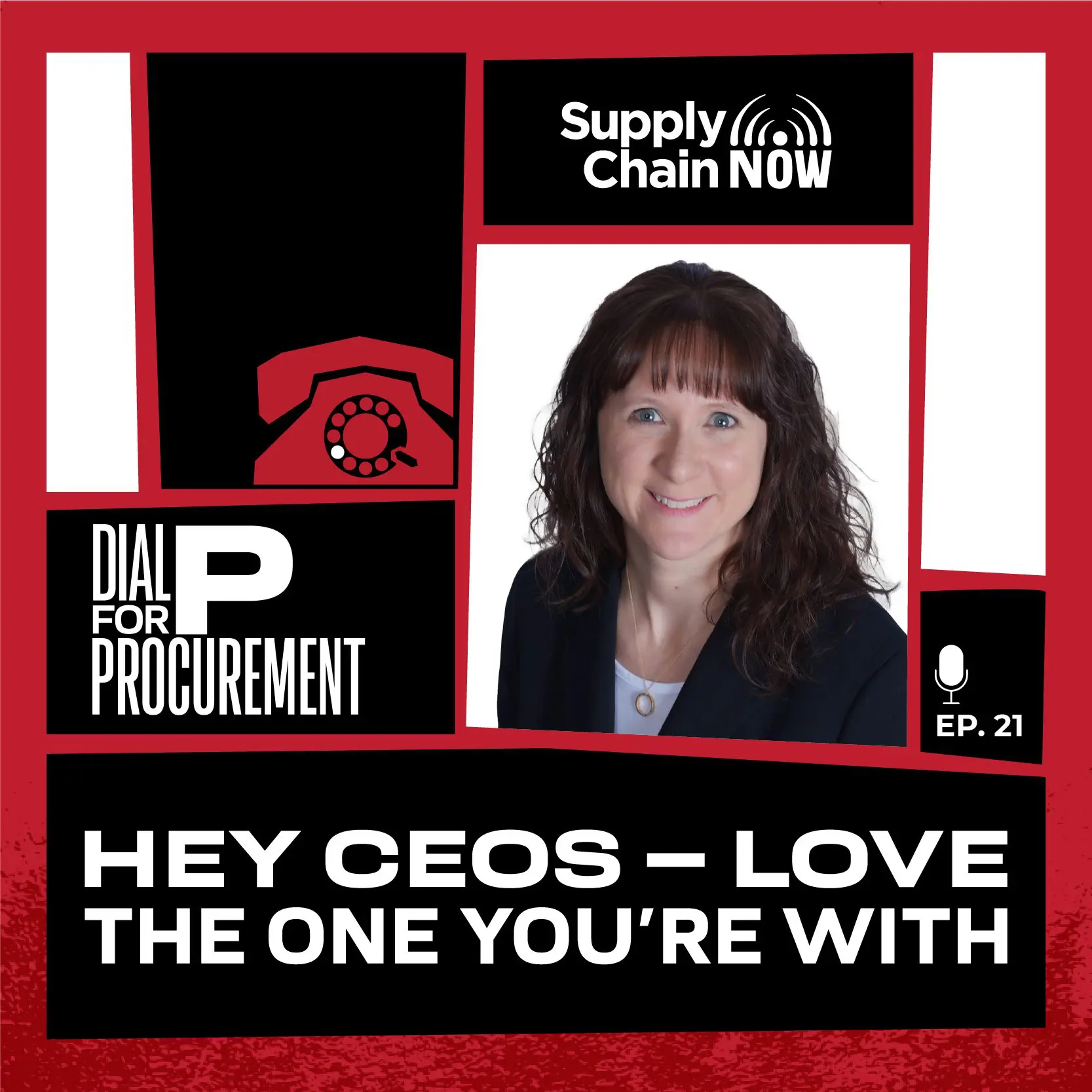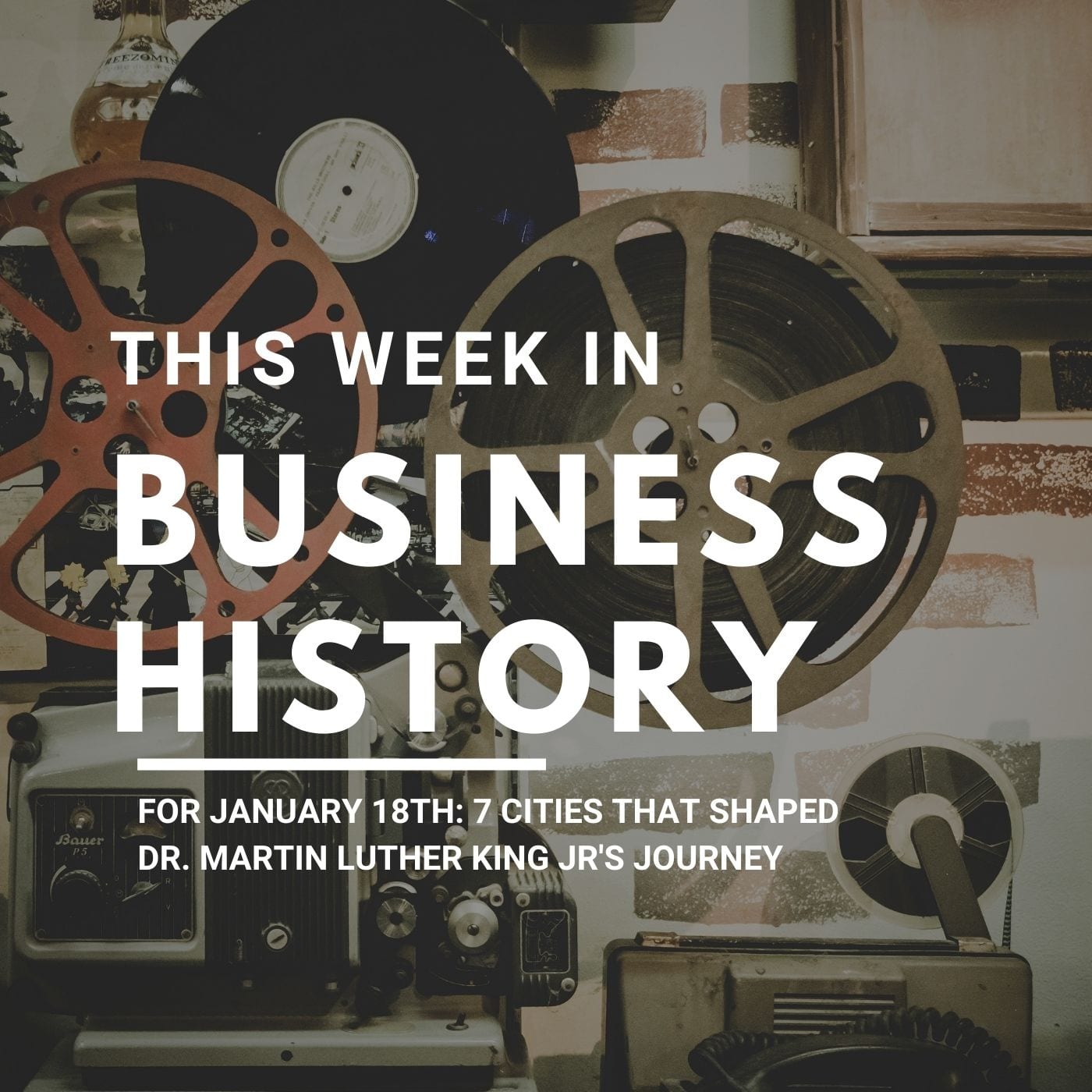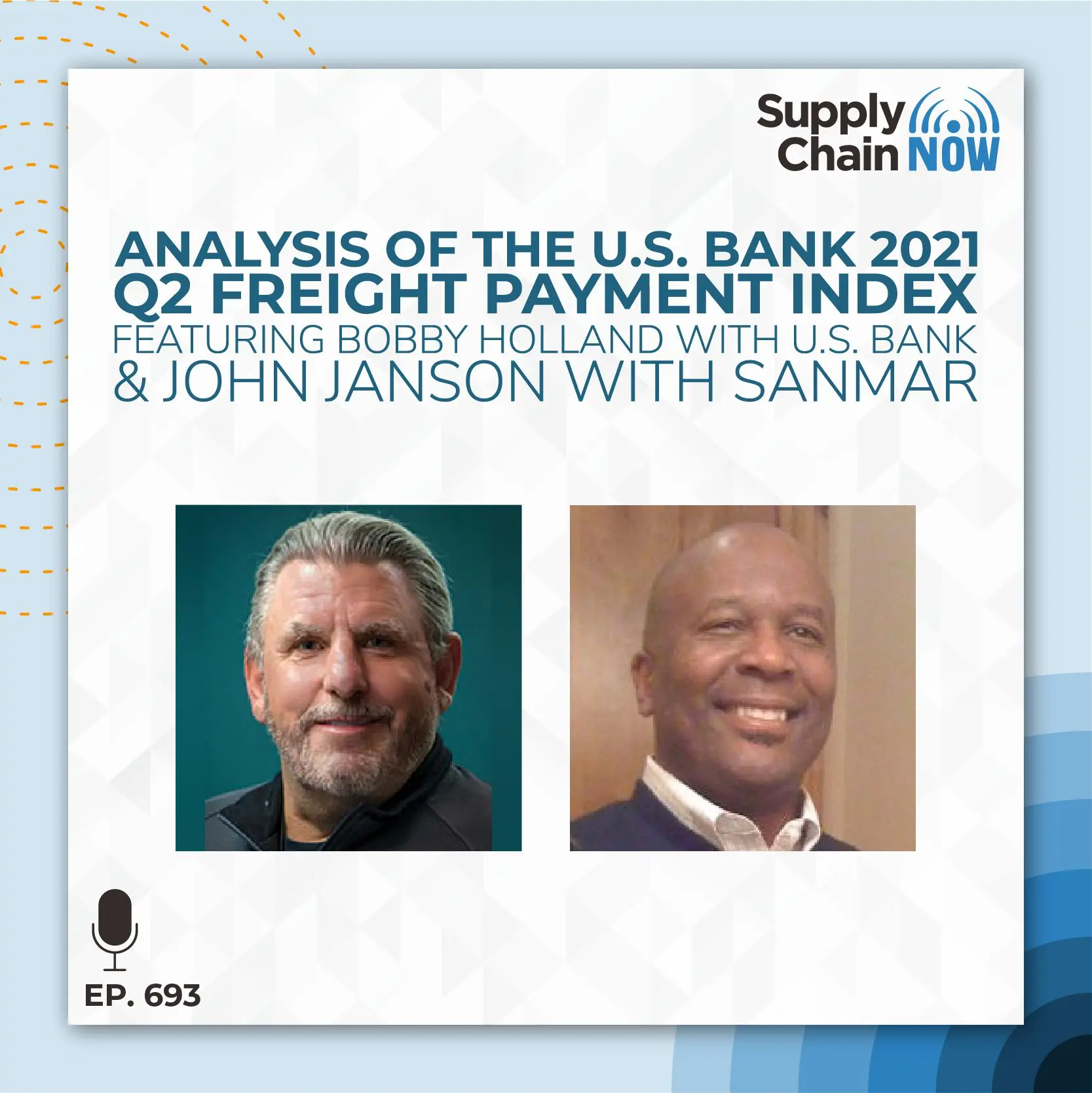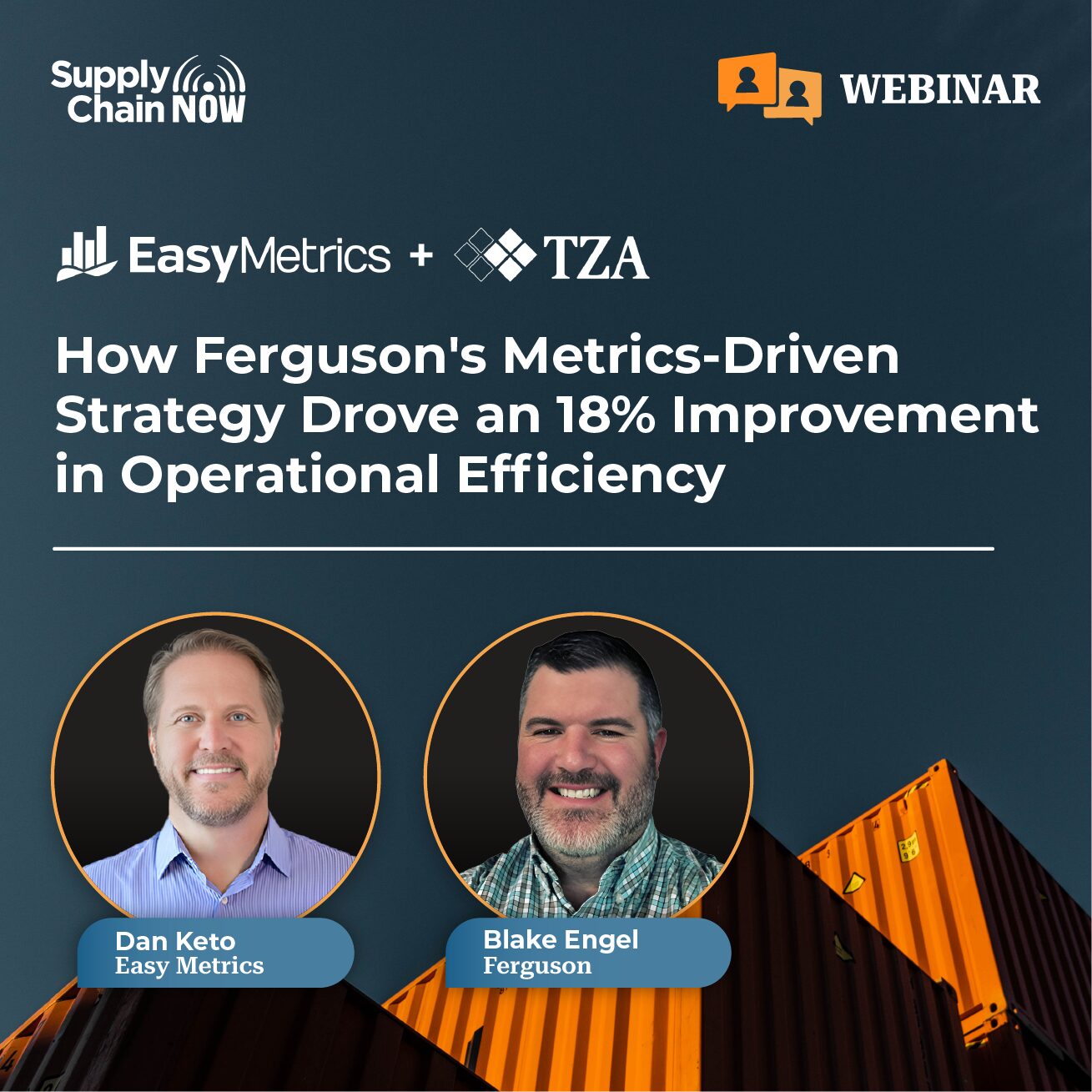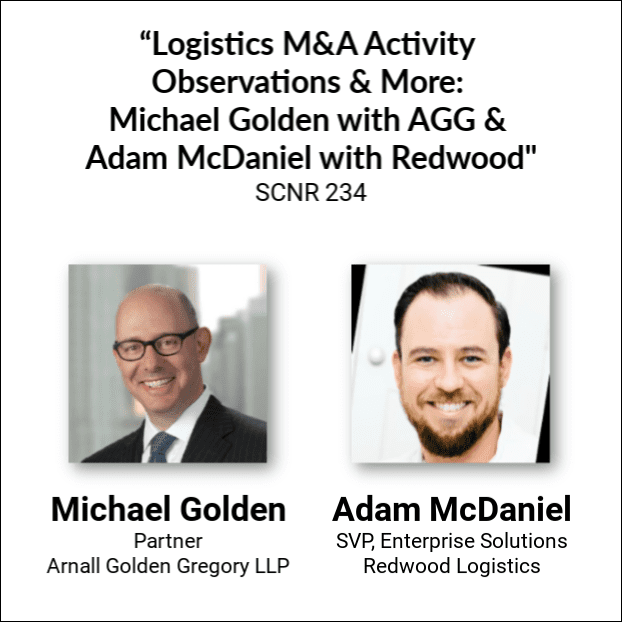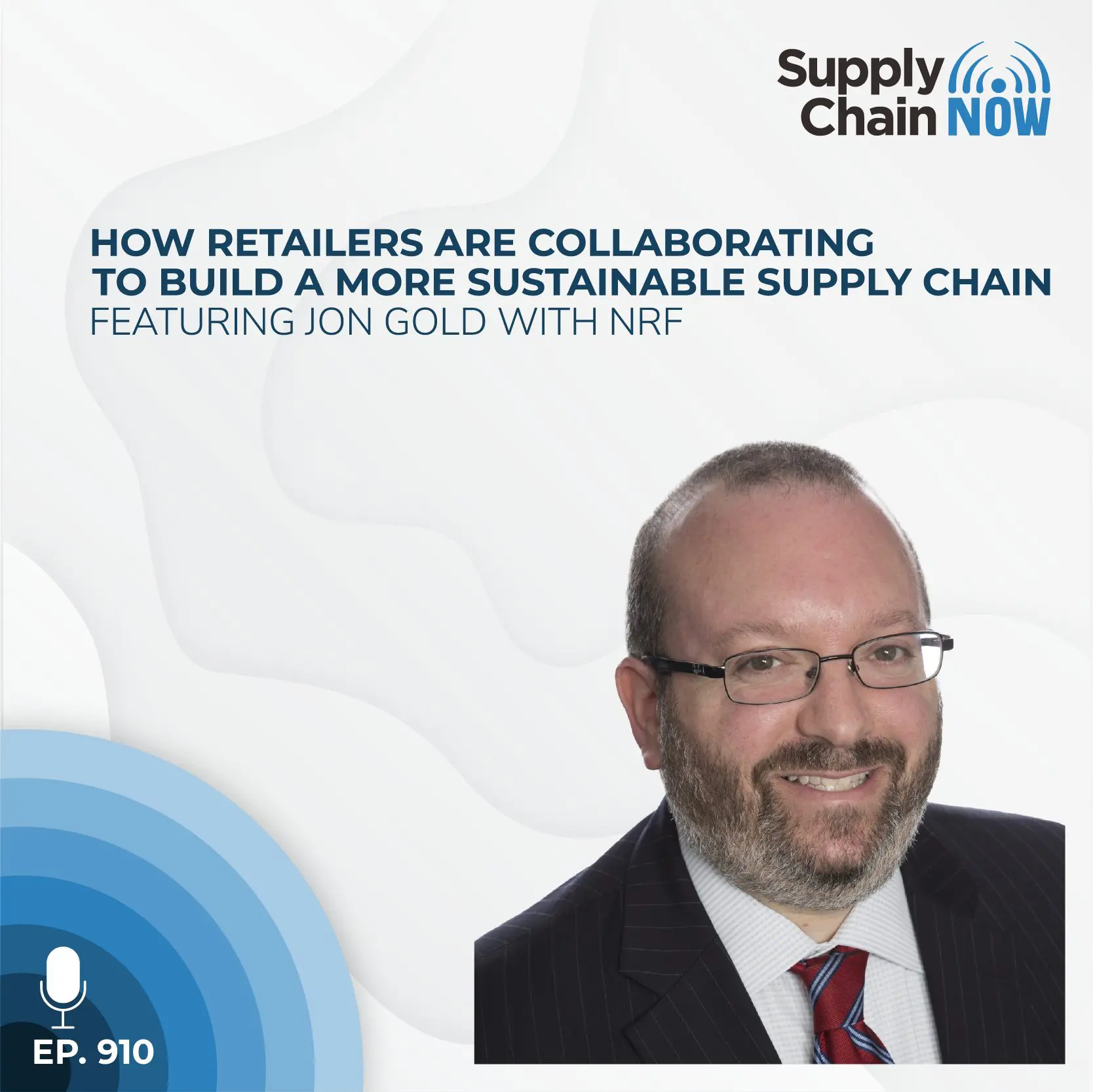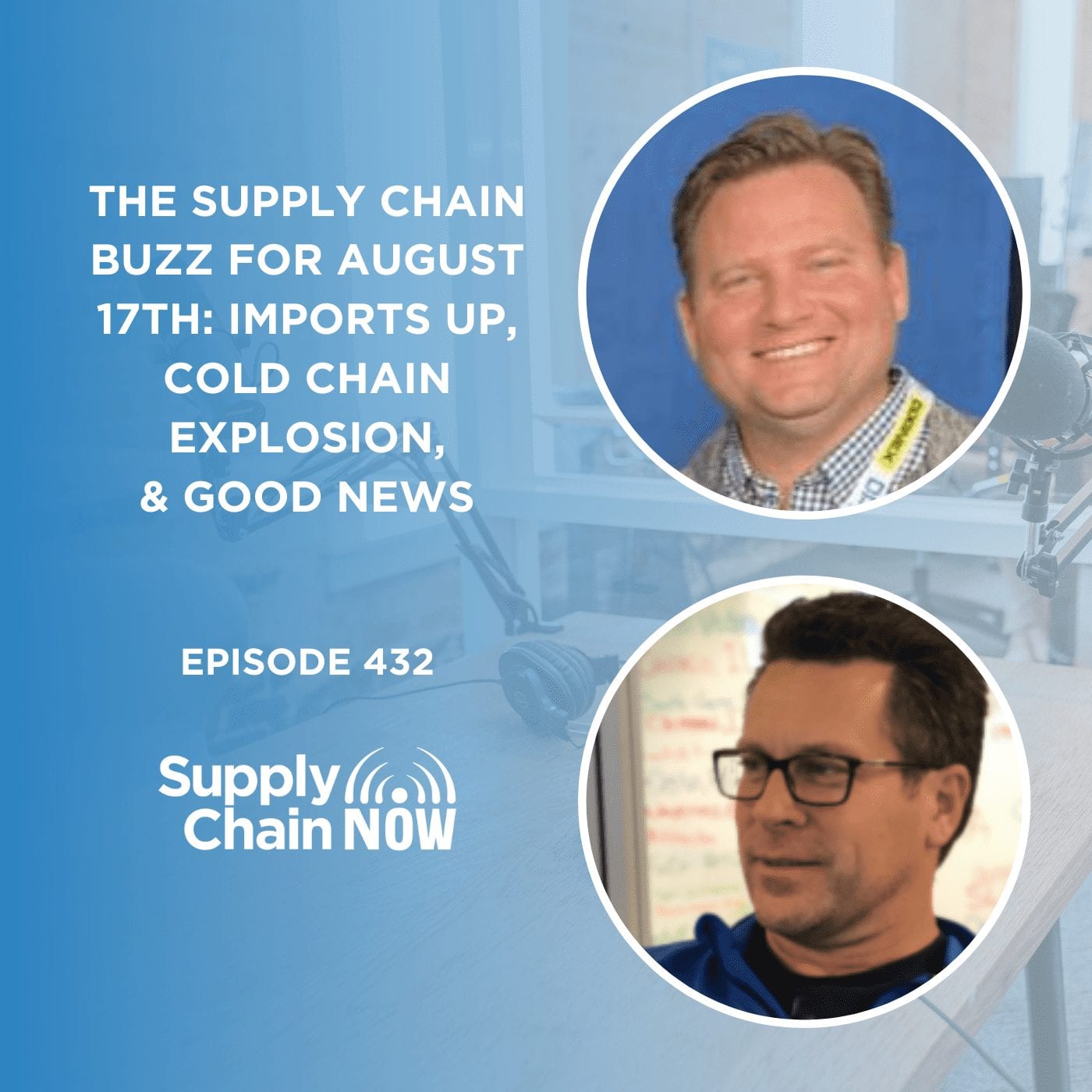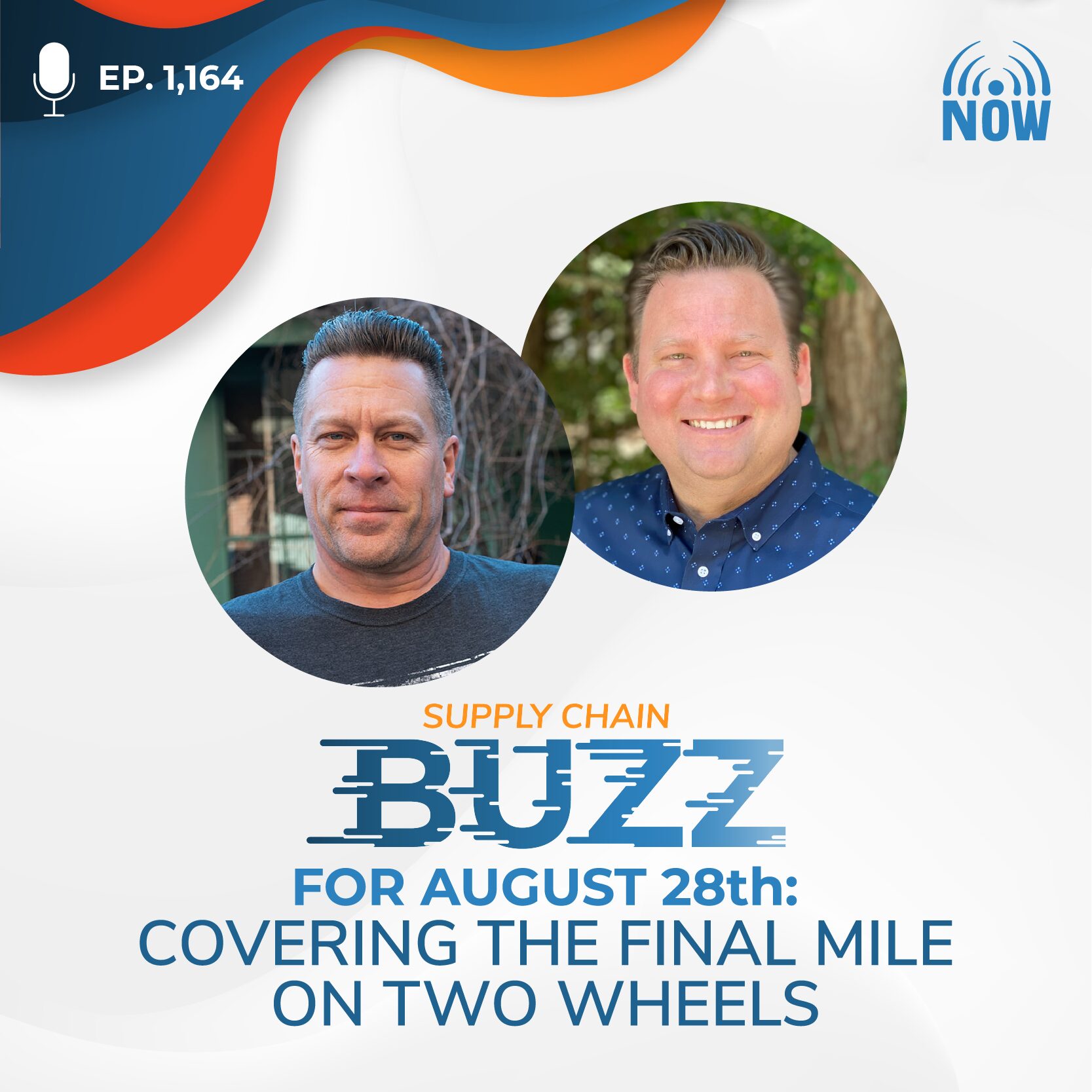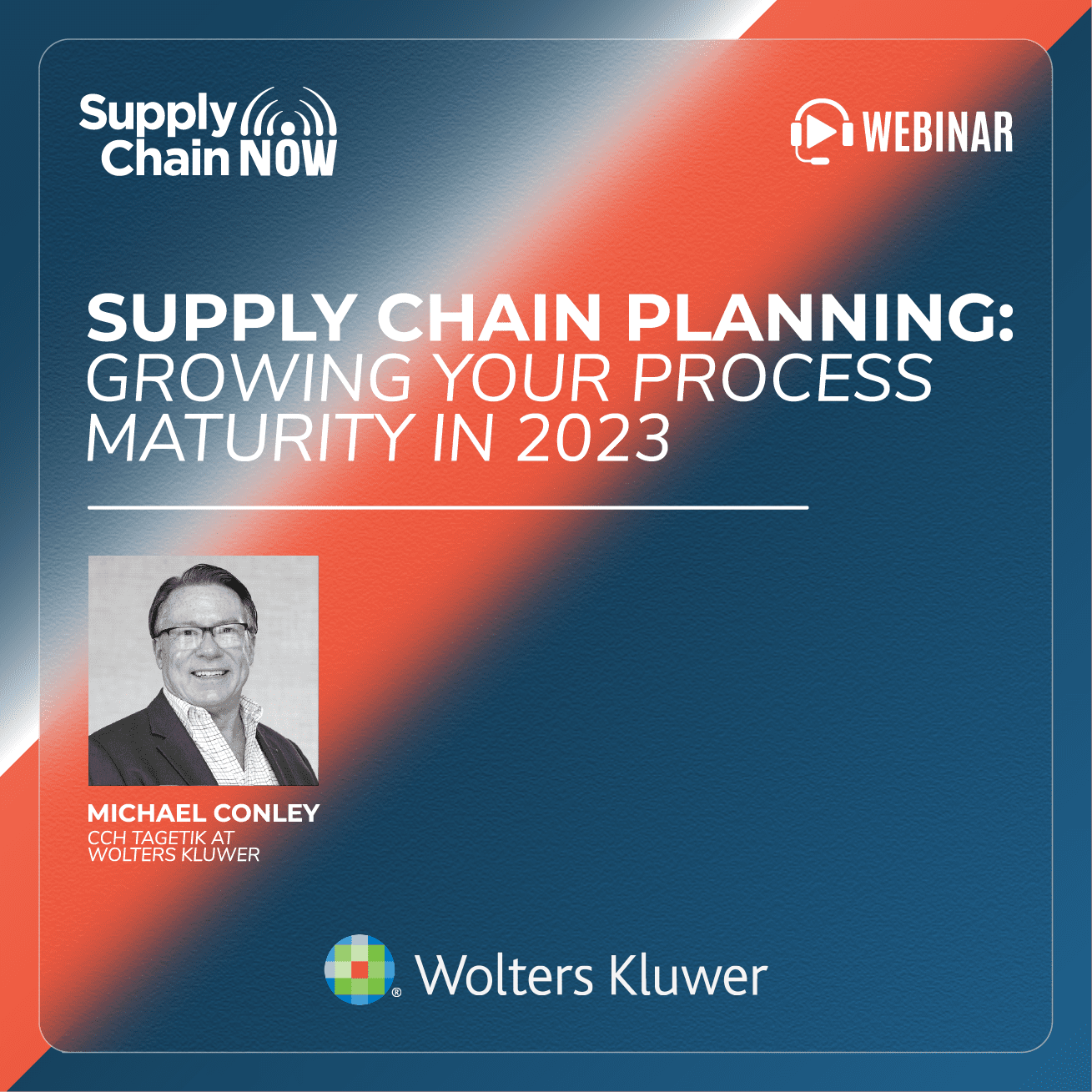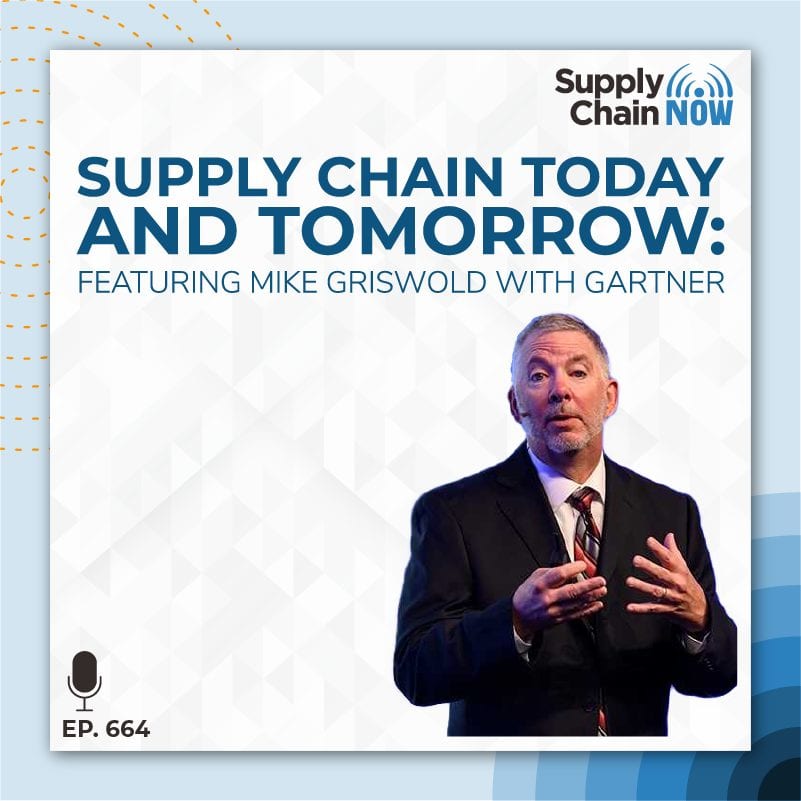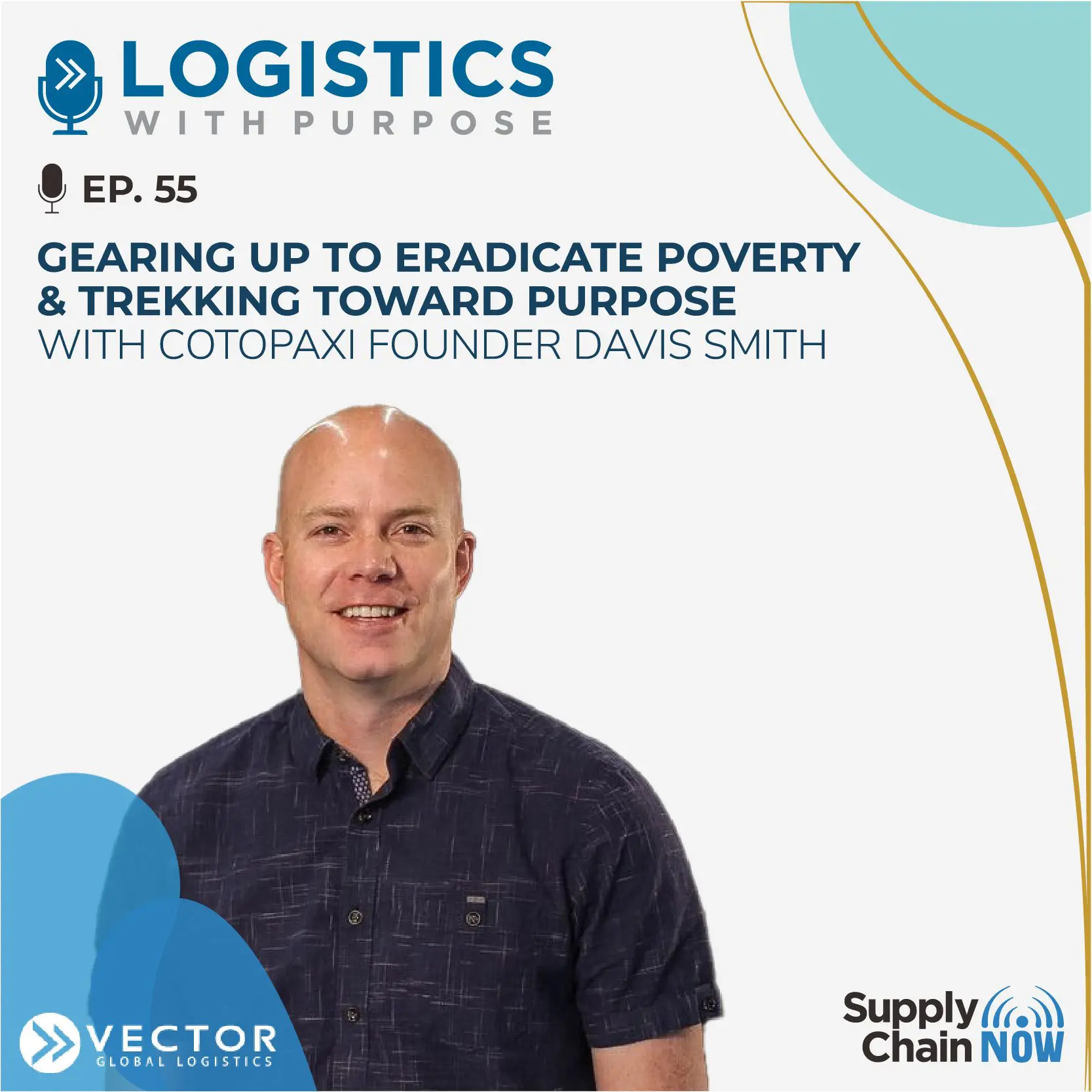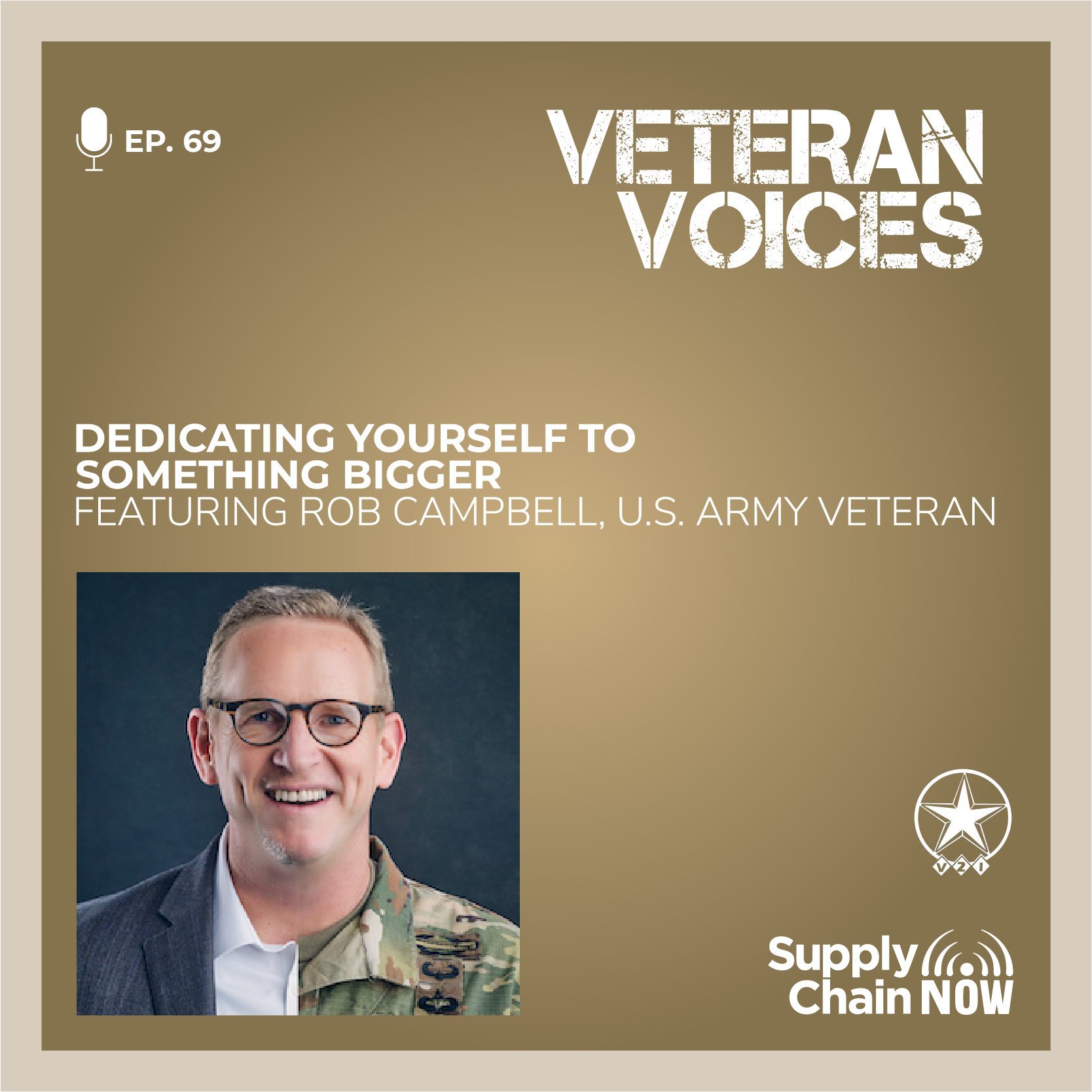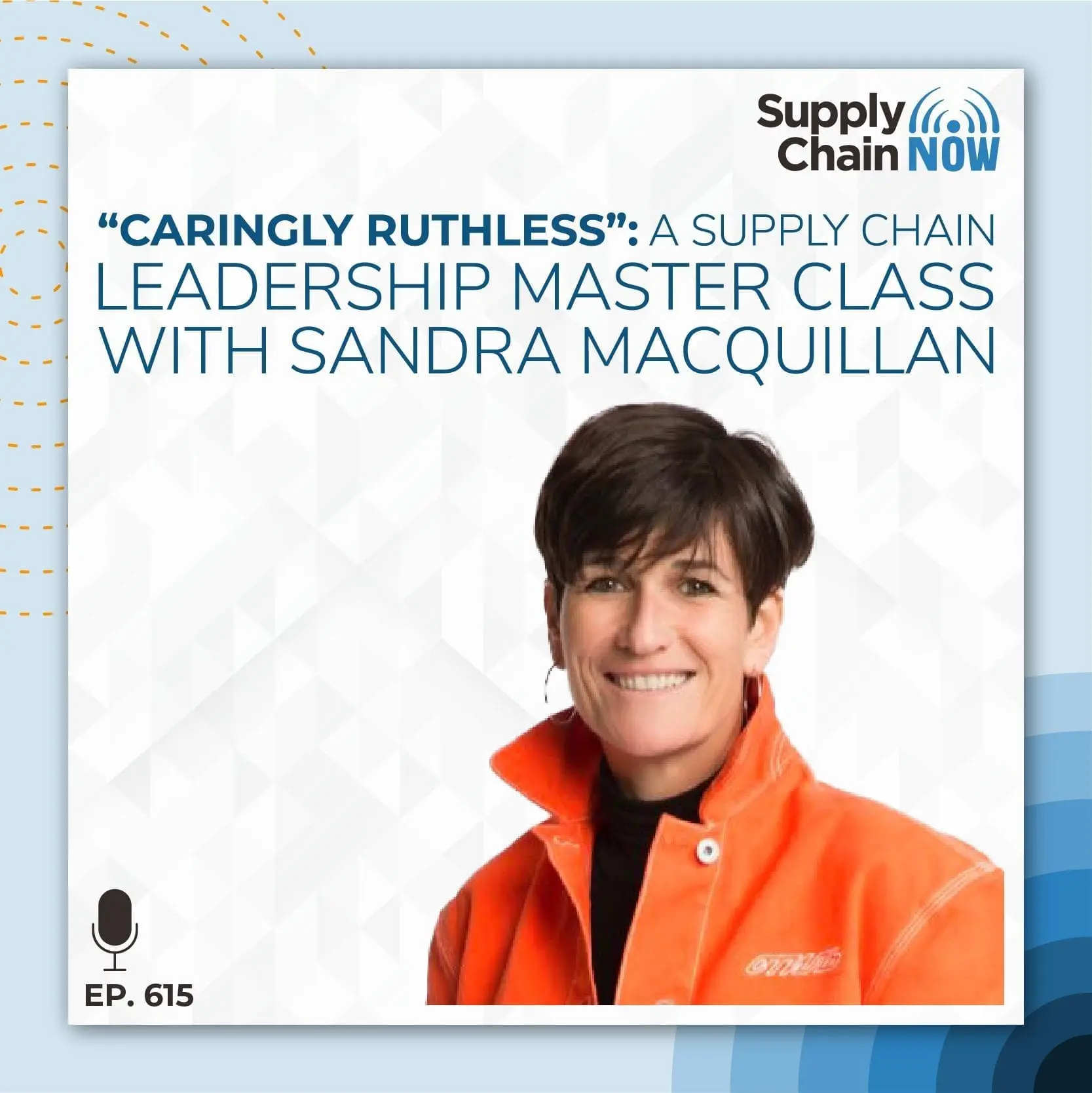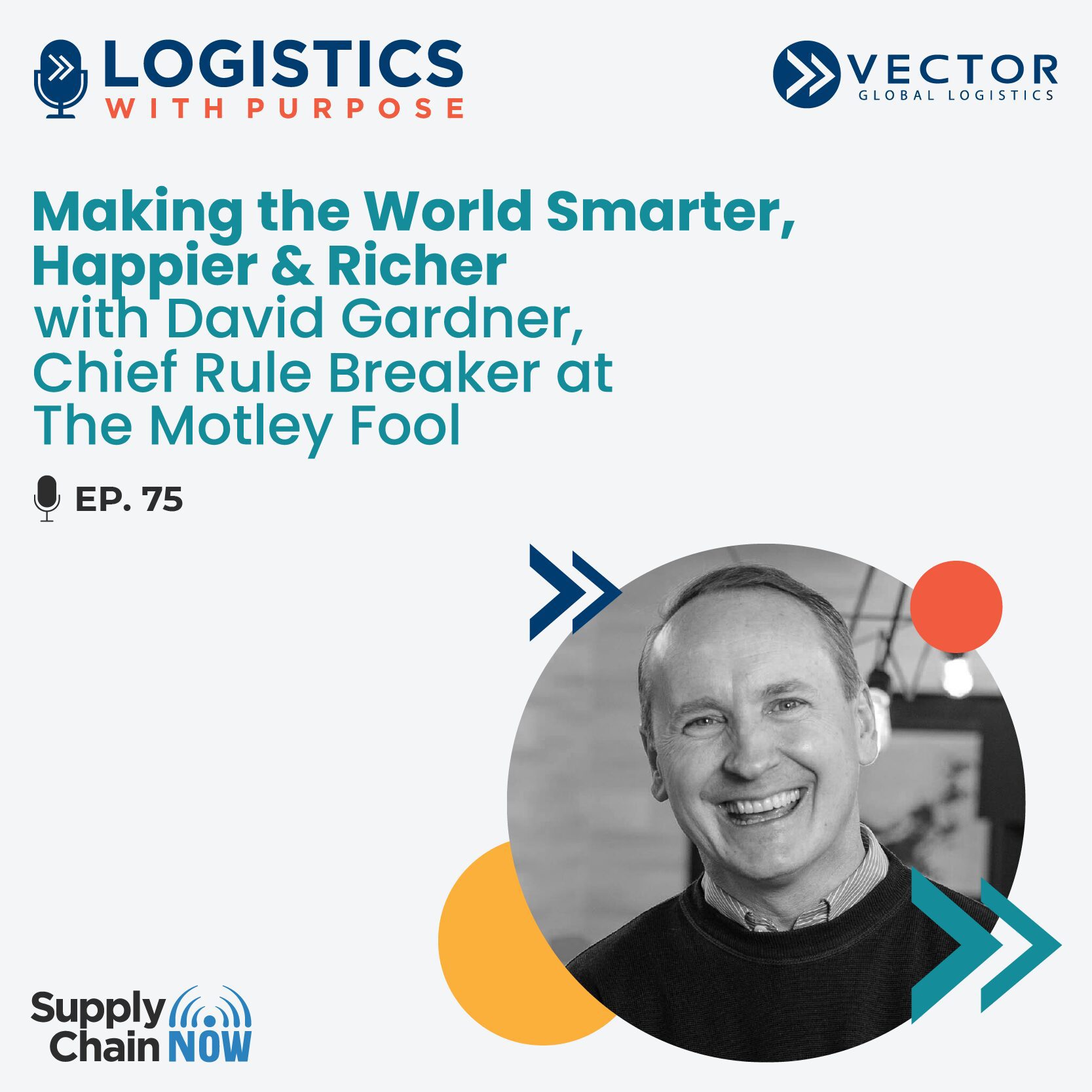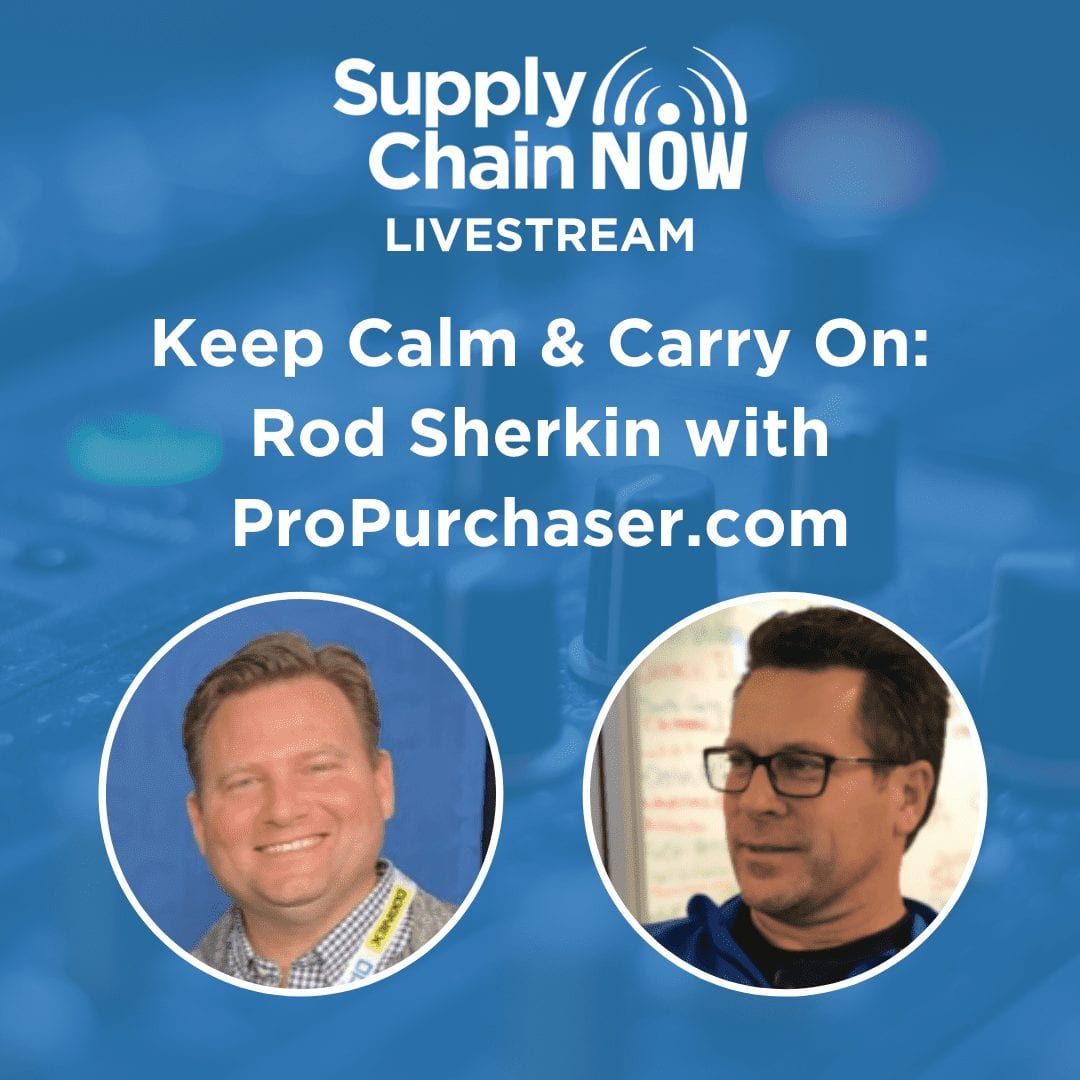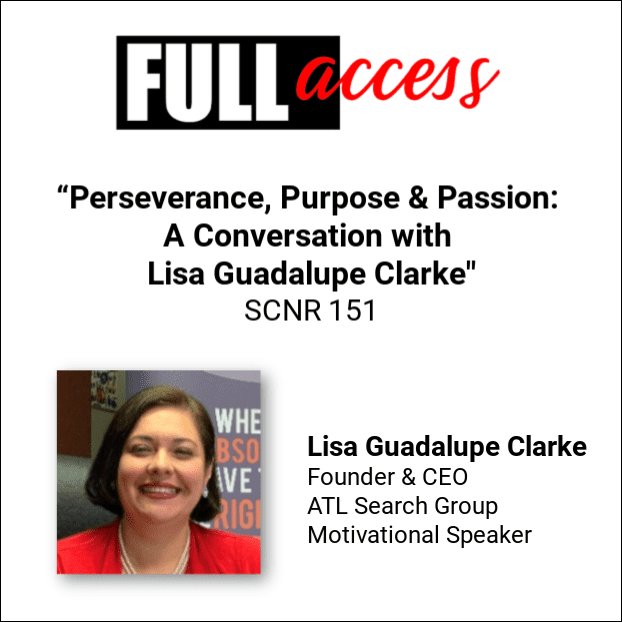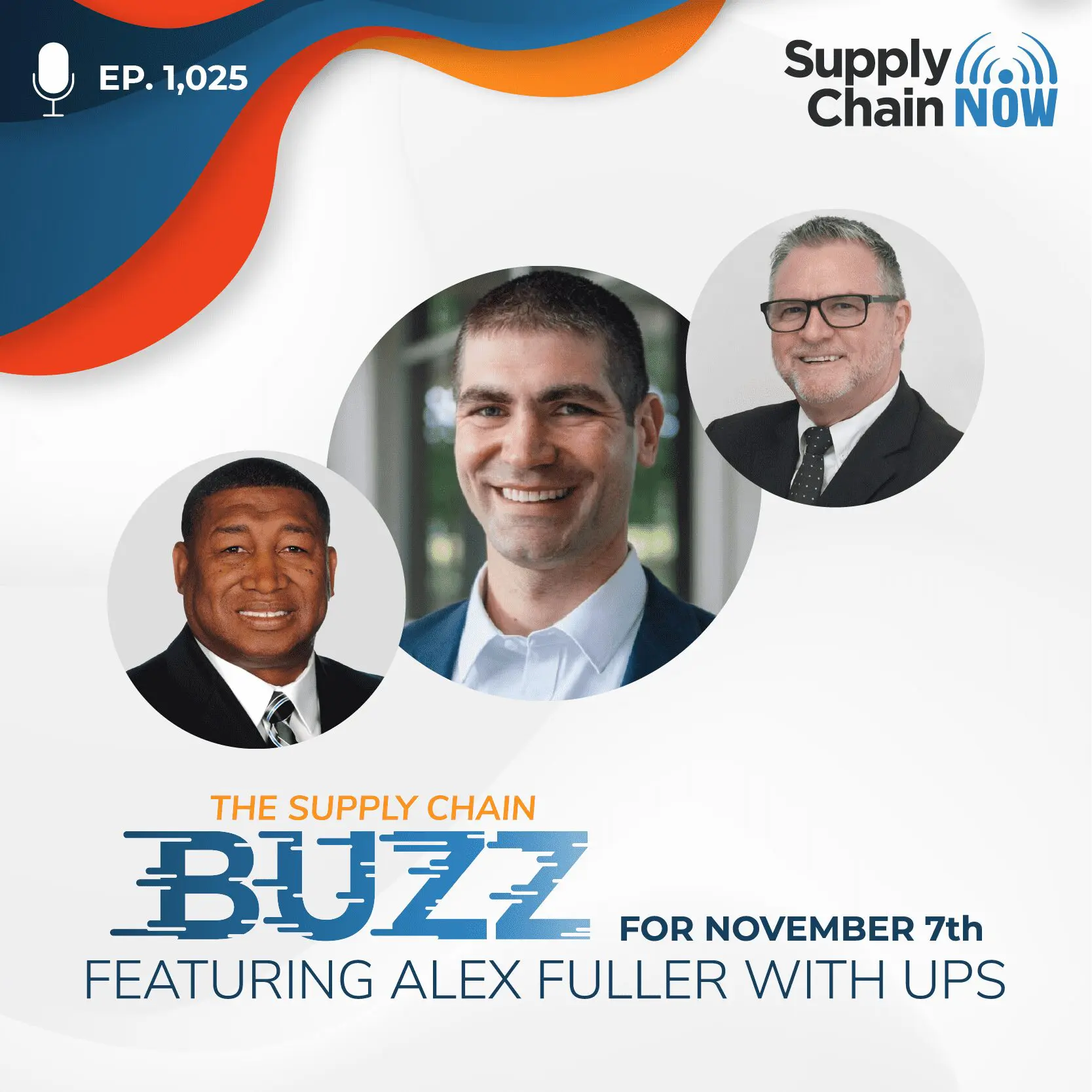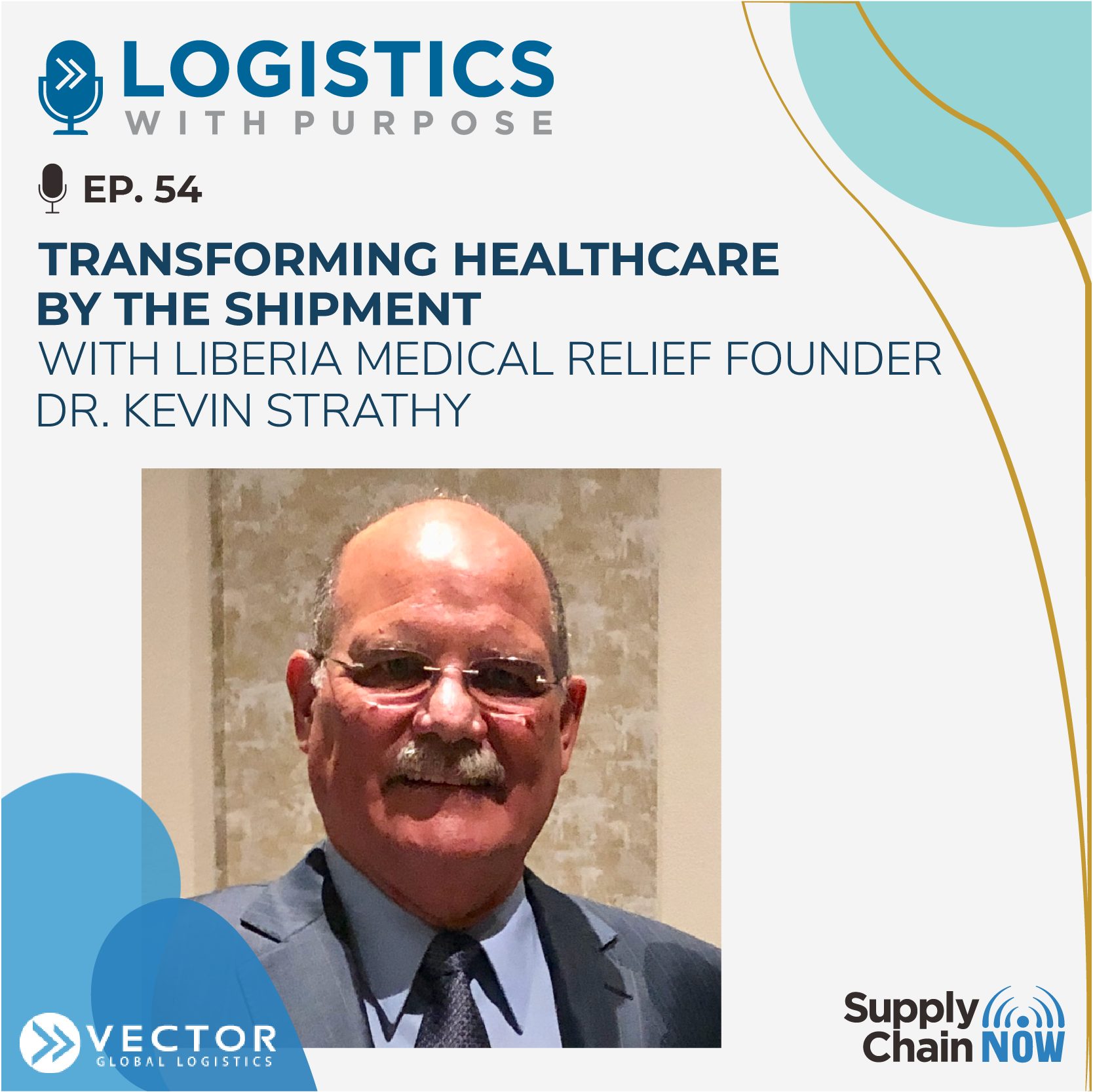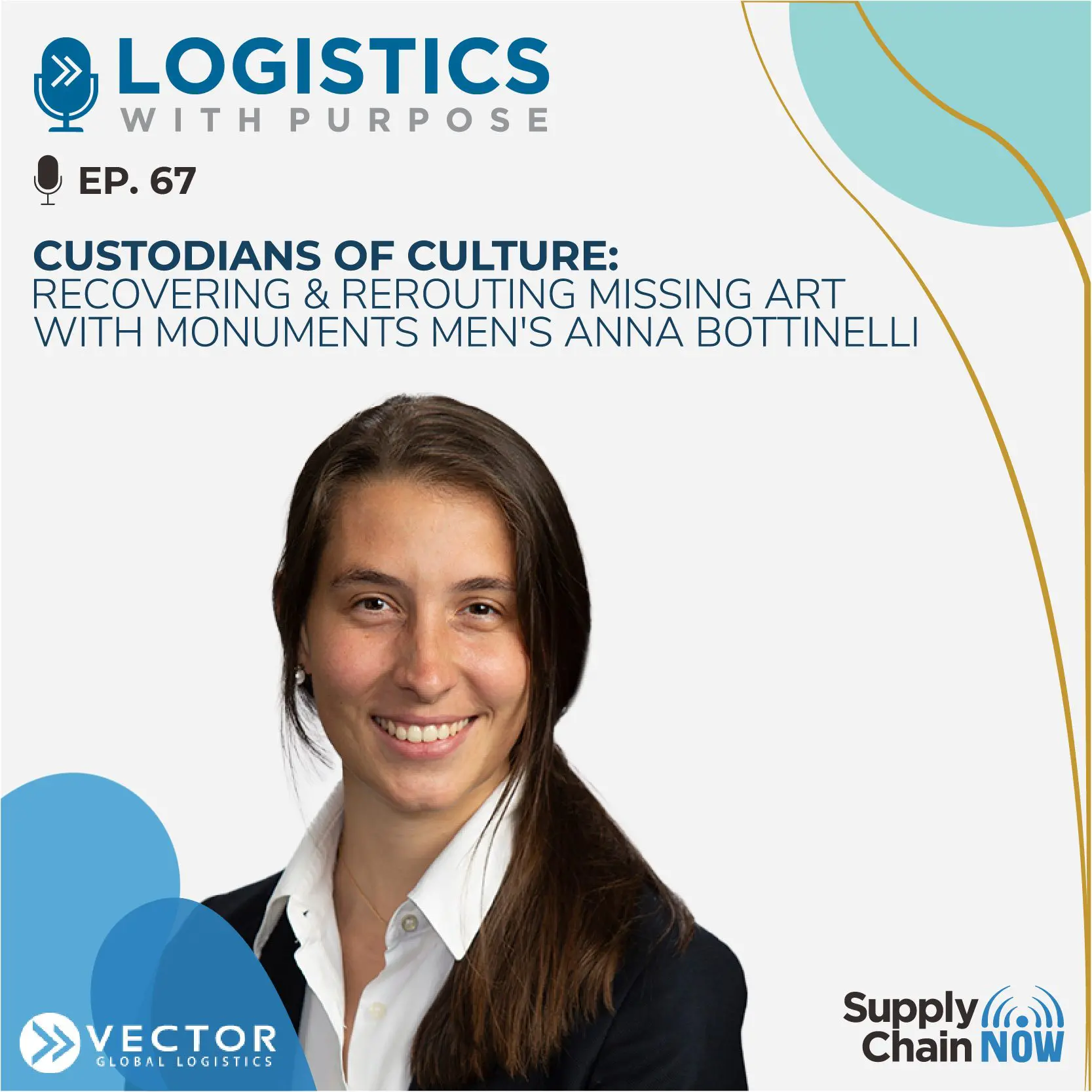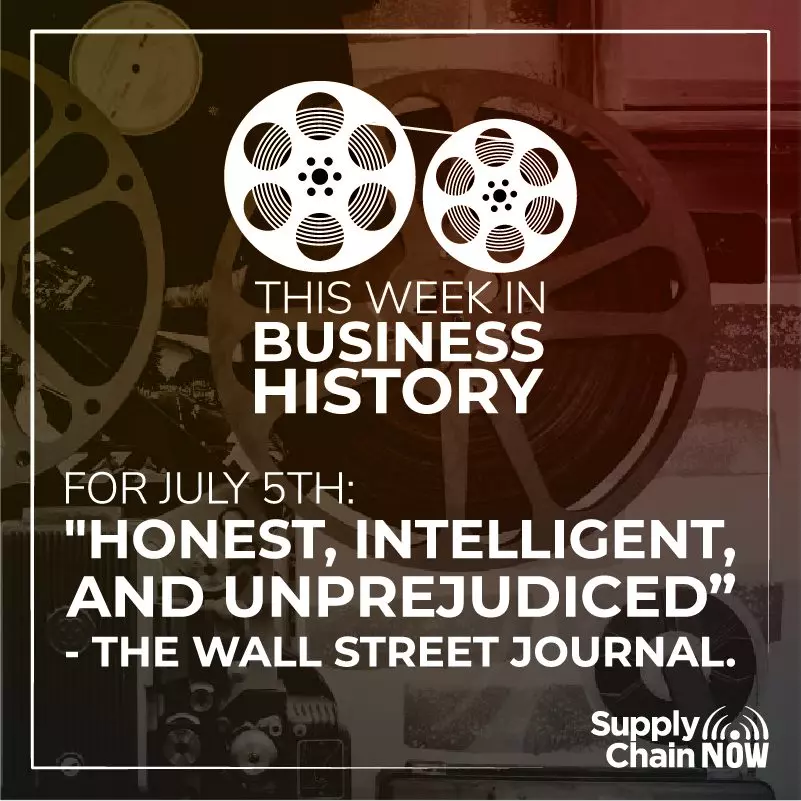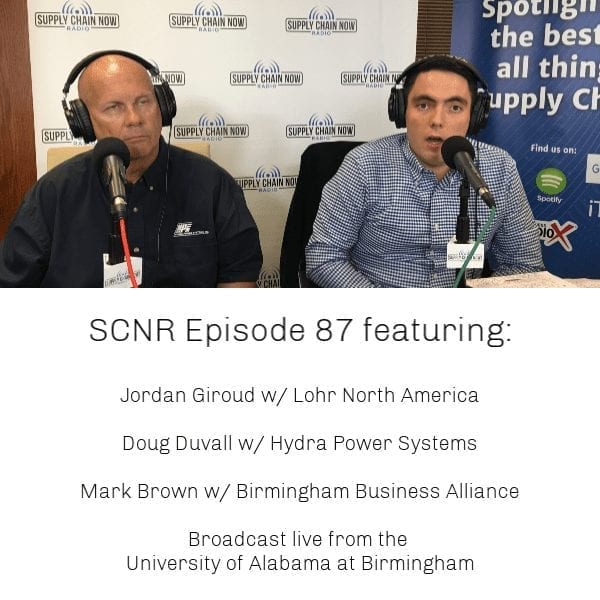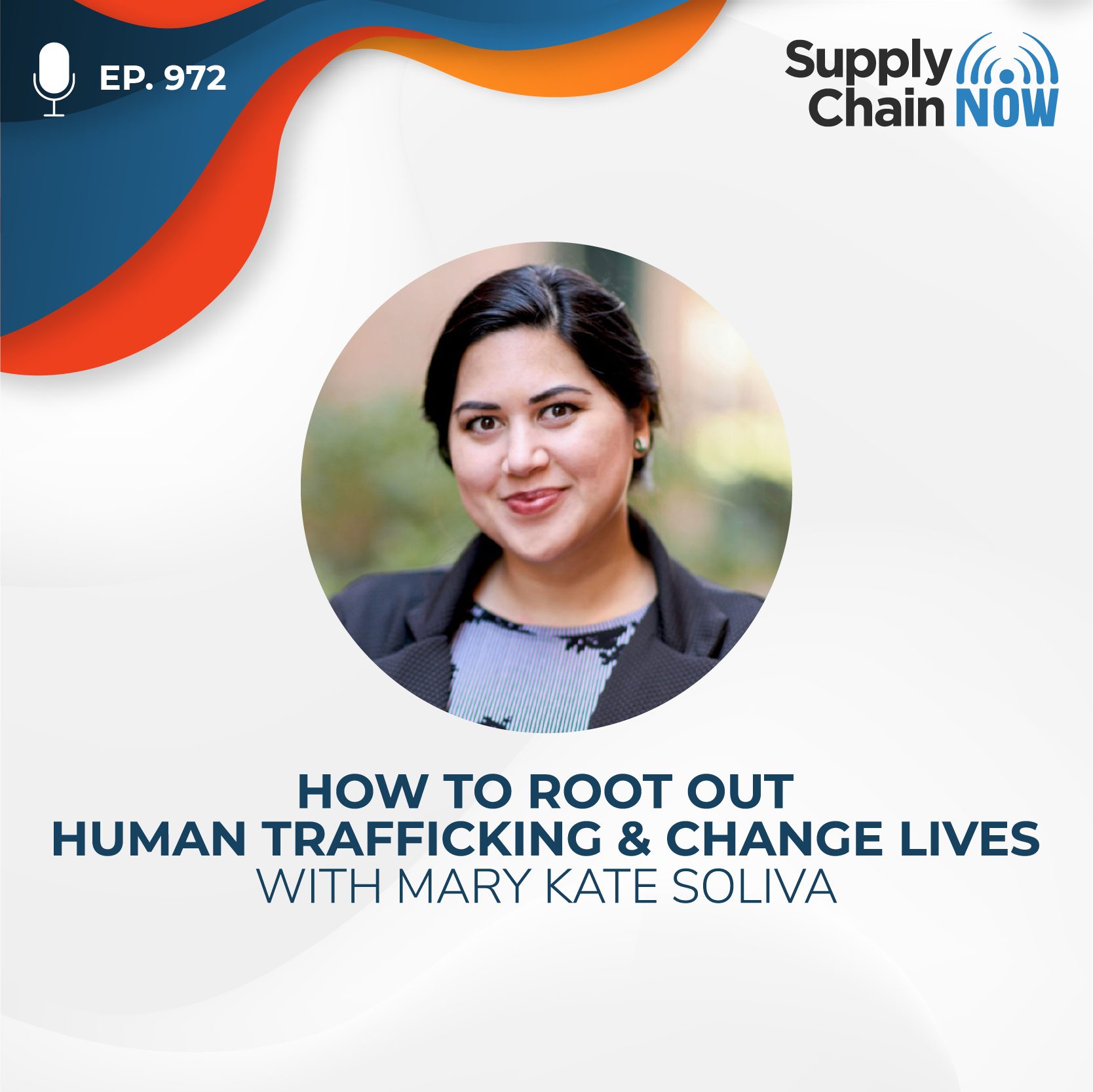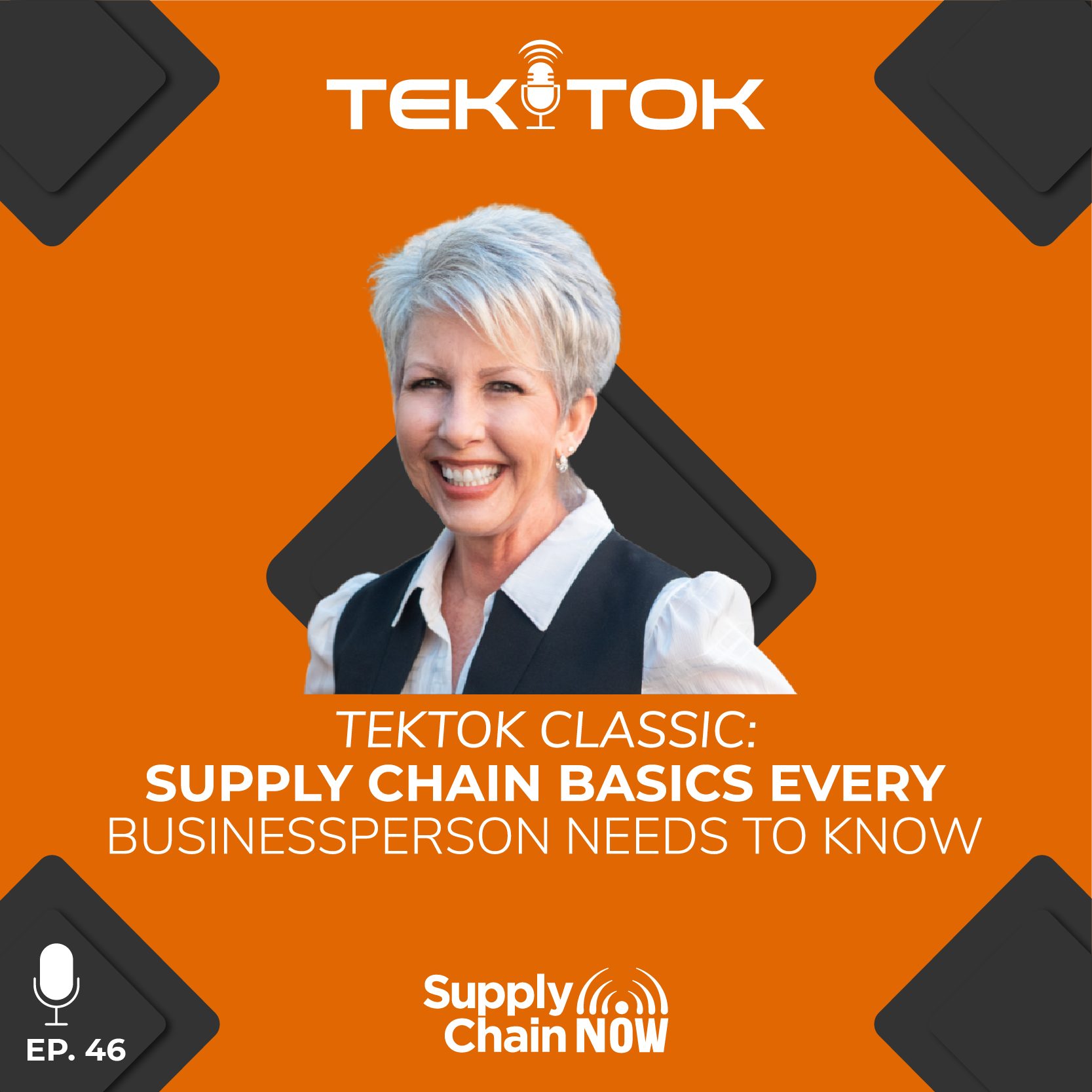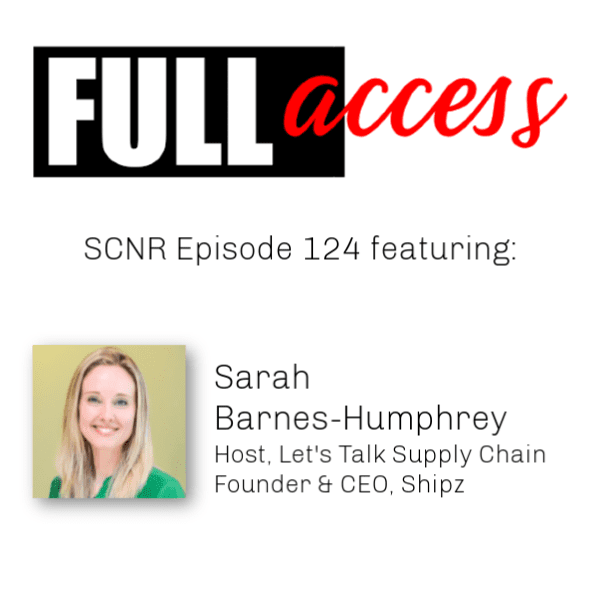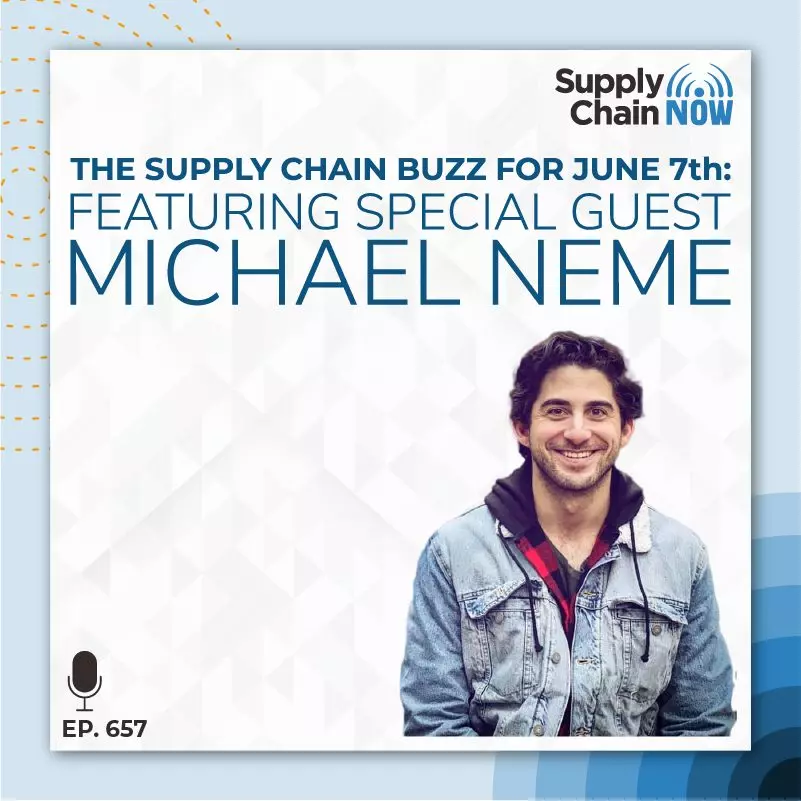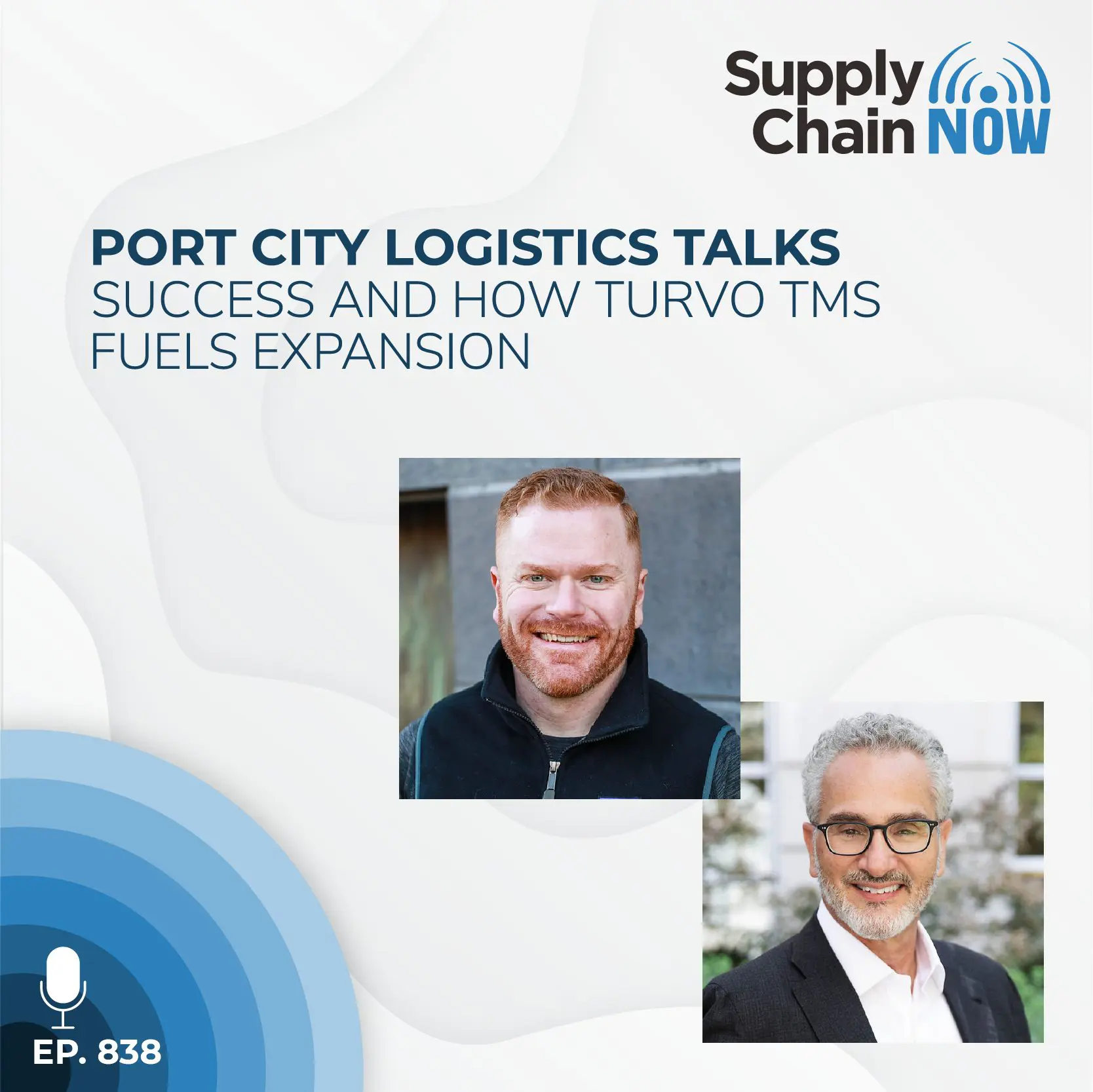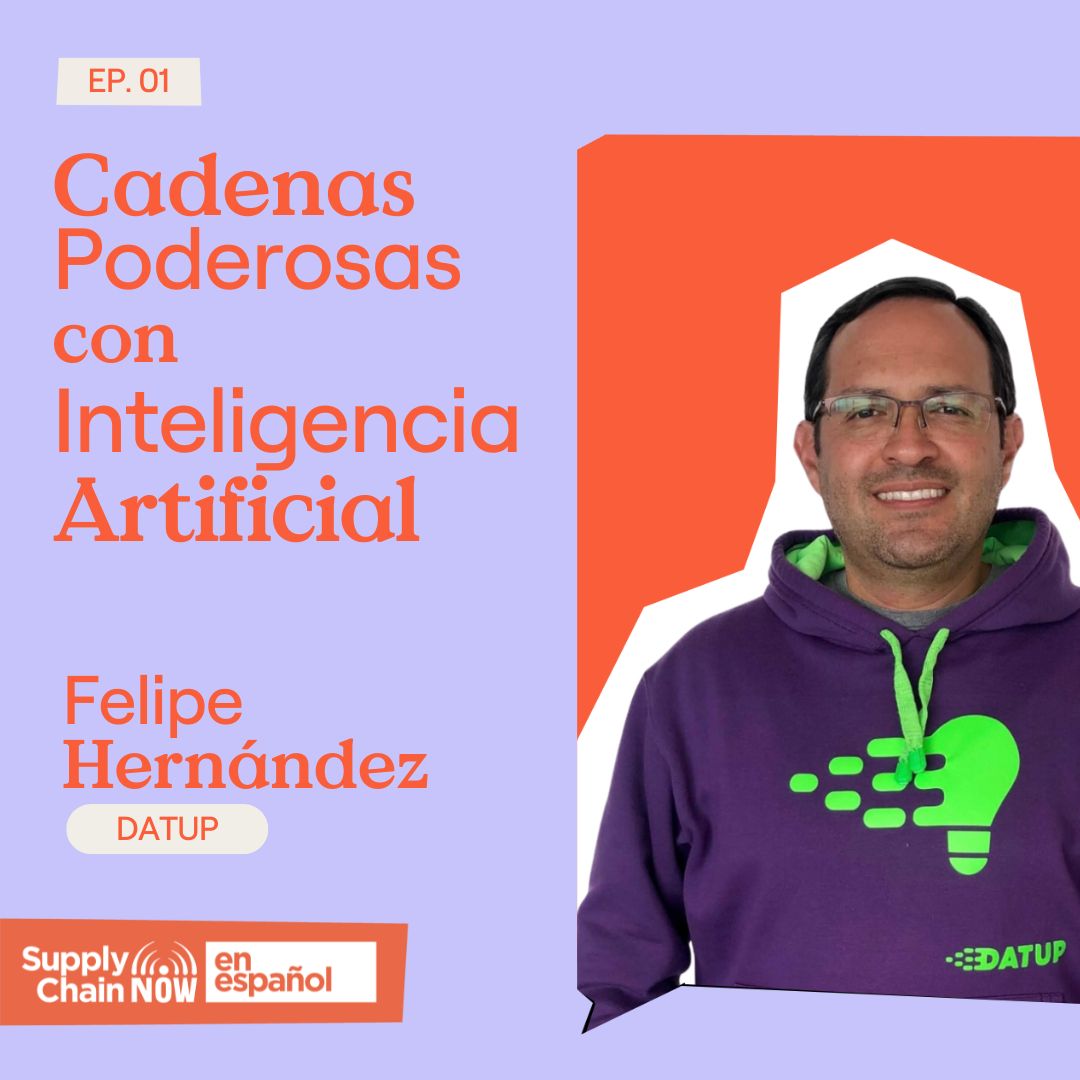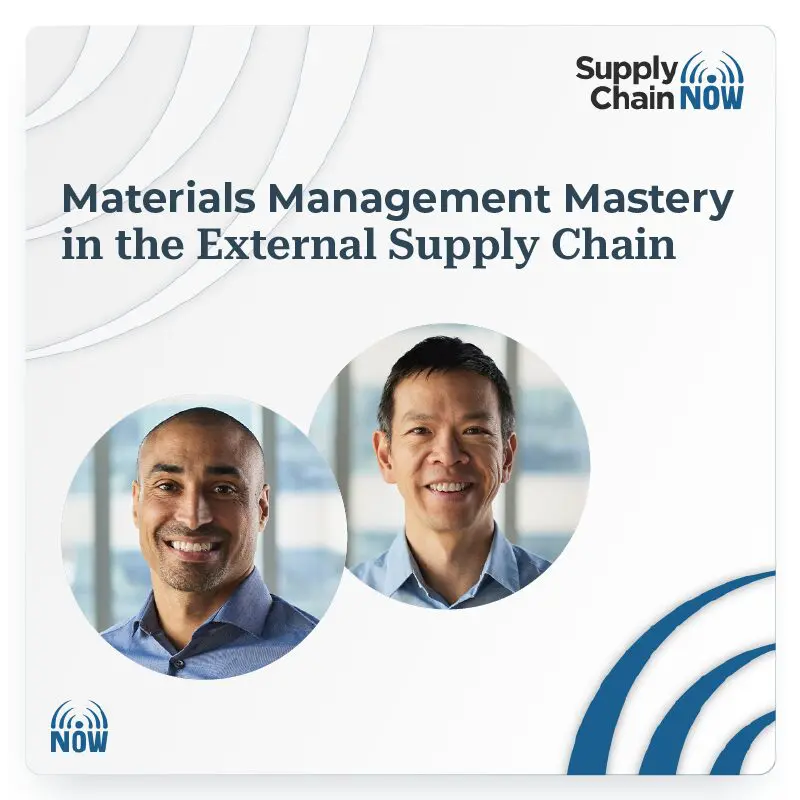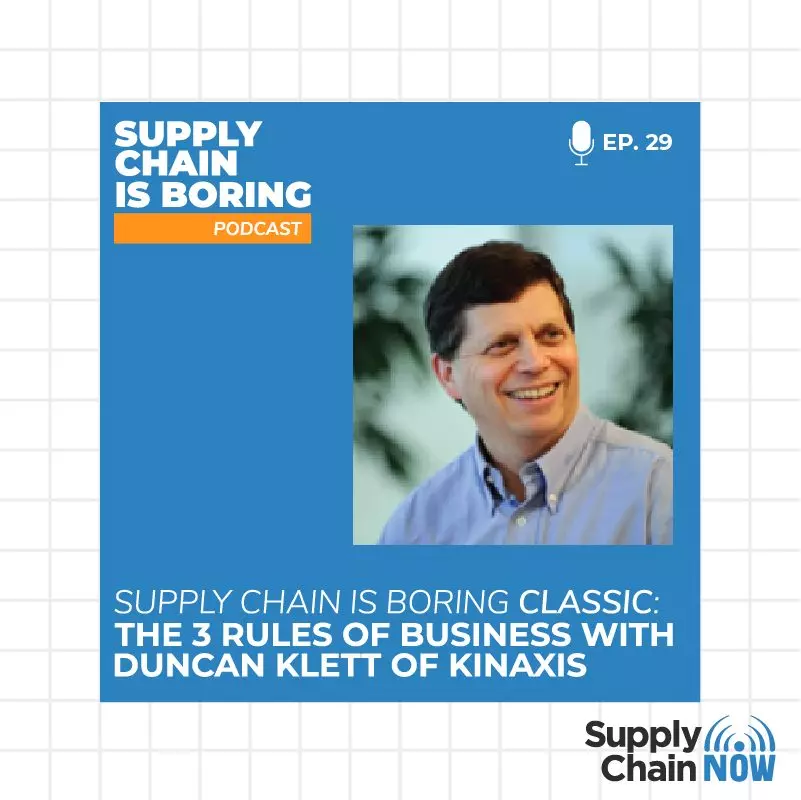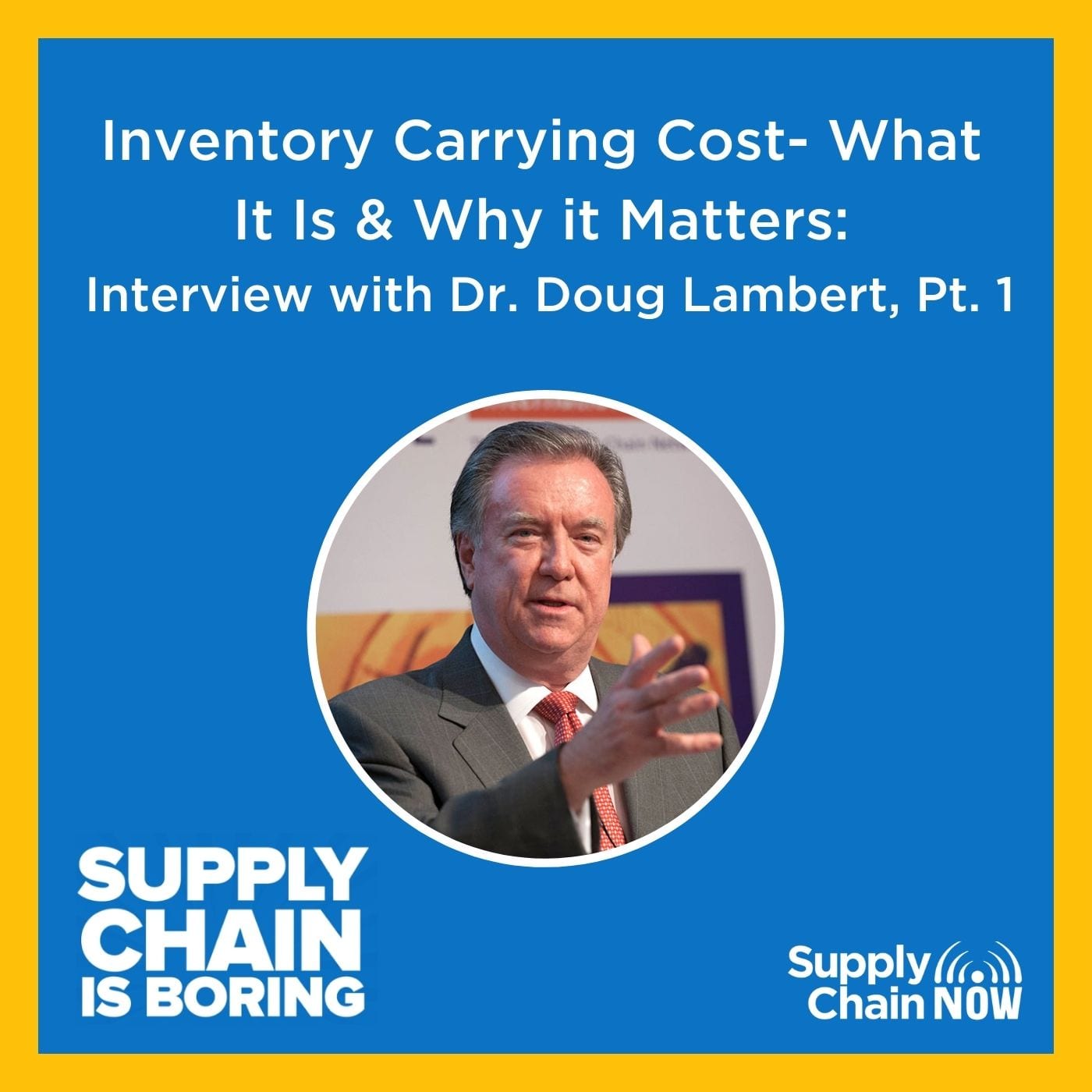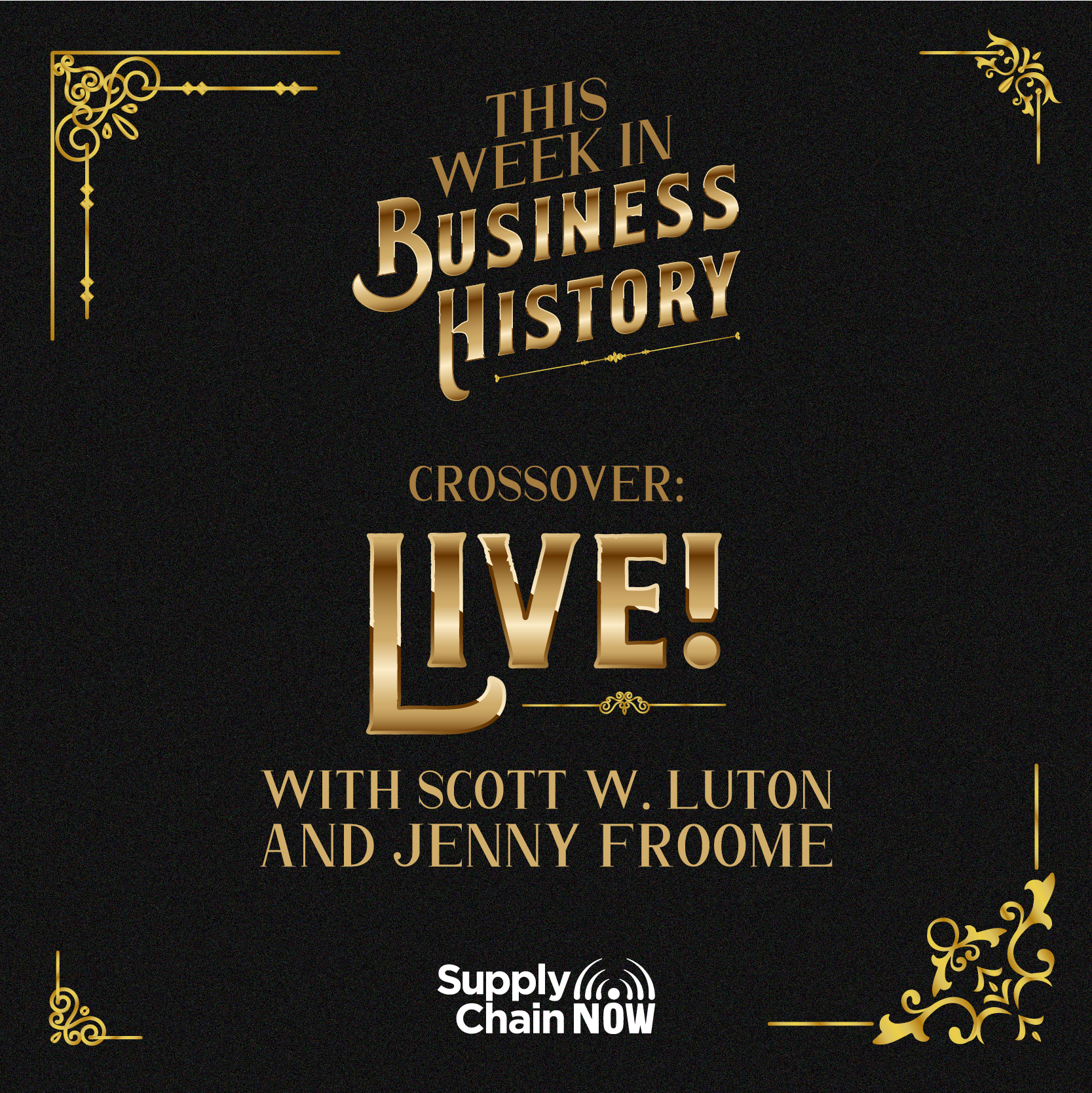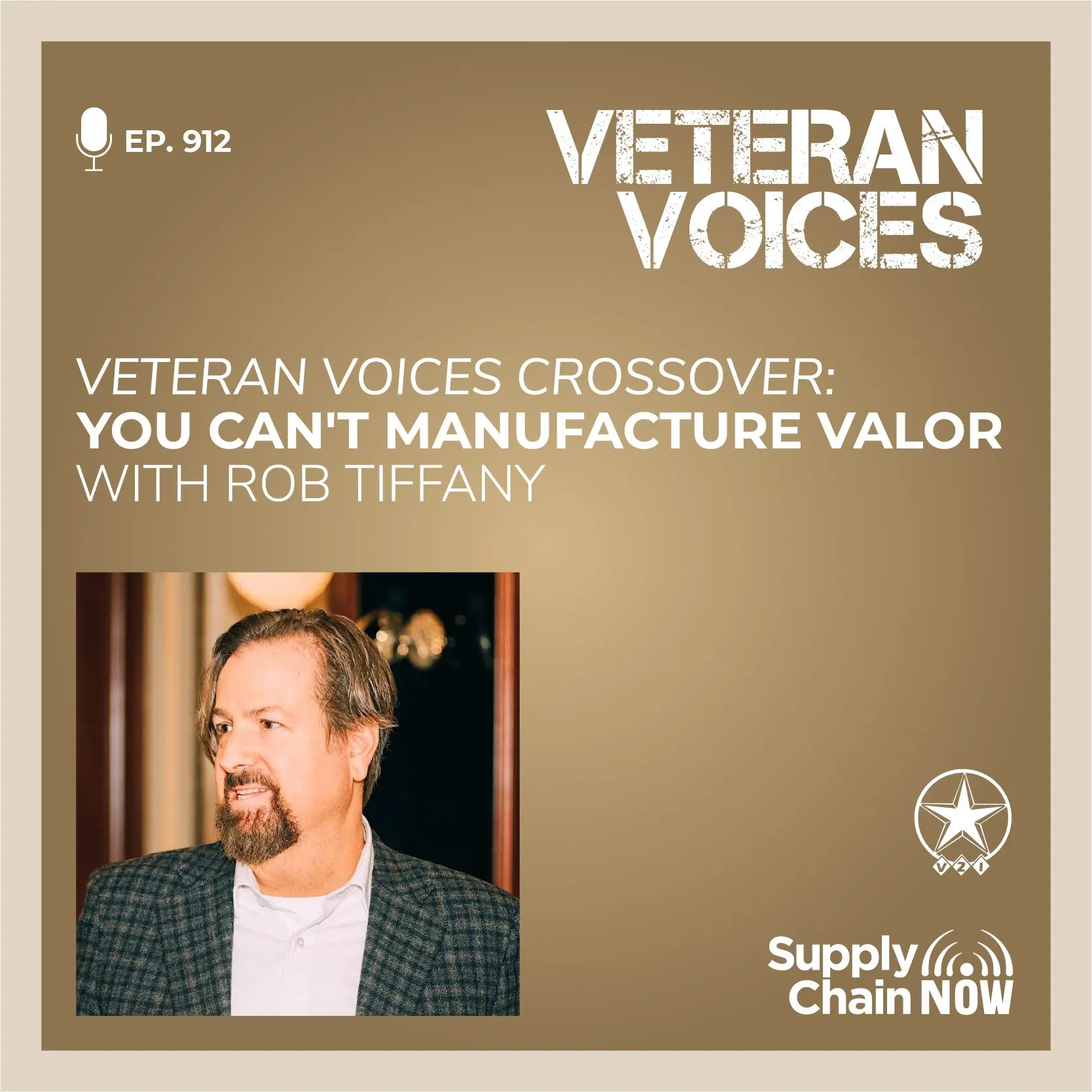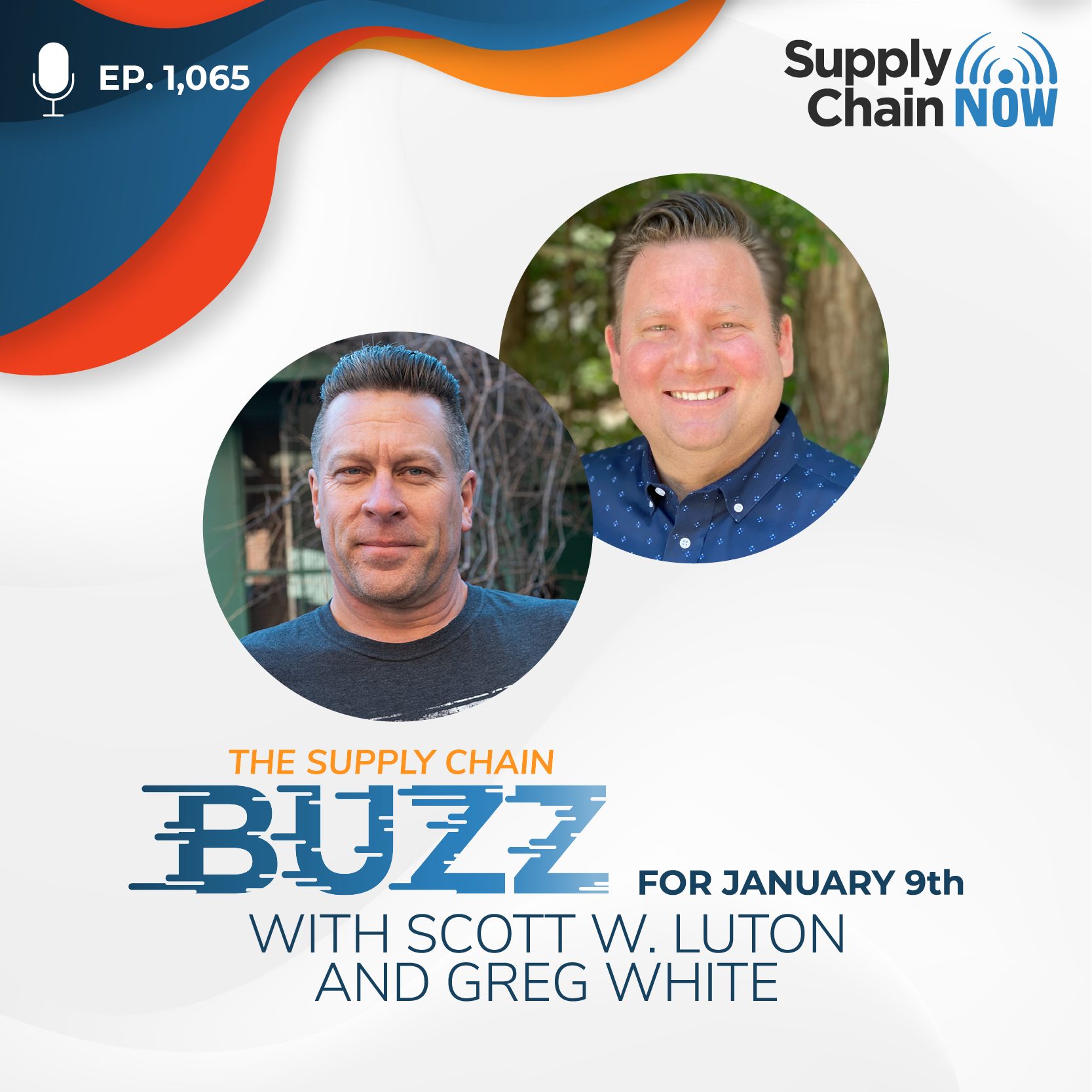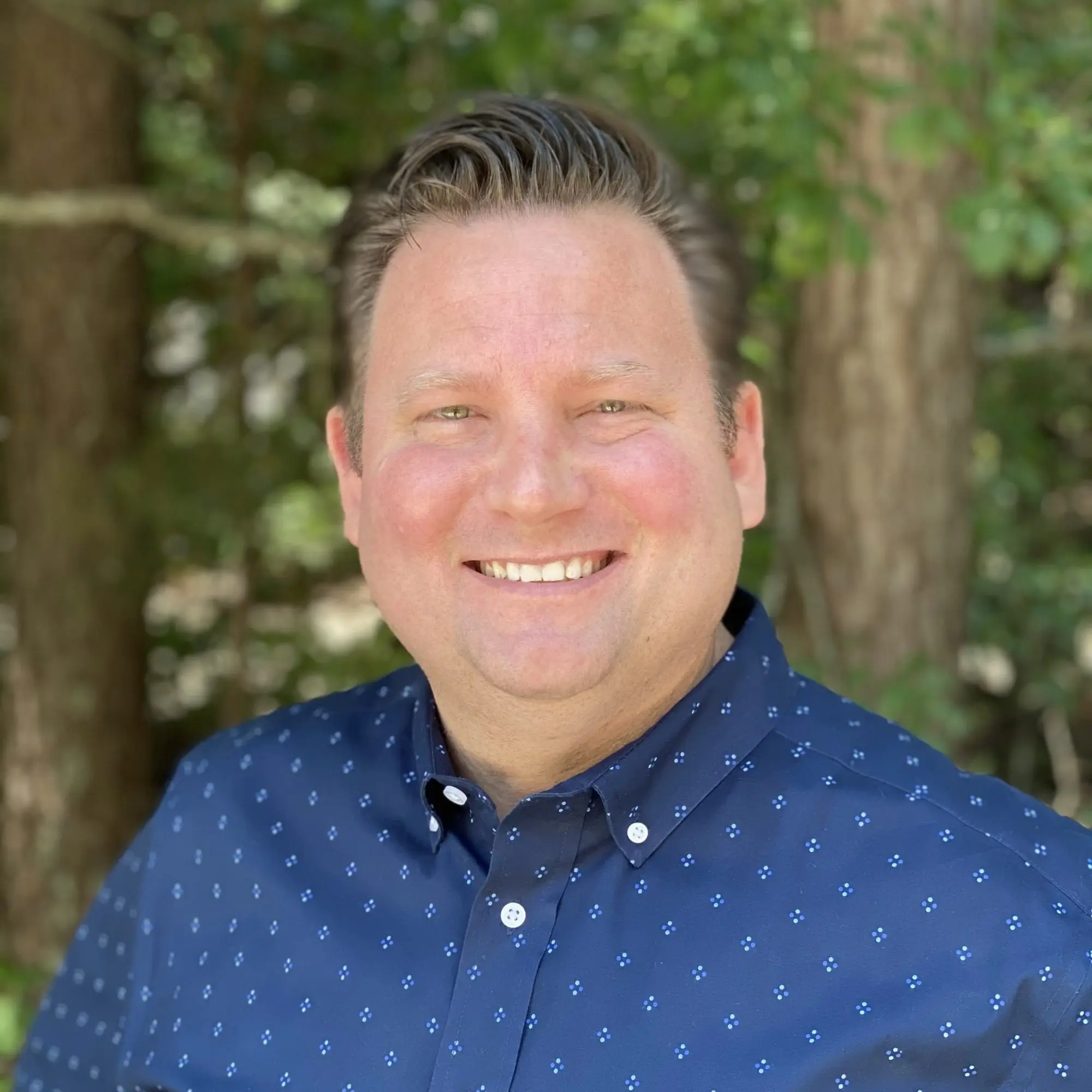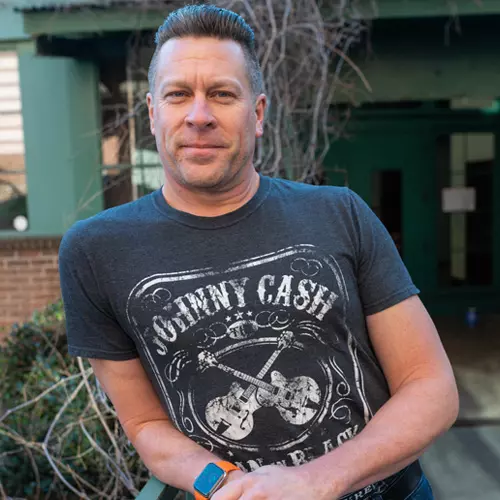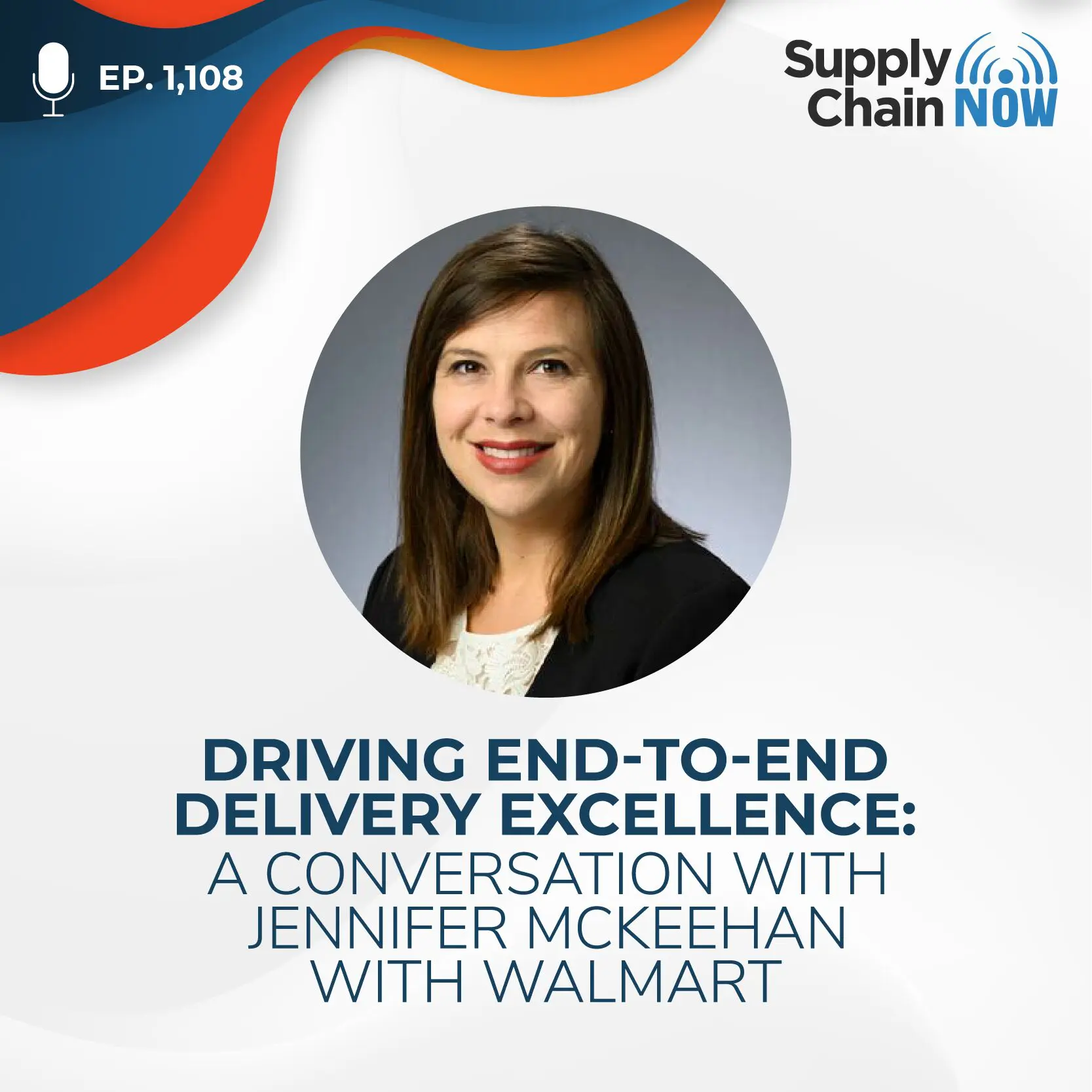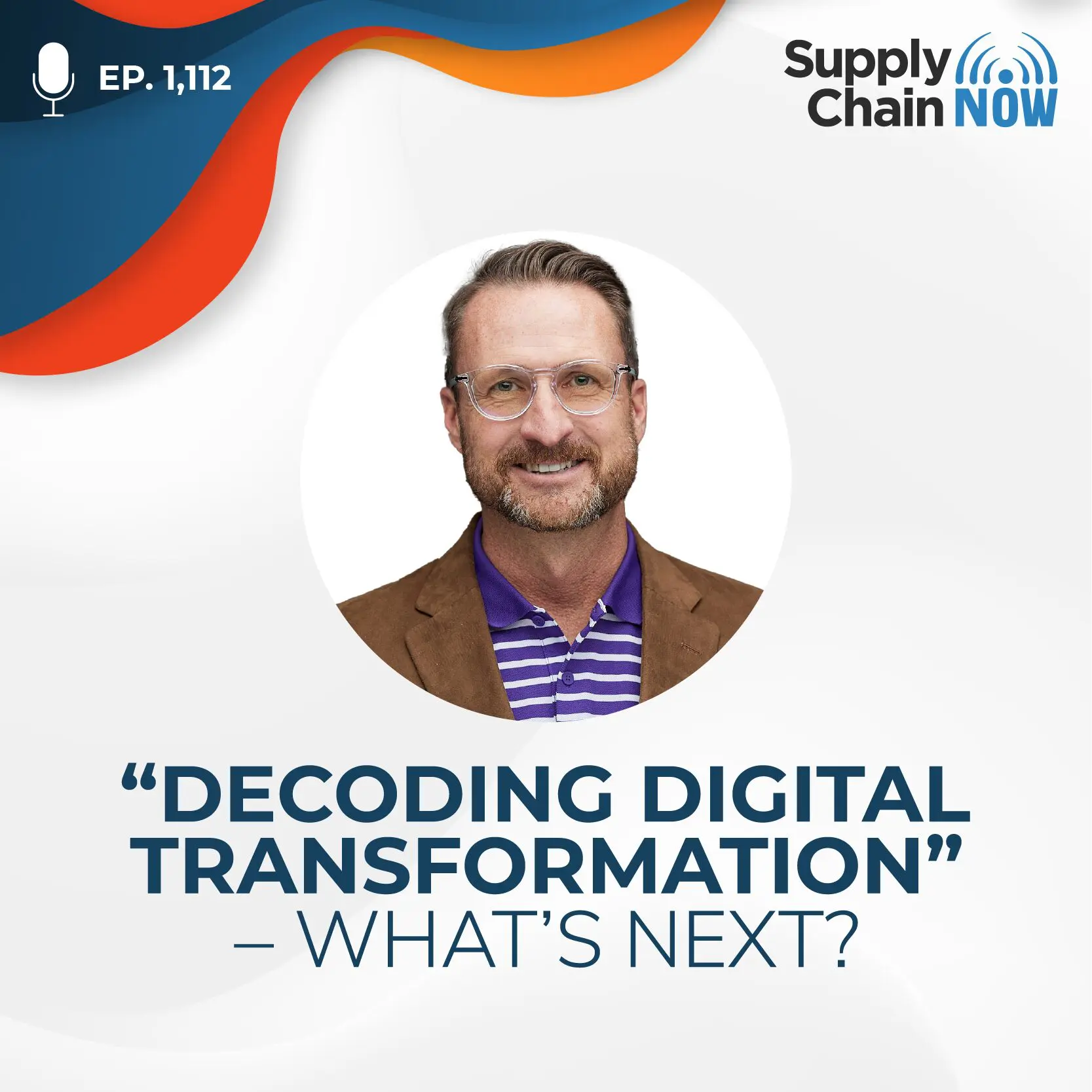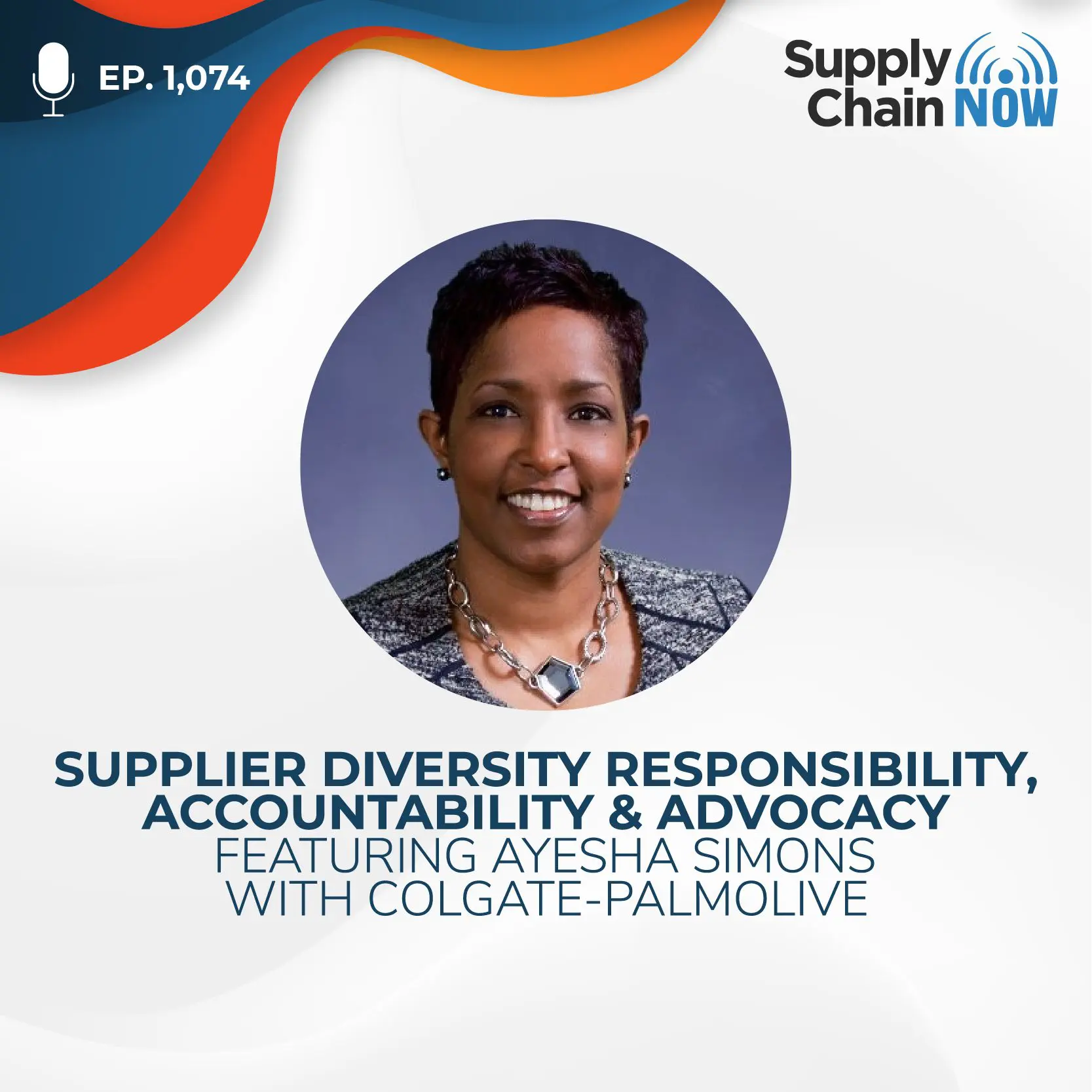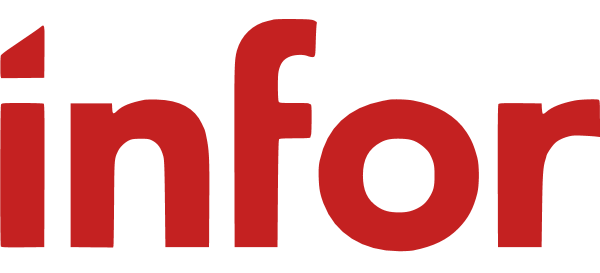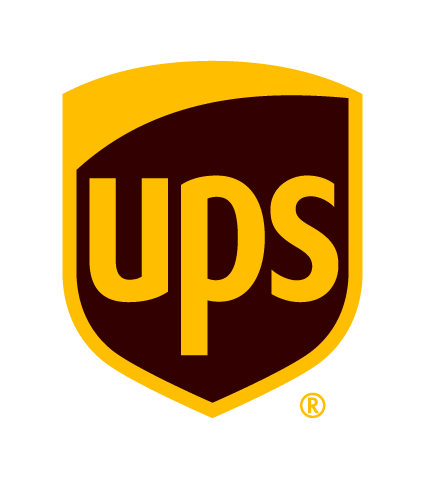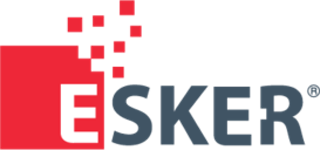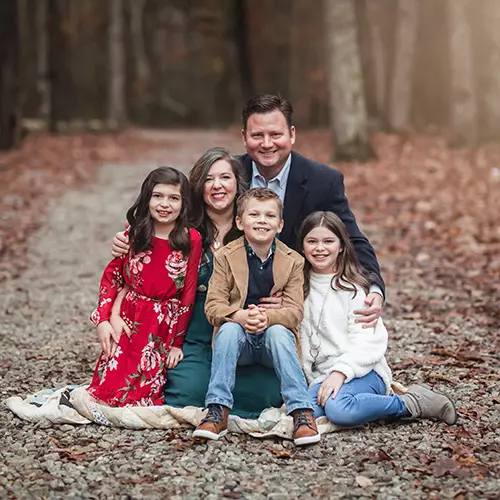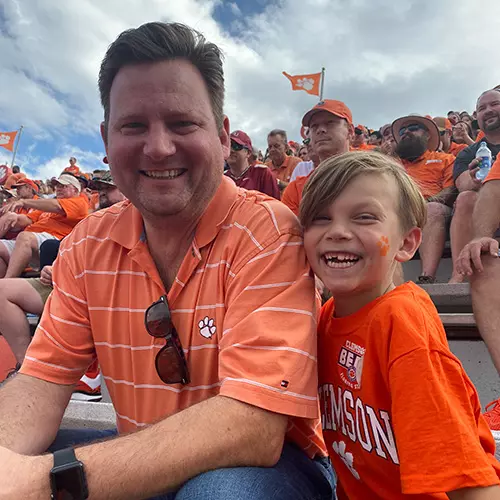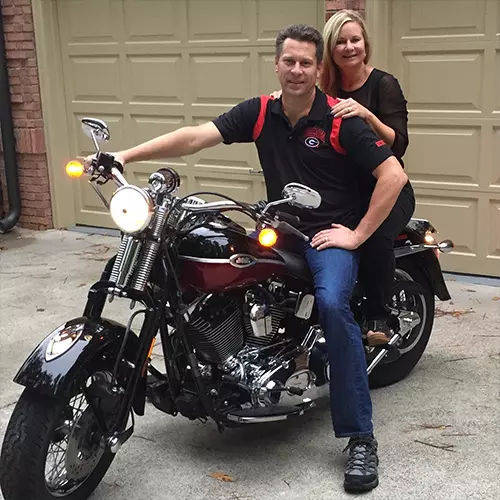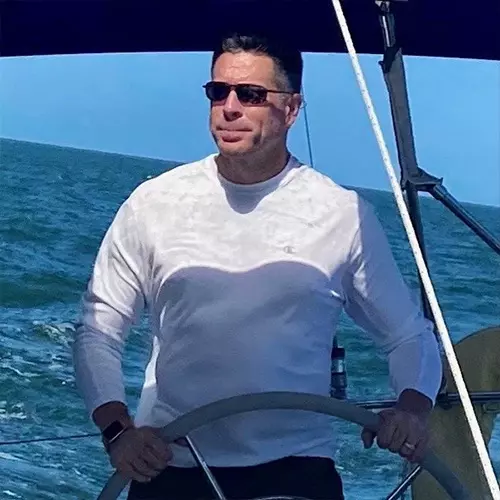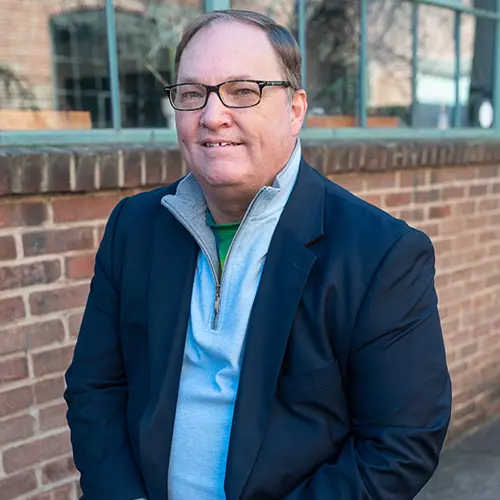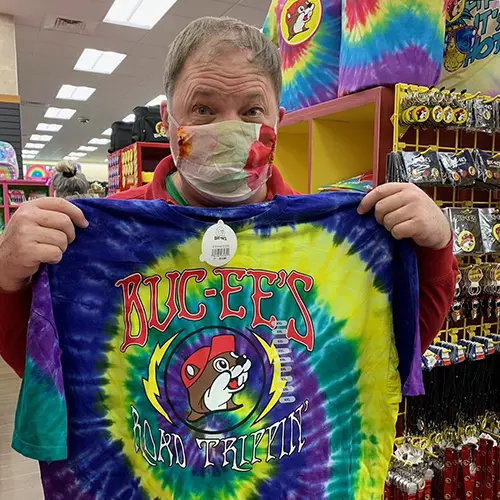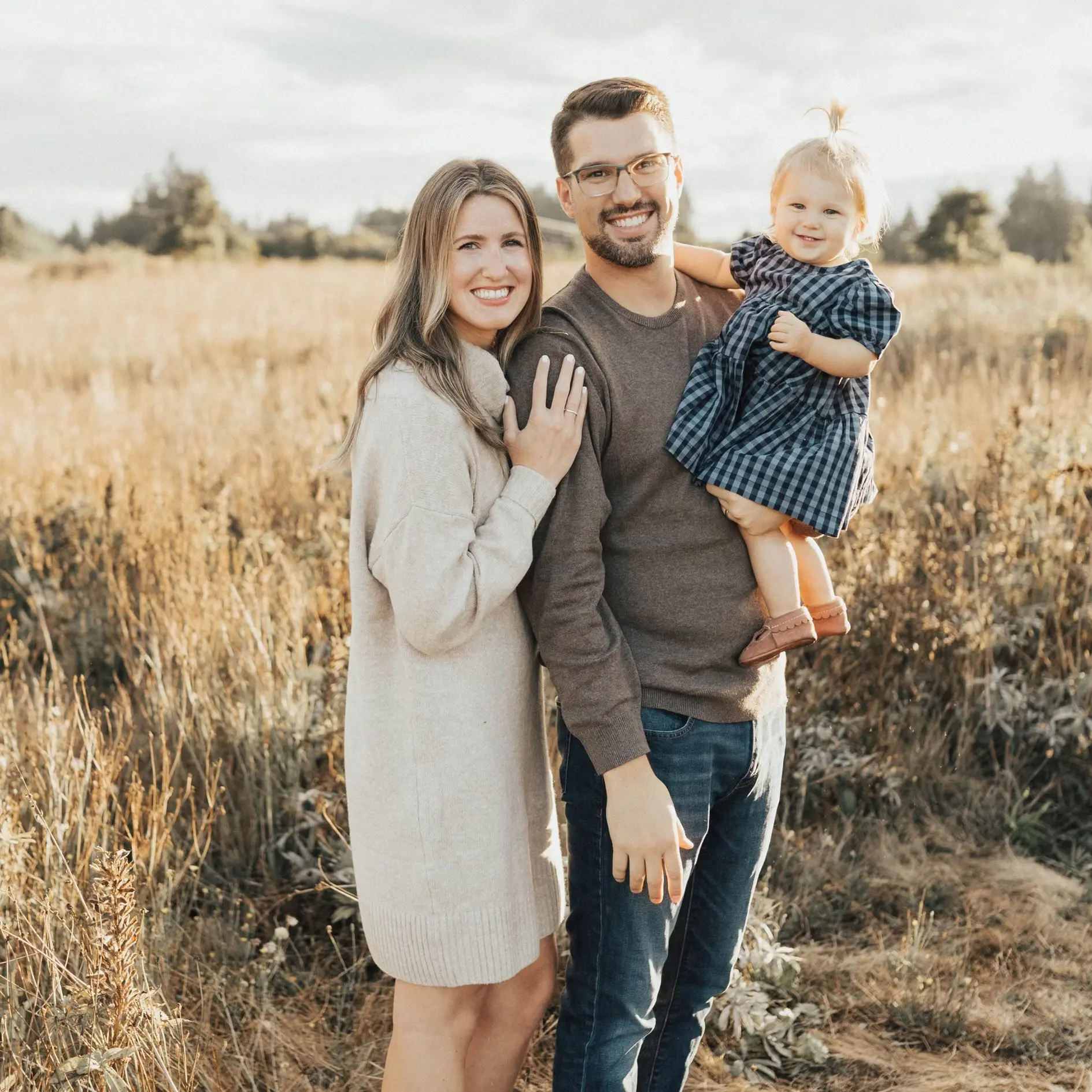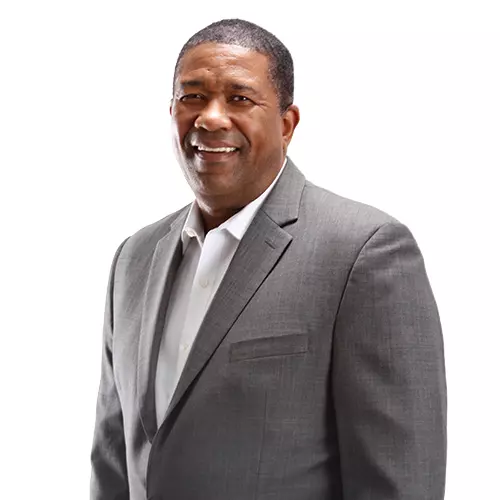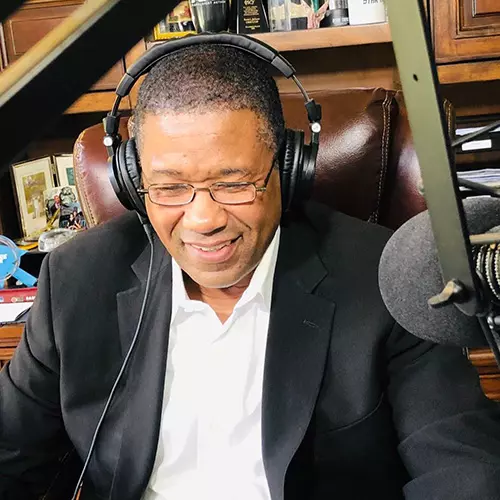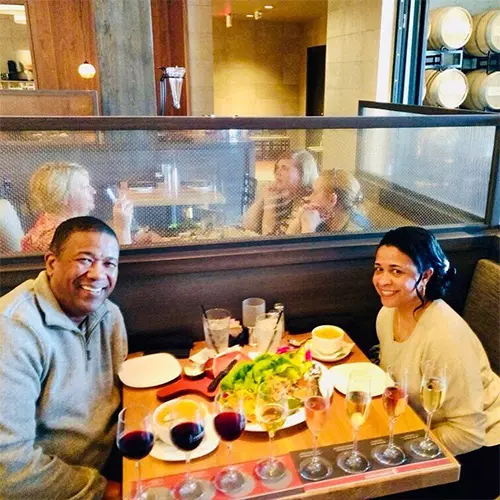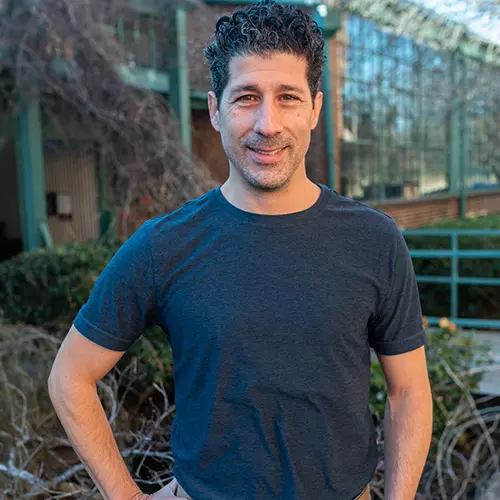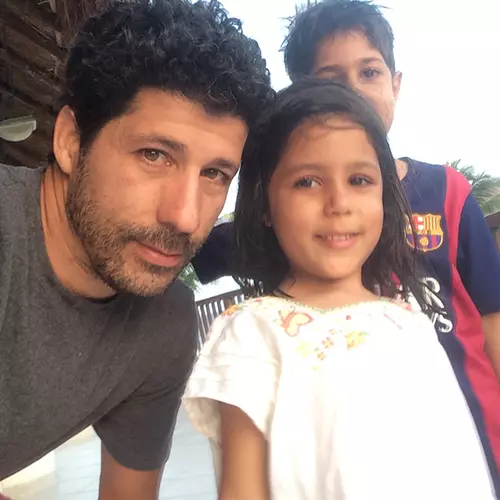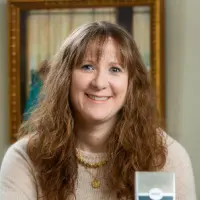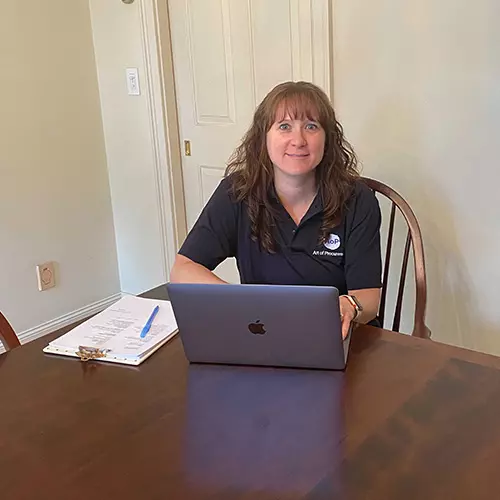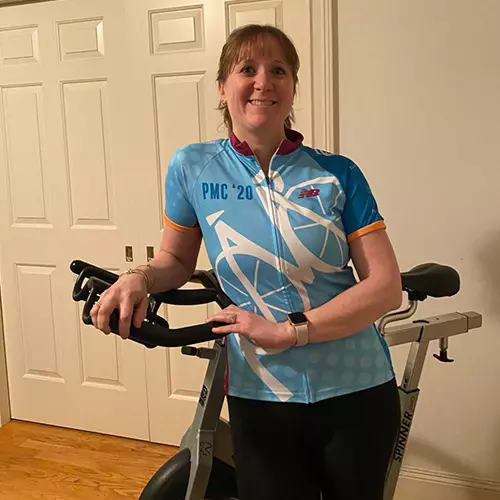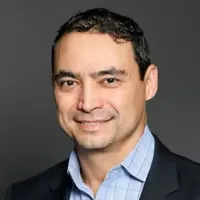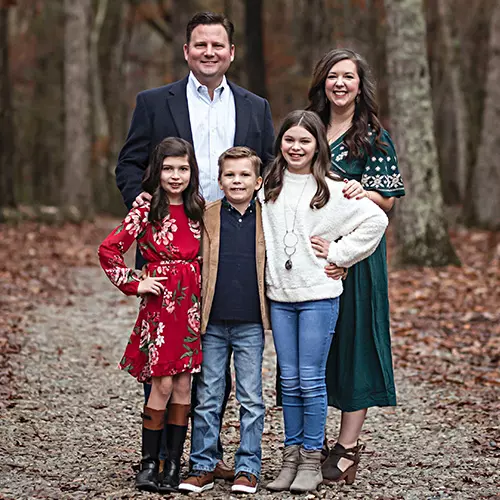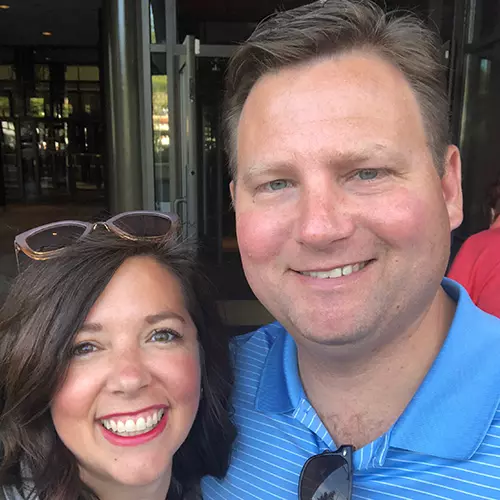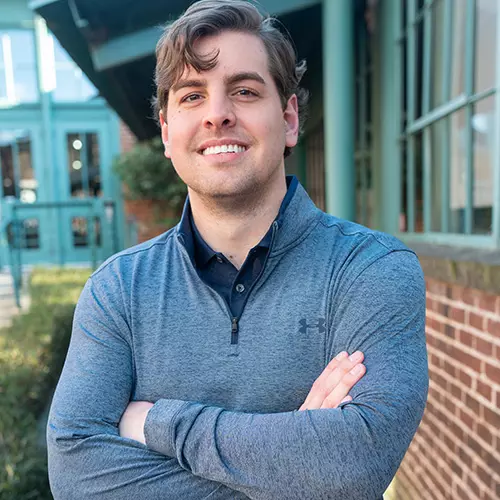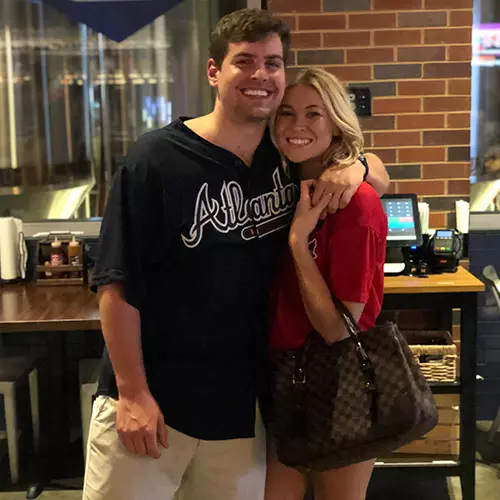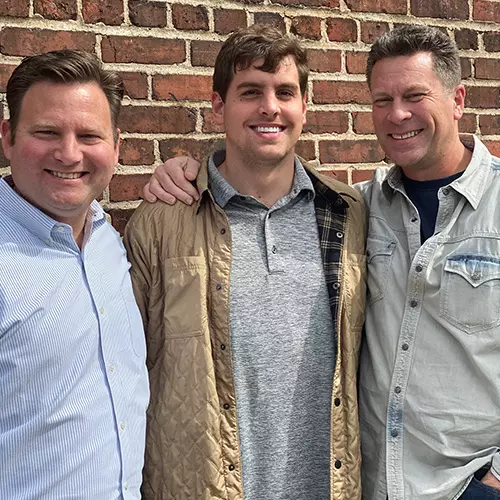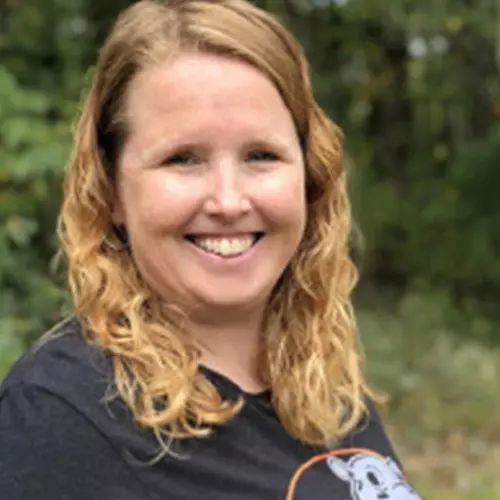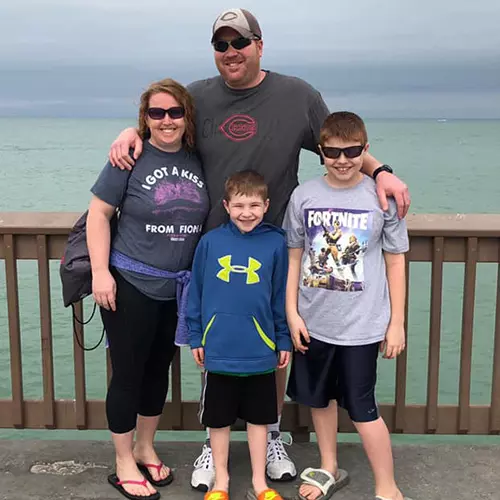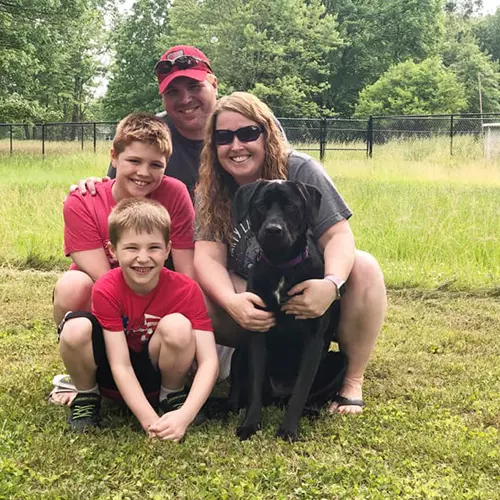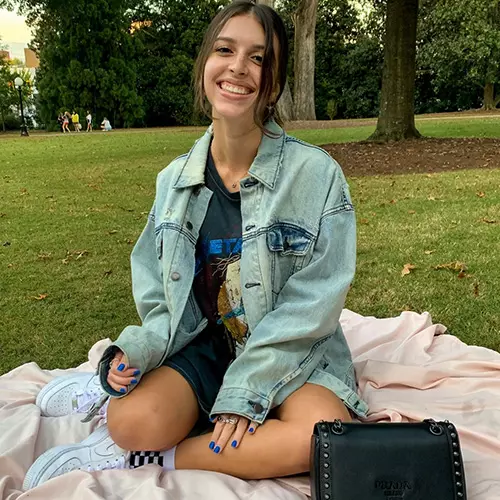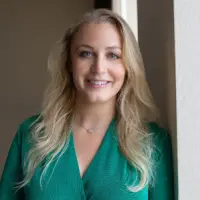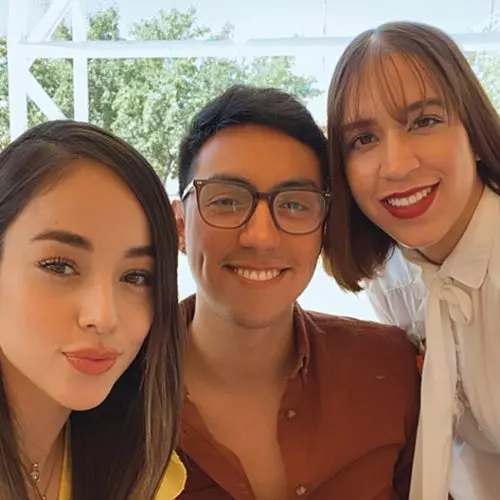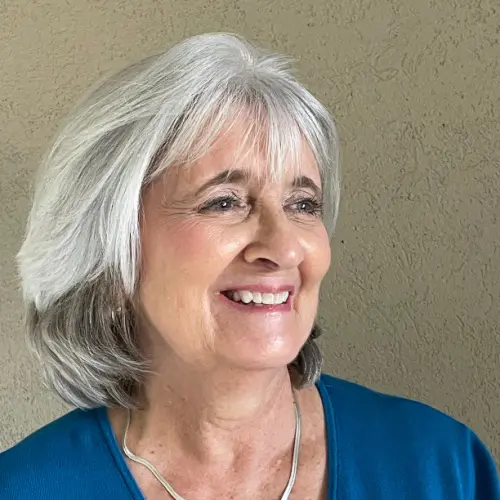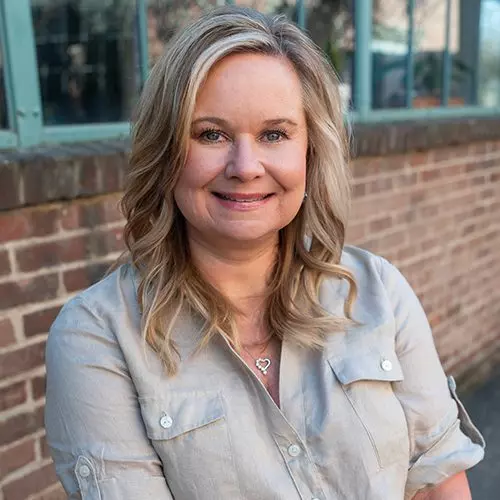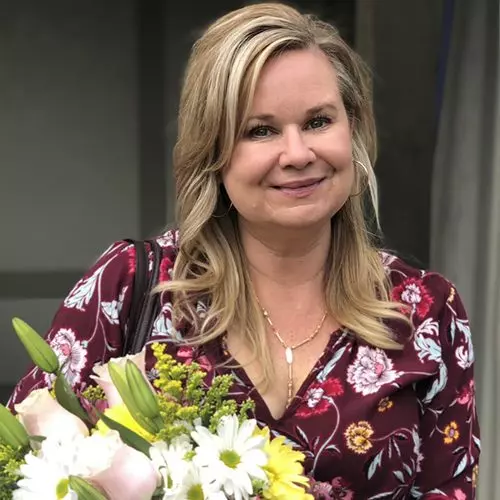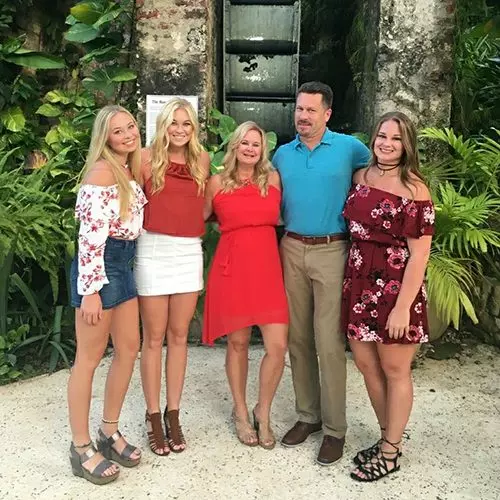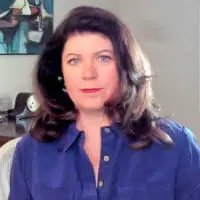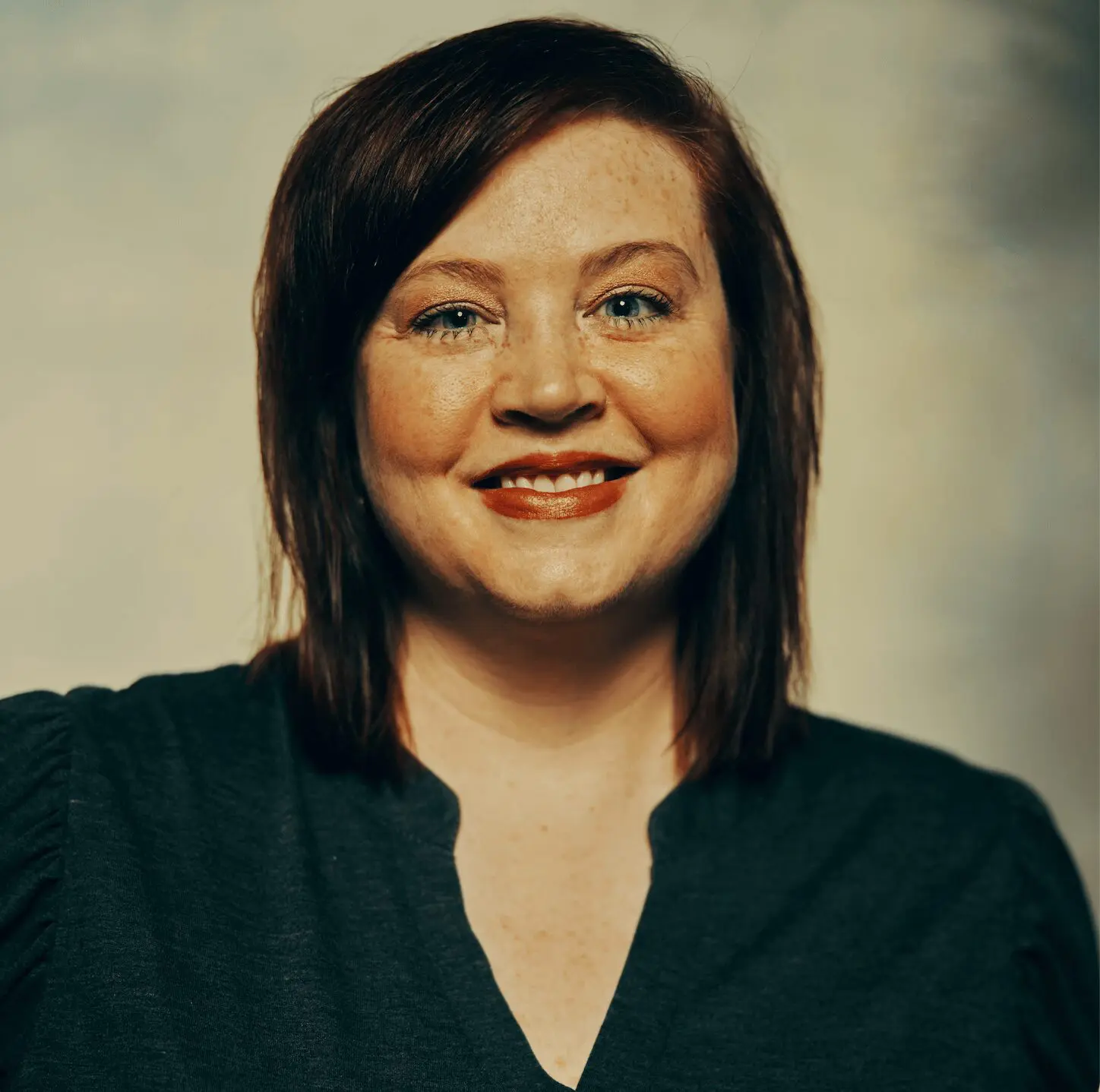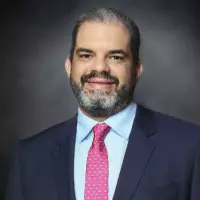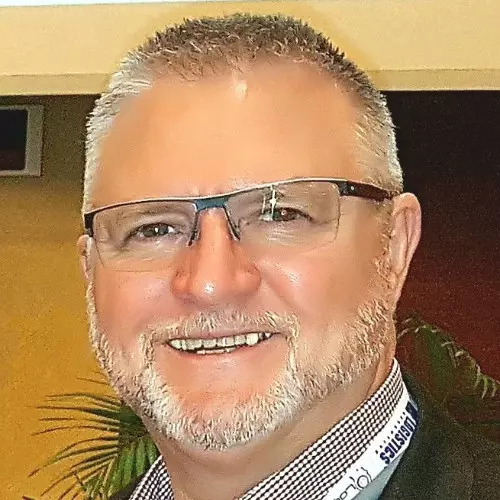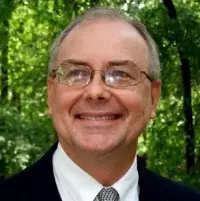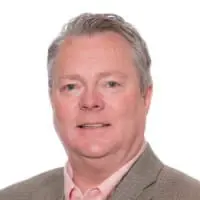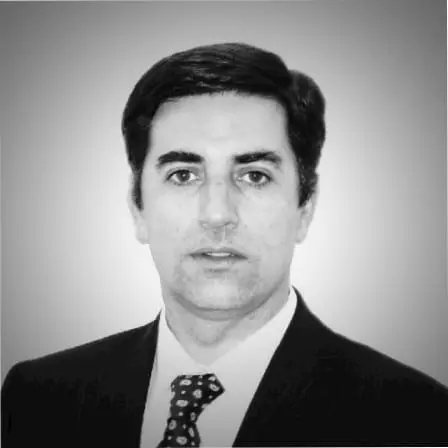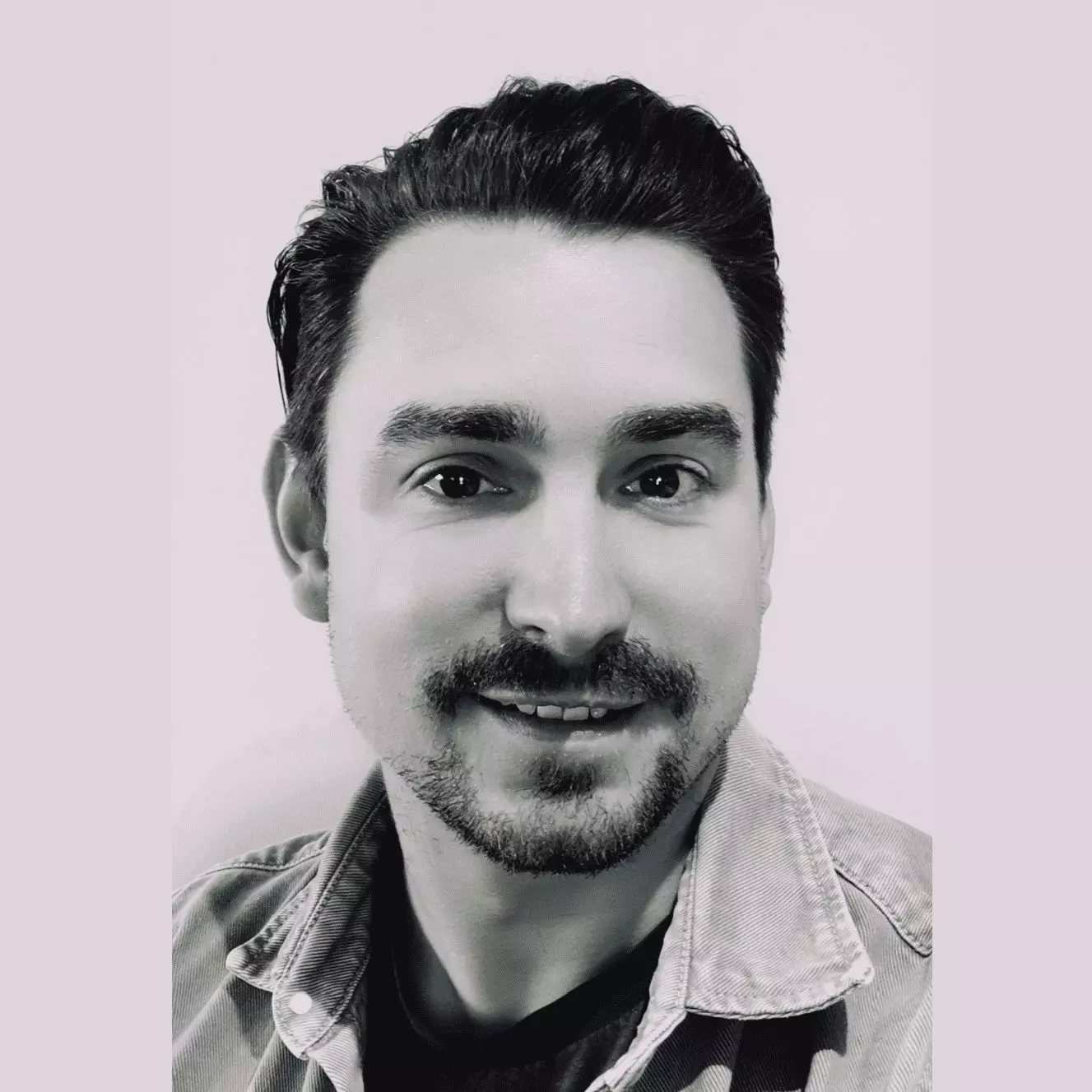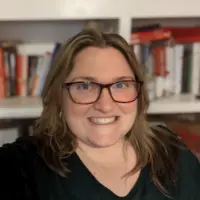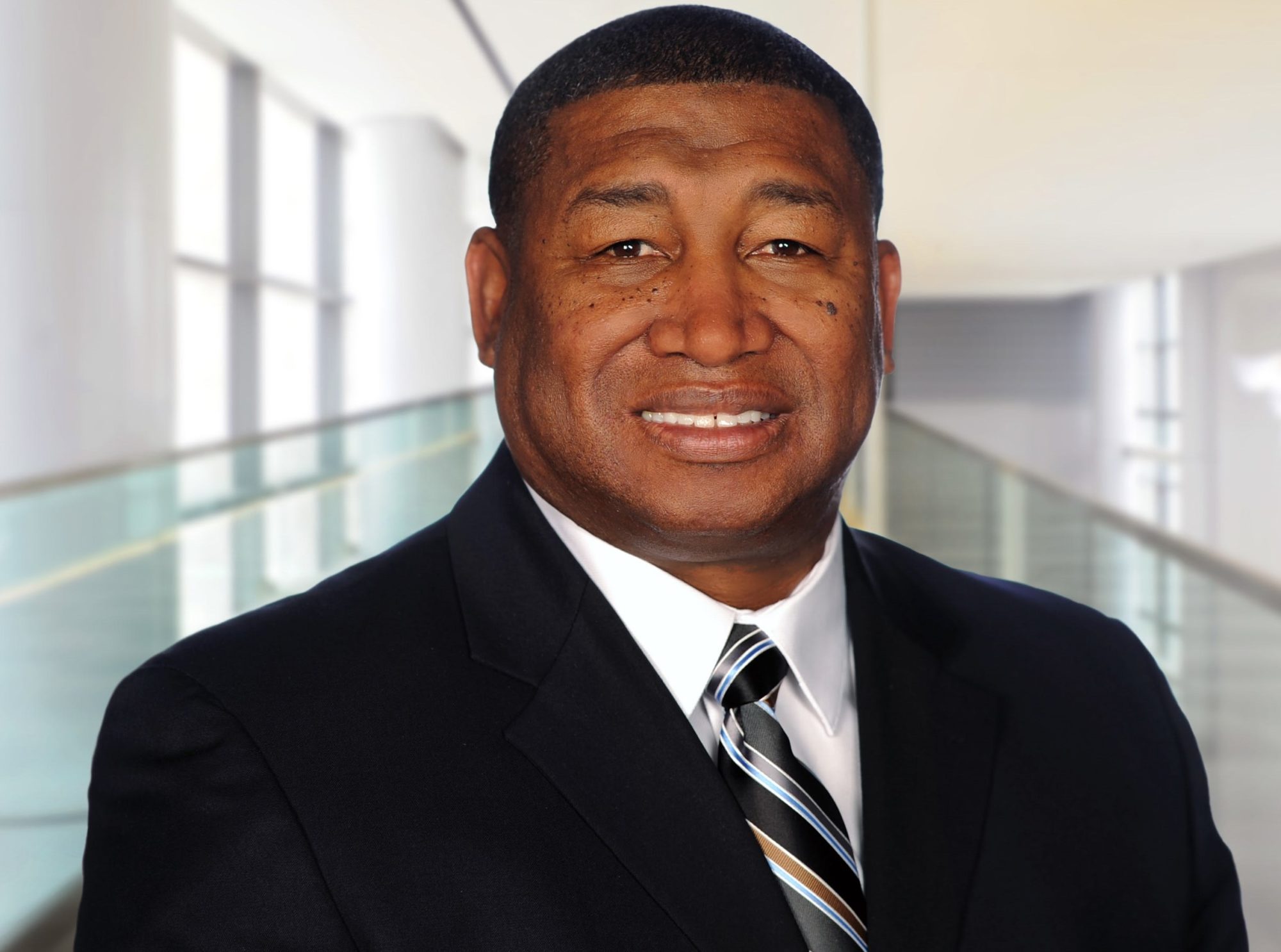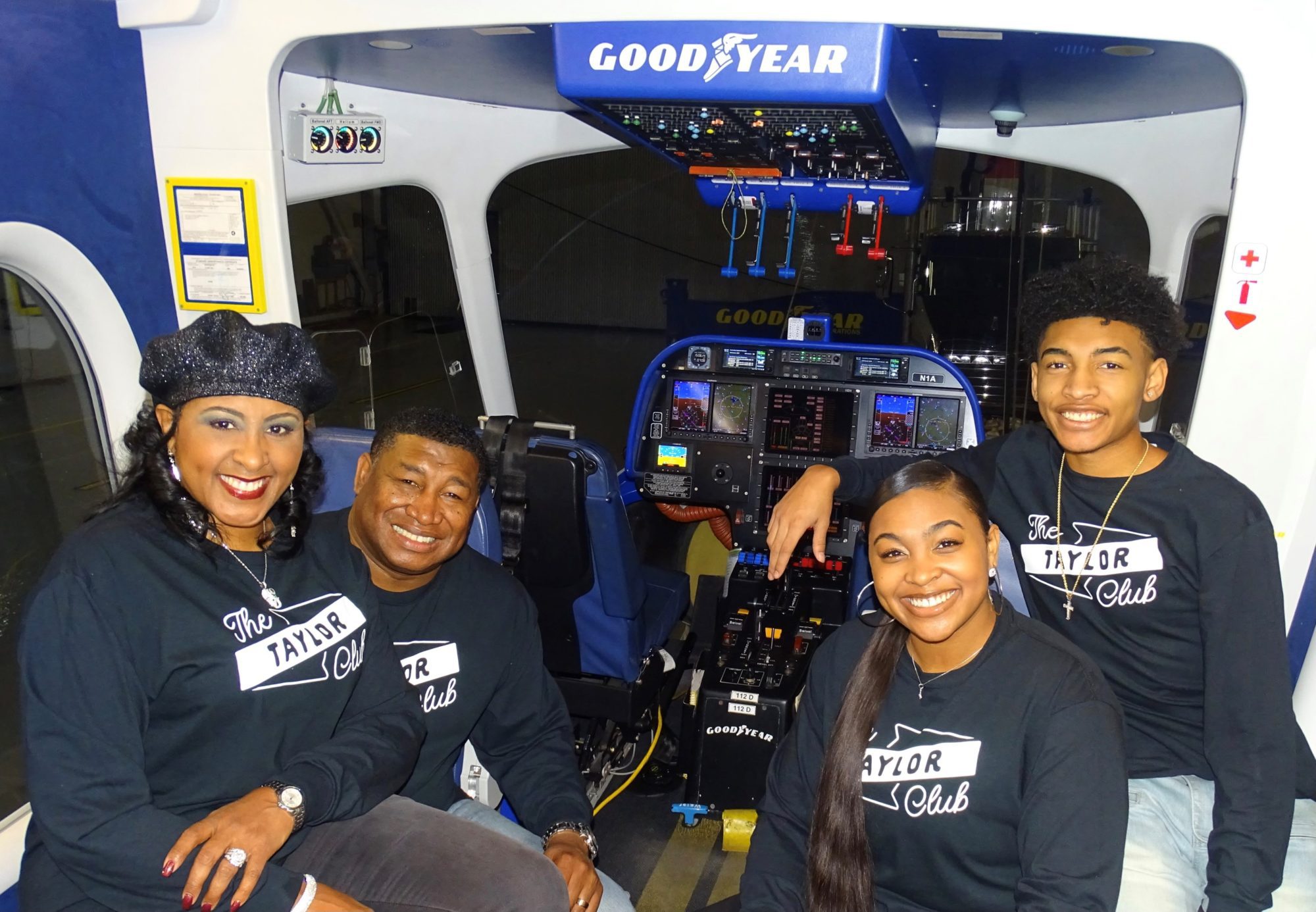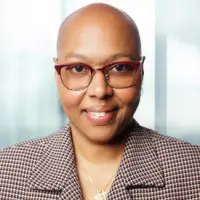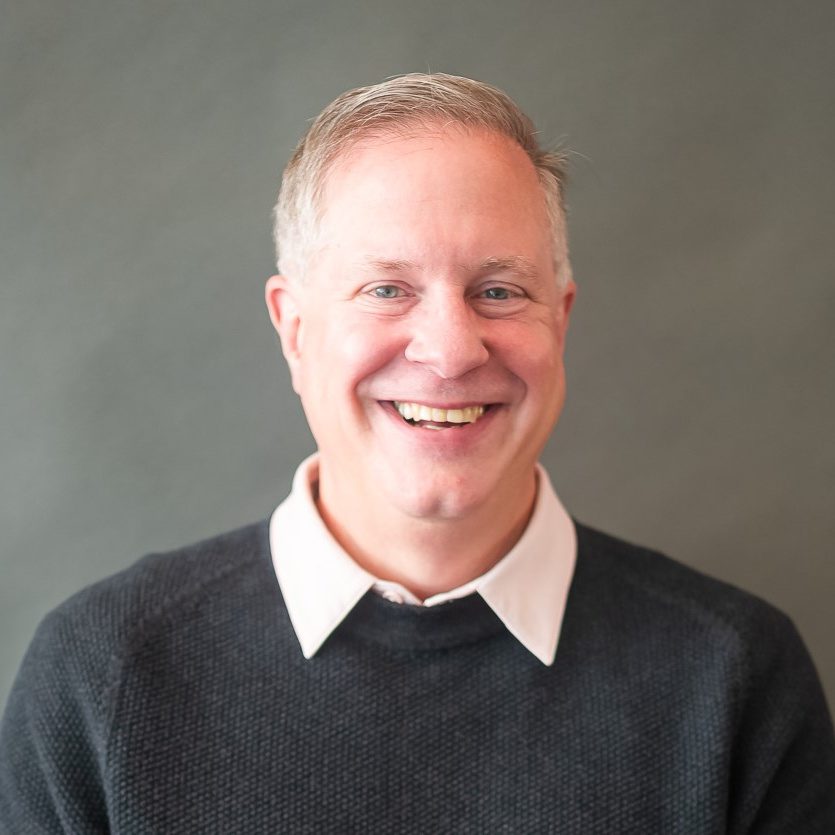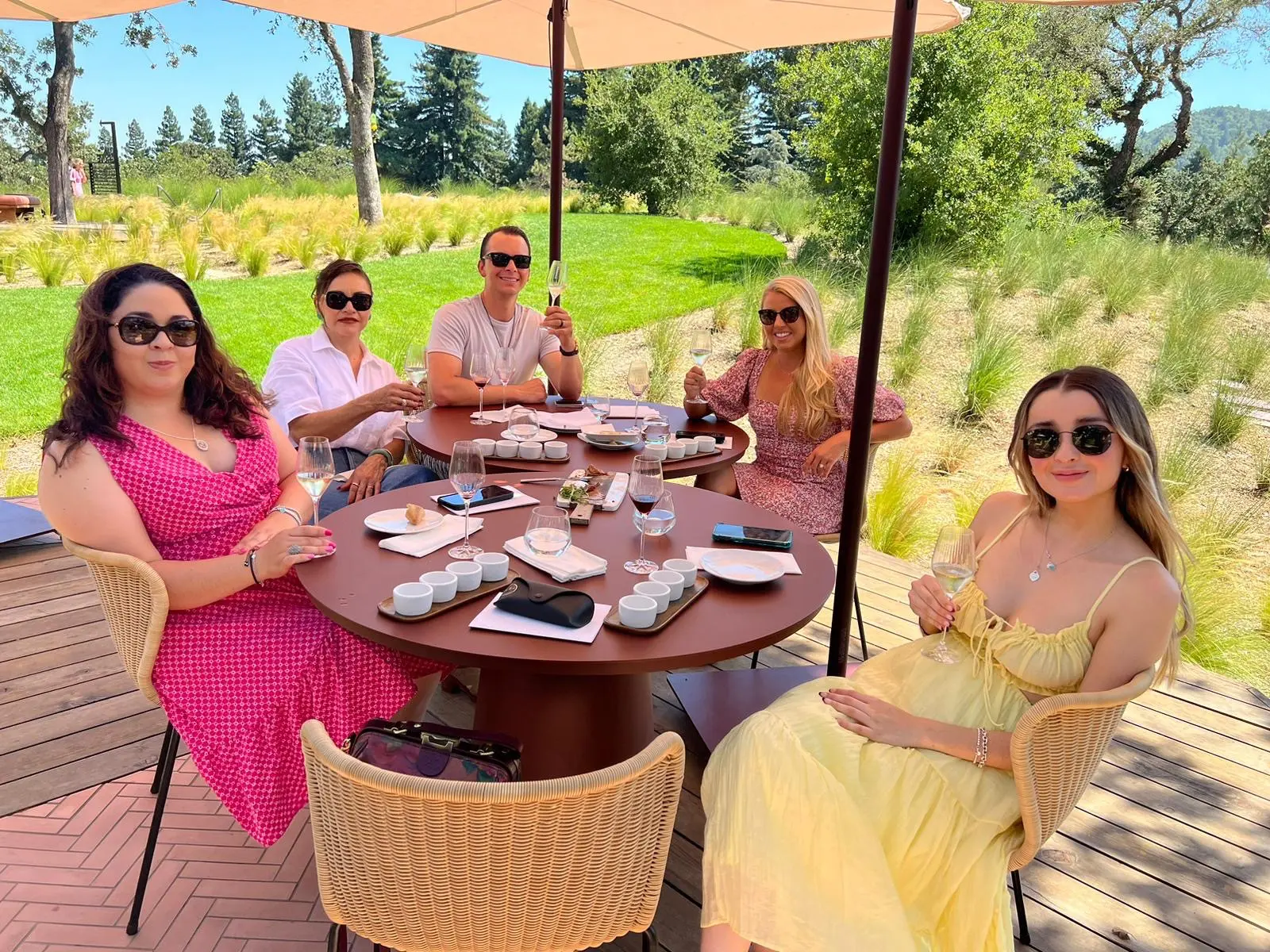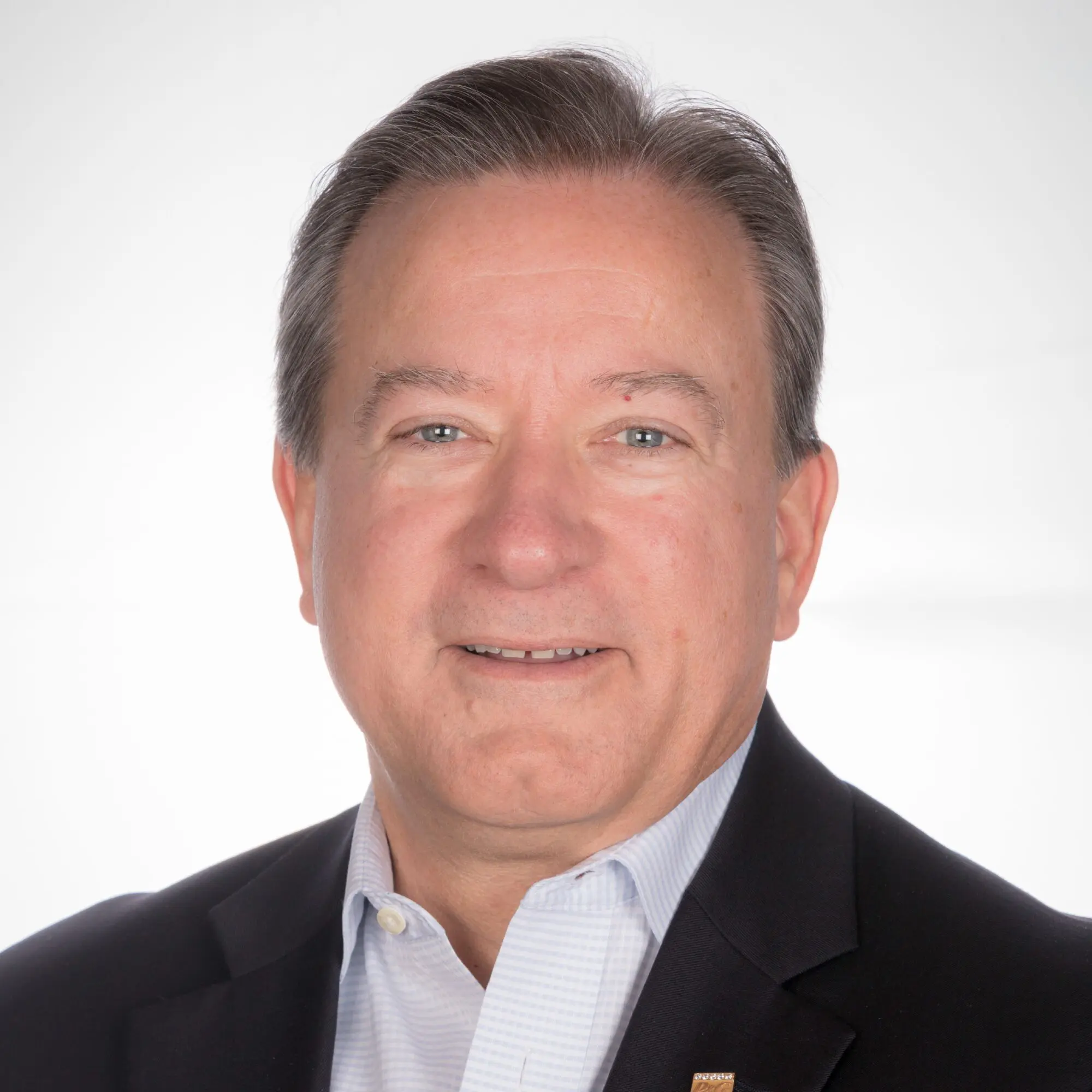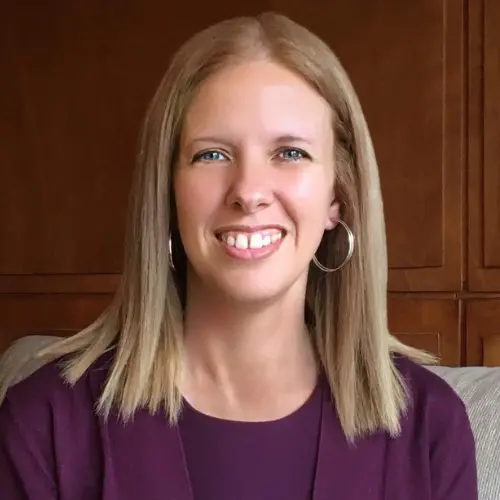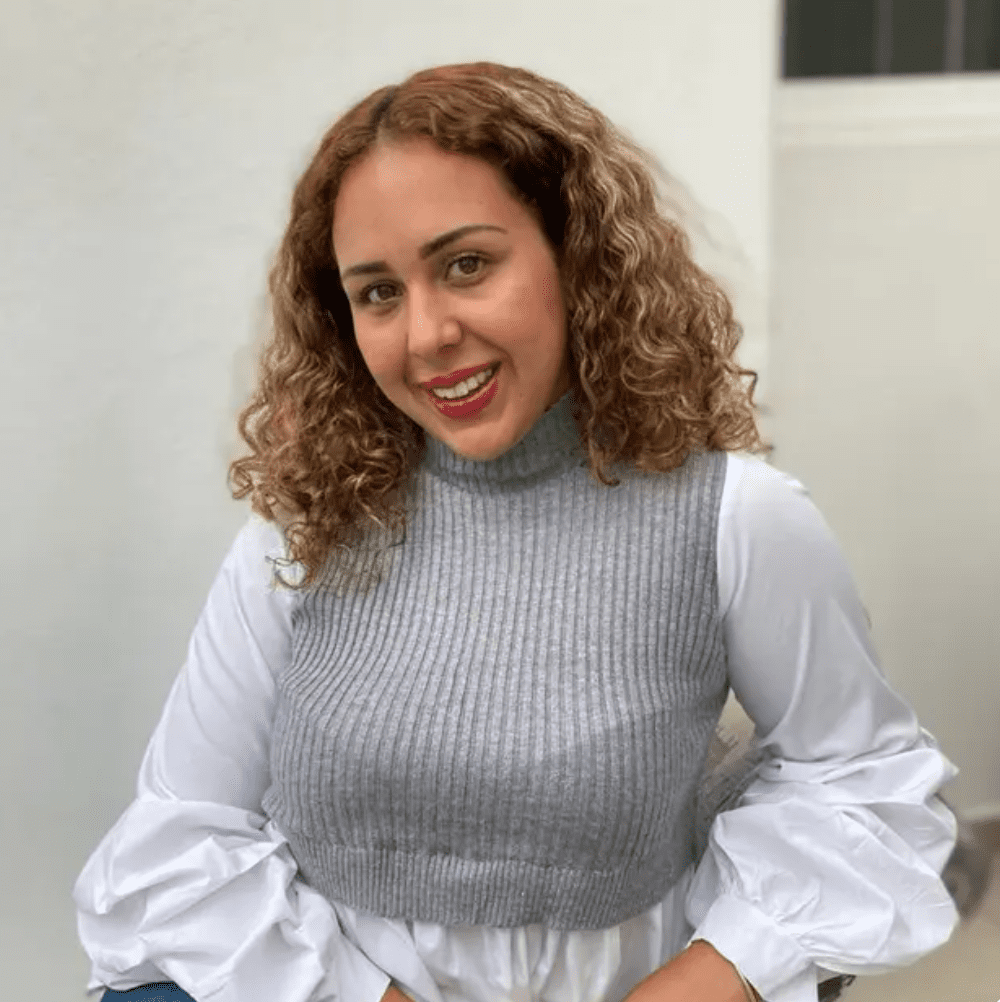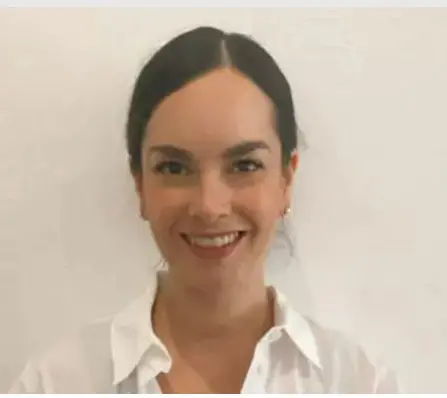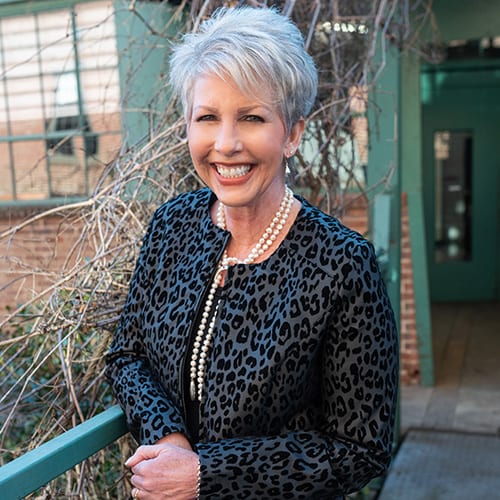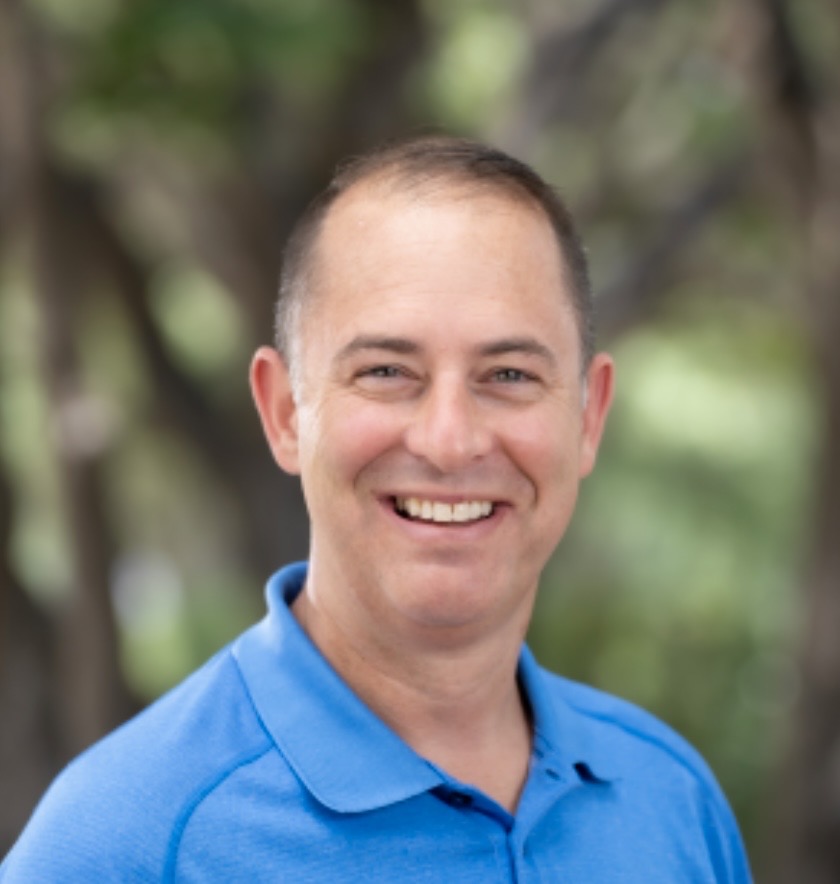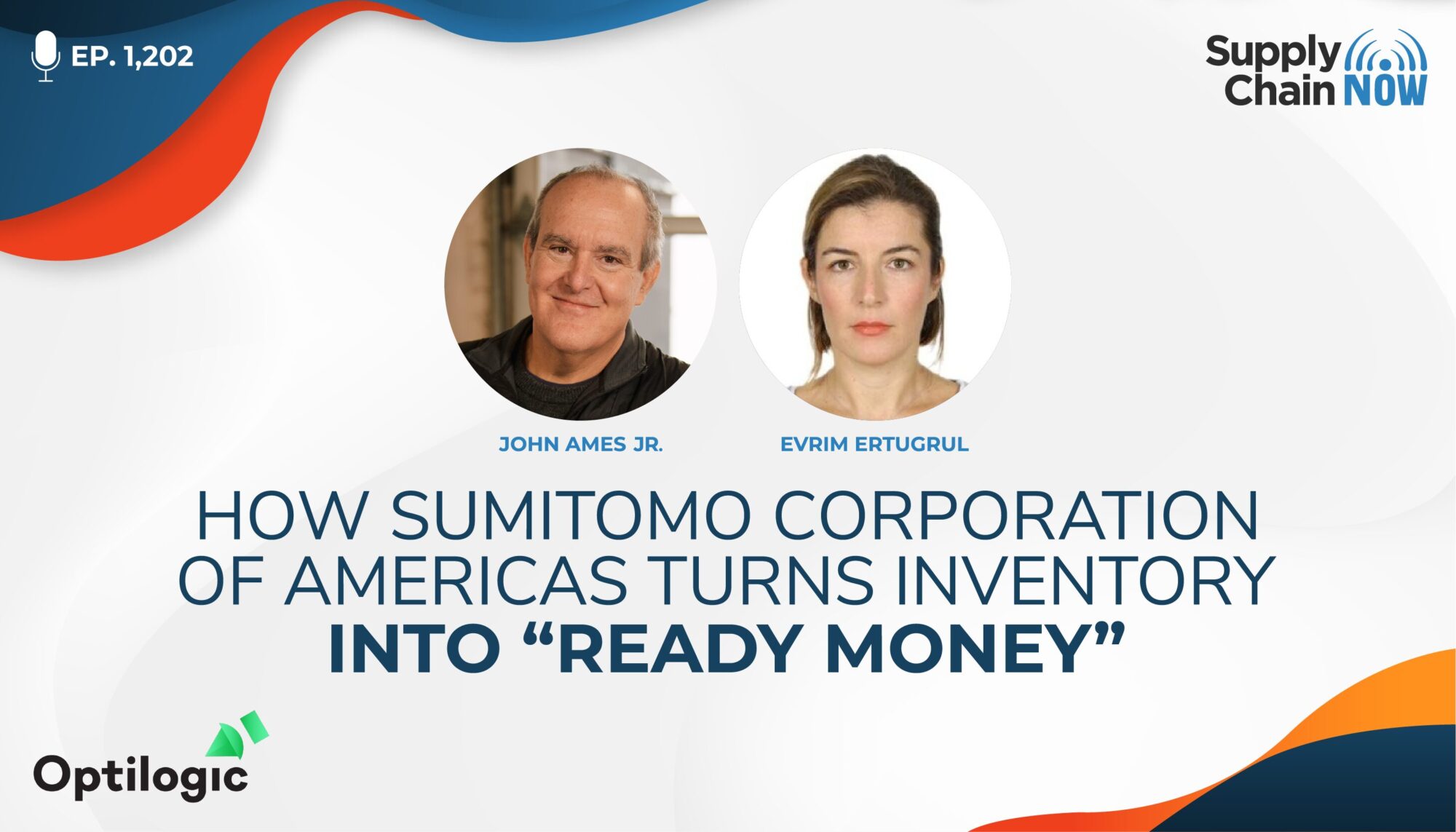
You have to ask, 'what is driving a good supply chain?' Inventory is part of it, but it's so interdependent upon other processes and policies that you really need to step back and say, 'what is good and how are we measuring it?'
-John Ames, Jr.
Episode Summary
Join us for this exciting episode, as we discuss Sumitomo Corporation of America’s innovative approach to inventory optimization, as they collaborated and partnered with Optilogic, and how they incorporated a simulation-based model to convert inventory into “ready money.”
Hosts Scott Luton and Greg White welcomed Evrim Ertugrul, Deputy Head of Corporate Logistics at Sumitomo and John Ames, Jr., VP of Business Development at Optilogic for an excellent conversation that highlighted:
- The complexity and pressure businesses face, with increased awareness of the supply chain due to events like the great toilet paper shortage
- A critique of traditional inventory optimization methods that fail to model real-world demand variability and are based on outdated assumptions like average demand and static upstream service levels
- Sumitomo’s collaboration with Optilogic on a project named Cosmic Frog, where they use a genetic algorithm to run many simulations, creating a risk-free environment that assists in decision-making
- The simulation’s ability to handle various types of demand profiles and the concept of moving towards a digital twin for supply chain operations using advanced modeling techniques
Episode Transcript
Intro/Outro (00:03):
Welcome to Supply Chain Now, the voice of global supply chain. Supply Chain Now focuses on the best in the business for our worldwide audience, the people, the technologies, the best practices, and today’s critical issues, the challenges, and opportunities. Stay tuned to hear from those making global business happen right here on Supply Chain Now.
Scott Luton (00:32):
Hey, hey, good morning, good afternoon, good evening, wherever you are. Scott Luton and Greg White with you here on Supply Chain Now. Welcome to today’s show. Gregory, how are we doing today?
Greg White (00:41):
Well, I can’t speak for you, Scott, but I will speak for myself. I’m doing quite well.
Scott Luton (00:46):
Well, that makes two of us.
Greg White (00:47):
I know that you are doing well. I just didn’t want to speak for you. Of course, you’re doing well. Aren’t you always?
Scott Luton (00:54):
Hey, we try, Steady Eddie as I’ve been called a time or two perhaps, but I’m doing even better because we’ve got an outstanding conversation teed up, Greg, really enjoyed the pre-show with our panel and the whole gang here. And today, folks, you’re in for a treat because I bet a ton of business leaders out there, Greg, would love the transform inventory into a big old pile of ready money and, hey, Greg, if it applied to content inventory, sign us up, right?
Greg White (01:22):
You had me in money.
Scott Luton (01:24):
If that appeals to you, folks, you’re in the right place because not only are we going to be sharing actual insights and expertise on how to do just that, get a pile of ready money from your inventory of your own, but we’re going to be featuring, Greg, an organization that’s done it, right?
Greg White (01:40):
Yeah, I’m looking forward to it. Big, big, big organization that’s done it.
Scott Luton (01:47):
That is right. So stay tuned, folks, because they’re going to be sharing some key tips and best practices and some tools, and been there, done that actual insights that you can apply in your own organization. So with that said, Greg, I’m going to welcome in our two guests here today, Evrim Ertugrul, deputy head of Corporate Logistics Department at Sumitomo Corporation of Americas, and John Ames Jr., vice president of Business Development with Optilogic. Hey, hey, John, how you doing?
John Ames (02:18):
Good. Good. I’m glad you got the junior in there. Some people forget it, right? Wouldn’t want dad getting mad like you’re claiming his name, right?
Scott Luton (02:25):
Well, John, great to have you, enjoyed our pre-show conversations. And, Evrim, how are you doing?
Evrim Ertugrul (02:31):
I’m doing good. How are you?
Scott Luton (02:33):
Wonderful, wonderful. Great to see you as well. We’ve got a great conversation teed up, Greg. We really enjoyed the pre-show talking a little bit of sports, a little bit of supply chain and then some. But, Greg, we want to talk a little food for a little fun warmup question, don’t we?
Greg White (02:50):
Always. I’m pretty sure that’s what people tune in for as much as anything else, right? What food are we going to make them hungry with today?
Scott Luton (02:58):
Yes, you hit the nail on the head. So, Greg, Evrim and John, today in the States is National Pickle Day and National Spicy Guacamole Day. And by the way, if you love delicious guac and you’re ever in Washington DC, you got to check out Oyamel Cochina Mexicana, big hit with our family back in the spring, but I digress. So with those delicious snacks and treats and food stuff as a backdrop, I want to ask you all, and John, we’ll start with you. When your family and friends get together, whether it’s for a tailgate or a basketball game or the holidays, what’s one of your favorite side dishes or snacks that’s always on the table?
John Ames (03:37):
Well, I lived in Texas for a while and there was this thing called Rotel Cheese Dip that you would get.
Greg White (03:43):
Oh, my gosh.
John Ames (03:44):
It’s probably not the most healthy thing just to be open about that because it’s like this big brick of Velveeta that you put Rotel peppers in and you eat a big scoop of Fritos with it and it’s delicious. It’s really good and it’s good on a winter day, too. So for the holidays, it’s a good snack.
Scott Luton (04:06):
Thank you. And, Greg, I think we’re going to get the honest truths from John today because he even threw in a little blurb about whether that — the healthiness aspect of that.
Greg White (04:14):
Well, I like that. I mean, I think health consulting is appropriate when we’re talking about food like —
Scott Luton (04:21):
That’s right.
Greg White (04:21):
Think of it as a —
John Ames (04:21):
You got to have a warning.
Greg White (04:22):
Disclosure statement, Scott.
Scott Luton (04:24):
Yes, well said. Perfect. Disclosure statements are important. All right. So, Evrim, that’s going to be tough to top that cheese dip that John was talking about. What about you? What’s one of your go-tos? And we might have lost Evrim and we did. And that happens from time to time, folks. Live programming.
Greg White (04:40):
Internet. Yeah.
Scott Luton (04:41):
That’s right. So our team’s working fast and furiously to get Evrim back, so stay tuned on that. Greg, let’s close out the conversation talking food stuffs, your thoughts.
Greg White (04:51):
Well, first of all, if Rotel Cheese Dip kills you, totally worth it. I’m just going to say, John, as long as you put that disclaimer out there, it is utterly delicious and lots of people use it lots of ways. I’ve seen people put it on their chili or kind of in their chili, but it made me think when we lived in Arizona, one of our favorite restaurants had a bean dip that was spectacular, mixed with a salsa and all of that sort of thing. And that has to be my favorite side ever.
Scott Luton (05:26):
That sounds delicious. Delicious. And y’all can have a contest for what is probably more unhealthy, I don’t know. But regardless, Greg and John, what a great start and we’re going to try to get Evrim back here in just a second. By the way, Katherine says, “Rotel Dip was a staple at college tailgate parties.” TSquared is back with us, holding down to forth on YouTube from Baltimore. And, Chris, great to see you from Webster, Massachusetts, via LinkedIn. Welcome to everybody, and look forward to hearing your take throughout today’s conversation. Okay. While we work to get everyone back, John, I want to start with you as we get into the inventory ready money supply chain leadership conversation we got teed up here today. Let’s start with some context. So, John, we really enjoyed previous conversations with you and the Optilogic team, but tell us for a handful of folks may have missed those tell us briefly about your company and what you do there.
John Ames (06:15):
Yeah, sure. So Optilogic is the world’s leading supply chain design company. It was founded in 2018 by Don Hicks. He was the co-founder and CEO of LLamasoft for over a decade. We had the opportunity in 2018 to redefine and build a new supply chain design technology platform from scratch, which not a lot of companies get to do. And Don put together a lot of experts that have done it before. So we’re a startup in some ways, but we’re really not. We started to look at building new ways of thinking of design, including things like adding risk to your optimization and simulation outcomes. It’s also looking at what happens with inventory and using AI-driven technologies because we all use some of the old technologies in the past and we wanted to improve upon those, not just kind of make a new product out there that’s cloud native that’s using a lot of the old technology. So we started doing that in 2018 and we have over a hundred active users on our platform right now and including a lot of Fortune 1000 companies like Sumitomo.
Scott Luton (07:24):
Outstanding. Greg, they’re changing how business is done. It’s one of the themes I picked up there, John. Greg, your quick thoughts.
Greg White (07:32):
Well, like so many things in supply chain, network optimization is not a new concept. It’s just with the wealth of data that we have available, it can be completely re-imagined, right? We talk about this with planning and a lot of other things as well, and it is sorely in need of being re-imagined. I have a good friend who started a network optimization company and they were very smart using heuristics and linear algorithms and that sort of thing, and we always talked about that they really need a learning system. We were talking about it. This is how long we were talking about it, John, neural networks. So we were talking about those.
John Ames (08:16):
Oh, yeah. I remember those.
Greg White (08:18):
Yeah. Barely, right?
John Ames (08:19):
My agility days. And it was funny, Greg, we were building the platform and then the pandemic hit and we saw a lot of these supply chains breaking and it’s like, okay, did we do something? What did we do wrong with LLamasoft and supply chain grew that technology and that’s kind of where we see this need for improved ways of thinking about what is a good supply chain, not just focus on cost. There’s a lot of these fragile supply chains out there breaking. So that’s kind of how we started building out our platform during that time.
Scott Luton (08:55):
Well, thank you, John and Greg. Evrim, welcome back. Great to have you here. So hey, Murphy’s Law is aligned, well still in certainly global technology and you’d rejoined at a great time. We’re just kind of setting the stage, adding some helpful context on the front end. So Evrim, if you would tell us briefly about what Sumitomo does and a little bit about your background.
Evrim Ertugrul (09:16):
Sure. Sumitomo Corporation of Americas was established 1952. It’s headquartered and based in New York City. We have nine offices in the major united city and then SCOA is the largest subsidiary of the Sumitomo Corporation of Americas, Sumitomo Corporation, one of the world’s leading traders of the good health services. So Sumitomo Corporation headquarters in Japan as an integrative business enterprise, working with multinational project as important international investor and financier distribution product all around the world, utilizing our network and then offices.
Scott Luton (09:57):
And thank you for that, Evrim. And, Greg, one thing we learned about Evrim as a fun personal fact, we’ll have to bring her back on a different show, is she was a former professional basketball player. I bet some of those skills are perfectly relatable and helpful in the world of supply chain.
Greg White (10:12):
I think we’re building a venerable panel for supply chain geeks talk sports. Yeah. Right?
Scott Luton (10:18):
That’s right, Greg.
Greg White (10:20):
I think, yeah, she’s on the short list for sure.
Scott Luton (10:23):
That is right.
Greg White (10:26):
Well, I mean not shortlist. We don’t have any idea how tall she is. We just know she was a one guard, so.
Scott Luton (10:32):
That’s right. That is right.
Greg White (10:33):
A good footwork.
Scott Luton (10:32):
Well, Greg, so true and, Evrim, welcome again to you and John. I really appreciate what y’all bringing to the table. And on the side, hey, welcome Koray and Jonathan, we got a lot to get into here. Great –welcome to have everybody and I want to get your takes throughout the conversation. So, as we continue setting the table a bit, John, I’m going to stick with you here. As you’ve got your finger on the pulse of business leaders out there in the industry, what are some of the biggest inventory challenges that you’re seeing business leaders faced with out in the industry right now, John?
John Ames (11:05):
Yeah, I kind of started talking about that with Greg and a lot of it relates to risk and resiliency and inventory specifically as a strategy to figure out how to be more resilient. The pandemic was one thing that occurred, but there are a lot of different things that are disrupting supply chains today. There’s capacity issues, there’s war, there’s climate related issues, there’s strikes, and a lot of companies are looking at not how to reduce my inventory costs per se, but use inventory as a weapon to be more resilient when a disruption happens. The other is just simply quantifying how risky their supply chains are. A lot of companies haven’t really defined how risky their supply chain is, and that could be external risk but internal risk, things like lead time, things like capacity, things like variability. And they need to figure out what’s their tolerance for risk when these things happen. So I think those are two things that are out there.
John Ames (12:15):
The other is a lot of companies that over the last few years have invested a lot in planning and visibility, but they really haven’t understood how to create a sandbox for what is the best policy to feed these solutions. A lot of times planning solutions rely on the planners to put in these policies. What makes these policies optimal? It’s really a heuristic-based approach. How can they get their planning systems to work better to help not only with inventory but other types of metrics that they’re focused on like cost and service? And you hear a lot about digital twins lately or digital transformation and I think a lot of the inventory challenges are how do I build this end-to-end digital model that truly represents my supply chain as it relates to inventory. Because a lot of times there’s these simplifying assumptions that they might’ve put in or they’re using spreadsheets or something that’s not really implementable and being able to tweak something and identify where you can have ready money. It’s not just something — it’s not out there for a lot of these companies.
Scott Luton (13:32):
Yes. All right. You shared a lot there. Before I move over to Evrim, Greg, I want to get you to weigh in really quick. He touched on a bunch of things from risk and resiliency to risk tolerance, sandbox, implementability, I think that’s a word, and, of course, ready money. Greg, weigh in on what you heard there from John.
Greg White (13:50):
Yeah. I think one of the things you have to acknowledge about supply chain is we are more and more seeing that it is an ecosystem and not a chain at all, right? It is interrelated, interdependent and one thing affects another, right? The butterfly effect is alive and well in supply chain. And the other thing that I think John addressed early on was this notion that supply chain is a cost saving exercise. It’s really not. It’s a risk balancing exercise and cost is one of those risks, obviously a very important one of those risks, but so is resiliency, right, so is speed, so are ethics these days, finally. And I think we have to address all of those in union, not individually. So whether you’re talking about optimizing, I think somebody mentioned network optimization and flow, whether you’re optimizing flow or you’re optimizing inventory levels or you’re optimizing service of inventory, all of those things are interrelated and impossible to extract from any of the others.
Scott Luton (15:00):
Well said, Greg. Appreciate that. All right. So, Evrim, same question. We want to get you and John to weigh in on those inventory challenges that you’re seeing out there, whether it’s that Sumitomo or out in the industry.
Evrim Ertugrul (15:11):
Yeah. So I think that you guys pointed out all the highlighted topics in here. In the current Sumitomo business landscape of our global supply chain, businesses are made international network of supplier and client. So as the competition that become fiercer on product and quality and price, the pressure on our supply chain is increased as an execution. So what we see in here, the complexity of the supply chain that we have, global supply chain shifts daily placing on a burden on our inventory planning and management operation. We can see the customer demand is constantly shifting. Keeping too much inventory could result in absolute inventory you are unable to sell. So while keeping too little could leave you unable to fulfill your customer order. So it’s important for us to order strategy for core items. So the complexity of supply chain is also do all the human asks. So interacting with each other over the long distance with different tool, different capability, different information can lead to confirmation bias. We also seeing that a lot of gut feeling into the decision-making point. We are also capturing those things while we are daily business operation. But more importantly, even if the business leaders strive to align with their team, so each actor is pursuing its own objective, so often resolving divergent action because everybody focus on their objective daily, finished daily work, not to see the big picture, step back and look at what feature might look like. Nobody has time to do that. They want to finish on daily work and solve the daily problem. So we see that as a one of our challenge or even for you.
Scott Luton (17:11):
Yes. Thank you, Evrim. No one’s got time for that. I love how you threw that in there, Evrim. Greg, I’m going to get you a quick comment. The other thing that she mentioned, pressure is up, complexity’s up, price is up, change is up. Inventory in some cases is up. Greg, your thoughts.
Greg White (17:26):
Awareness is up. I mean, there’s nowhere to hide now, right? Before the great toilet paper shortage of 2020, nobody knew what Sumitomo even did, or how they interrelated. They didn’t know how Clorox or Charmin interrelated with Walmart or with Price, or what is it called, Costco. I want to still call it Price Club. Or they’re local grocer. But when things ran out, everybody learned about the supply chain really, really quickly. And that is the most important thing is whoever your consumer is, whether they’re an end consumer or production consumer or whatever, they know how the supply chain works now and there is nowhere to hide. So all of those complexities have always existed. Right now, it’s just that everyone even the lowest forms of life like politicians know about them. So we have to respond appropriately because now it’s more than just costs, John, as we talked about, or even resiliency. Now your brand identity is at stake and you have to protect that brand identity at all costs. Well, not all costs, you know what I mean.
Scott Luton (18:36):
Yeah, we do.
Greg White (18:37):
Without all costs.
Scott Luton (18:39):
I thought you were going to definitely throw in a listen up there, Greg, to continue that theme. But we’ll get to that later in the show perhaps. And TSquared adds, Tyrone adds, “Interrelation is also definitely up.” Those relationships, those critical relationships out there that help make industry happen. Great point, Tyrone. Okay, so, John, circling the back to you as we move right along, continuing focused on inventory, I want to start with a little bit of history. Why do decades old inventory optimization methods tend to fail? John?
John Ames (19:09):
Yeah. I go back in a lot of different inventory technologies and I think it gets back to being able to model real world variability, real world demand. If you think about some of the technology, they assume average demand, they assume normal demand. They have an assumption around guaranteed upstream service that just doesn’t really work in the real world. So you try to apply the outcomes of these solutions and they don’t really work when you feed them to planning and execution. Another reason is a lot of them are focused on safety stock. But a lot of times there’s production processes. There are transportation policies that are impacting work in process and transit inventory, where safety stock is really irrelevant. I mean, a lot of times you’re getting this big slug of inventory every month or every two weeks and it’s that process that’s driving inventory pain, not safety stock. So I think part of that’s that.
John Ames (20:12):
The other is a lot of times services and input into these solutions when, really, they need to be modeling what the service performance is going to be. And that’s really where when we were looking at our new technology, we’re saying simulation really needs to be used because it can model all of these things. It can model your order or transactions. It can model your on-time in-full-service rate. And the old technologies are not really using that piece and I think that’s why a lot of them are failing. And even going back to — a lot of companies are using network design and terms-based inventory to approximate inventory savings and that’s even more simplifying than safety stock optimization tools.
Scott Luton (21:00):
Thank you, John. I’m keeping notes at home. Greg, I’m on I think page seven so far and we’re only halfway through. Evrim, speak to if you would, why do not these old traditional approaches, why are they so broken? They just don’t work these days.
Evrim Ertugrul (21:15):
In addition to John, I totally agree with John comment in here. So I talk about the complexity and then Greg made a great comment is awareness, but a lot of complexity that we have is on the inventory level; it needs more optimization, a lot of optimizations we need at each different level. So we have to solve those problems, inventory optimization problem. So we have only two methodologies like a mathematical model and then simulation. Mathematical model that we have seen so far rely on the restrictive assumption such as normal distributed demand and then lead time or fact all excess demand will result in a back order. That’s why the mathematical model, which is traditional methodology, tends to fail. As John mentioned, its averaging approach has eliminated some of the variation between the data. So it’s not realistic in this world. So that’s why we are recently using the inventory simulation approach, utilizing the Optilogic genetic algorithm to optimize inventory level because the inventory models are abstraction that cannot capture all possible action to balance supply and demand. That is the issue on the traditional methodologies and mathematical model. We cannot assume that linear and normal distributed everything. For the complexity that we have, we need to find out all the variation or the level to find the best fit or an inventory policy.
Scott Luton (22:56):
Excellent point, Evrim. And, Greg, one of the things I heard Evrim and John speak to is maybe the older technology, older approaches are really built on static utopian worlds and that’s just not reality. But your thoughts, Greg.
Greg White (23:09):
Well, they’re also built based on a presumption of lack of data or lack of robust data. That’s why they use averages and that’s why they use heuristics and that’s why they use these more broad methodologies that average out the lumps as Evrim is talking about because they’re assuming a certain semblance of randomness because they can’t capture more enriched data. But today we have much, much more rich data which allows us to forecast, for instance, in better ways and to track and discover and learn from things like anomalies in the supply chain. How big was the impact? How likely is it to happen again? Does it simulate other types of anomalies or disruptions that can occur in the supply chain and how to provision for it? So that’s the greatest flaw in these old systems. They use forecasting techniques from the 1880s and the early 1900s and then they use a great AI tool to choose which one of those horrible forecasting methodologies, horribly outdated forecasting methodologies to use this time, to use the past to predict the future, right, the past movement of goods to predict the future movement of goods when we know that past movement of goods really has zero influence on the movement of goods in the future. But it’s all we have. I mean that is the presumption, right? That is the presumption of, for instance, forecasting techniques today.
Scott Luton (24:37):
Yes.
Greg White (24:37):
It’s not all we have today.
Scott Luton (24:40):
I like how you picked on the 1880s or the last time the Atlanta Falcons won a big game. I got to watch that [inaudible].
Greg White (24:46):
That’s really when a lot of those forecasting techniques were created; 1903 is the most recent forecasting technique, truly created. Many have been adapted but truly created.
Scott Luton (24:59):
Well, there’s good news, folks. John, Evrim Greg and all the folks out there listening in the audience, there’s great news and as much as I’ve enjoyed the first half of this show as we kind of talk shop, talk industry about what we’re seeing and what we’re doing, there’s a great story here about a bold new direction and that’s the good news. There are things you can do that aren’t like the things in that last segment that we got Greg and John and everyone to talk about. So that focuses this conversation around converting that inventory into ready money. So I want to start with you, Evrim, because you and your team at Sumitomo are a big part of the good news here because y’all have done some big things and move mountains along these lines. So tell us more what you and your team have been able to do.
Evrim Ertugrul (25:39):
Yeah. So as we know that the inventory is the money sitting in another form on our pocket and then we are always trying to explore how we can convert this inventory to ready money. So that’s the big question with that. We don’t want to solve the daily problem. We just want to explore the opportunity to improve the things. To be able to do that, we collaborate with Optilogic inventory optimization module. We apply with the genetic algorithm, which runs a lot of simulation, risk-free environment, that helps us create many different scenarios. The tool gives us the really good decision-making point. So one of the things in the Sumitomo, we are trying to build internal center of excellence within our organization to provide our group company supports related supply chain design, best practice, researches, inventory optimization with simulation approach and network design, so on and so forth.
Evrim Ertugrul (25:40):
The continuous improvements, one of our core strengths, recently the project that we worked with the inventory optimization project utilizing the Cosmic Frog, we have more than 20 branches all around the Americas, the company, and then every branch became differently. They placed the order differently and then there is no any centralization. You can see there are a lot of the customer location. So the question was how we can centralize all those flows. The idea is what if we create a regional distribution center to reduce the inventory? All we know that the consolidation of the location, it’s going to reduce the inventory definitely. But in the same time adding additional stop within your network, it’s going to increase the free cost. So that our hypothesis in here to test if we create the regional distribution center, what’s going to be our trade-off between inventory holding cost and then the free cost? The things we want to answer those questions.
Evrim Ertugrul (27:50):
To be able to do that, it’s open to different evaluation assessment in here. One is network optimization. So rate is going to be the regional distribution center within our current structure. So we run the network optimization utilizing the Cosmic Frog and we find the location, best location, to create the regional distribution center. In the meantime, we create the baseline with 20 branches including all the demand and purchase order and everything for transactional base. And I’m going to point out that, Greg, we think that we have a lot of data, but when we try to work on it, actually we have totally mess. I know that we are not alone. So we have a lot of going through the data structuring process, but it’s just moving on. It’s just continuously focused on, okay, we want to do that, and we have really great partner with Optilogic. We find the most optimal location and create the RDC model onto the platform.
Evrim Ertugrul (28:52):
And then through the RDC, we create the simulation. We run 2500 unique simulation; 30,000 SKU you’re talking about in here. So we are able to capture trade-off between the inventory holding costs and then the freight cost. In the meantime, we are able to run the genetic algorithm approach through the baseline. And actually without creating the RDC, we are able to find the better management of our inventory policy that can provide us the cost reduction opportunity. So we create three different scenario actually, baseline with the GA, creating with the RDC and also we move forward with that. Some of the branches is geographically located; it’s further and we don’t have to bring, carry product move back and forth. We move those branches from our RDC to baseline and kind of the hybrid model. We run the hybrid model and then we have three different scenarios. So which is amazing that we are providing our business to option if they improve their assess policy, which is the good thing for the genetic algorithm Optilogic. Output table provides you suggested inventory policy. And then for that SKU, if you apply assess policy which in our case mean max and then you’re going to save that amount of the money.
Evrim Ertugrul (30:26):
So you can go work on this, prioritize SKU. You can move on implementation discussion on the proof of concept, which we are moving on right now. So I was really excited about this project. We are able to use the simulation and there is no way the old traditional methodology that we can run 25 different simulations with the transaction base and find the best fit model to test it. So that’s why we are able to achieve with Optilogic. I think this is a good progress. We can share more detail if anybody wants.
Scott Luton (31:08):
Outstanding. Huge practical outcomes. And I’m going to overly simplify. I’m going to get John to comment and then, Greg, I’m going to get your take on what Evrim and John are describing. But in real simple terms, what I heard there, Evrim, is you take all these inputs right into this Cosmic Frog platform, which we’re going to touch more on back, so other folks can take advantage of that. You can run through tons and tons of simulations. It’ll give you a suggested path and you can compare different scenarios and then all of that will help you and your team arrive at a much more informed and optimal overall inventory policy. And that is, man, that’s music to my ears even if it’s simplified. John, what would you add to that?
John Ames (31:47):
Yeah. I mean, everyone laid it out really well. And I think if you go back to the conversation, we were having about the drawbacks of the old technology simulation, it’s at that transaction level. It’s at that daily level. It’s modeling your current — it’s basically acting like how your planning policies are working today. So when we modeled the baseline, we said, here’s where you are today with inventory and here’s where you are with service and here’s where you are with total cost. The genetic algorithm, and you could say it’s AI-driven simulation if you want, since technology companies have to say AI. Every at least three minutes, I think we have to say it.
Scott Luton (32:25):
Two now, John.
John Ames (32:26):
Yeah, okay, I got two, I’ve got eight more. So the AI was able to guide the simulation and what was missing in past simulation tools was yeah, you can measure performance, but how do you test a lot of policies? So because we’re cloud native, we were able to run 2500 different simulations at that transaction level being guided by a genetic algorithm that says based upon your goals of service and cost, these policies either are working good and I want to test some more around that. Or it throws out the policies that aren’t working well and it converges on an optimal approach and because it’s at the transaction level, it’s implementable. I mean, it’s the policy. Sumitomo gave us their current policies and we tested all around that one, both high and low, and were able to converge around an optimal approach. They gave them less inventory at the same level of service that they needed and a lot of their items were, they were bought once or twice a year.
(33:36):
It was not like the normally distributed demand for some of the items. So the simulation can work across a number of different types of demand profiles as well as being able to work across different designs. And we’re excited about this approach because I think design in general, everybody’s wanting to get to this digital twin and you can’t really do that with simplified optimization models. Sometimes you have to use optimization to be able to, and so we’re doing things like optimization at the SKU level, but simulation really helps test these things out to give you that confidence and then you can use it as a sandbox for your planning system when let’s say you wanted a disruption happens or you just want to tweak different policies. And the cool thing is it’s not just about the safety stock policies, it can be about any policy across your end-to-end supply chain. So we’re super excited about this technology.
Scott Luton (34:30):
I would be too creating that free ready money or not free money, but ready money. Greg, your thoughts on what you heard as you heard Evrim and John describe what they were able to do at Sumitomo.
Greg White (34:41):
No longer free money, right? It has been for the last decade. Yeah, I think that — what I think I found really interesting is a notion that I call, I’ve called, and it’s probably been called by others sort of hub and spoke and that Evrim is using Optilogic to identify what goes into the hinterlands, which is a much less diplomatic way of the extended supply chain that she described, that factory out in the middle of the desert somewhere in Nevada or Kansas, and what goes into a more consolidated point because the way that companies get to inventory that they absolutely cannot get out of is to put all of these slow movers like John described something that sells once a year in every location and absent the knowledge of how to optimize that, they wind up out there. And because another thing Evrim described earlier, because so many companies acquire themselves to breadth of location and breadth of inventory, they might wind up with that anyway. But having this kind of a tool, they can pull that inventory back to a central point where it can go to the next location that’s going to need it in case Garden City, Kansas just used it and isn’t going to need it for another year, and for some reason had two, which is not a rare instance.
Greg White (36:07):
So the power in this is really, really significant and the importance of it is really critical because you wind up with all these parts or products or whatever. I mean, and it happens in retail too. Sweaters in southern Florida almost never needed by the way, but you’re welcome, Barney’s. It allows you to really and truly optimize that inventory, therefore optimize the flow and therefore optimize your costs and your resiliency at the same time, and by extension, save your brand identity by being able to provide those things where they need to be in the appropriate time without excess cost. It’s that excess cost to produce high service that gets companies in so much trouble. And when we talk about this notion of ready money, that’s really what it is. I mean, inventory is an asset, it’s a liability, and it’s a lifeline. And you have to balance that very, very delicately, and the financial means by which you do so is obviously important for the business.
Scott Luton (37:15):
Excellent. Greg, I love how you bring us all the way almost back where we started the conversation. Very well done, Greg. And we’ve got a couple of folks asking questions in the comments. Folks, we’d love — I bet John and maybe even Evrim would welcome those questions after today’s live discussion. And I bet John loves talking about this stuff over a nice cup of coffee or an adult beverage. So y’all check that out. And we’re going to make sure you all know how to do that in just a minute. But before we get there and before we offer up some cool resources, including some that Evrim named as she was telling the story that her and her team, how they reached these powerful outcomes, before we get there, John, what advice would you have if you’ve got other companies and business leaders out there that are considering this new approach for inventory strategy? Whether they’re leveraging Cosmic Frog and Optilogic or other platforms or approaches, what would be your advice there, John?
John Ames (38:05):
Yeah, a couple things, and Evrim touched on one of them around data, but I’ll bring up another one. You got to figure out what is a good supply chain. And it sounds like a simple question. But if you think about cost, you think about inventory, you think about service, you think about ESG metrics now with CO2 and Fairtrade as Greg mentioned, what is driving a good supply chain? And yeah, inventory’s part of it, but I think inventory sometimes it gets isolated into a departmental objective when really, it’s so interdependent upon these other processes and policies that you really need to step back as an organization to say what is good and how are we measuring it. It sounds so simple, but so many companies that we’ve talked to just aren’t there yet. And on the data side, Sumitomo and what Evrim’s team did, and she talked about this with the data, don’t be afraid if you’re missing data or if you don’t think you have the data.
John Ames (39:14):
There was a great quote a long time ago. I heard it from a presentation. You could wait a lifetime for data to be quote-unquote clean and you will never be there. So it’s doing something. And then if you find that you’re missing data, make some assumptions and run these types of models with those assumptions and then do some sensitivity around it. But don’t get paralyzed into the, we don’t have the data thing. There’s a lot of ways that you can fill the gaps and start to learn because if you’re not doing anything and you’re not digging into the data, then you’re not really understanding what you need to do and perform as a company, long term. I think those would be my advice.
Scott Luton (39:53):
Yes, John, that whole data point you made, that’s like a classic film from the ’80s, a never-ending story. It’s just cycles and cycles and cycles. Sylvia says, and great to see you Sylvia, “We need a more holistic approach to any supply chain. Excellent point, John.” I agree, Sylvia. Okay, so Evrim, same question for business leaders out there considering this good news approach, we’ll call it, where you get much better results, what would your advice be, Evrim?
Evrim Ertugrul (40:18):
On our side, one of the most significant reasons that company failed to act, they feel overwhelmed. So we did as well. So what we need to do, how are we going to start? Where should we start? We just need to break down the task into the bite size pieces and which we believe that leads to tomorrow’s success. And then my advice actually is focus on the opportunity rather than the problem. Because day to day we always focus on fixing the problem. But, of course, we need to fix the problem. We must not sweep it under the rug. But solving the problem is necessary but it doesn’t produce the results. I think that exploring the opportunity is producing the result. That’s why our approach to exploring the opportunity that find a better way to improve that produced the result for us. So I think the way our thinking needs to be changed slightly to look for the opportunity rather than the fixing the problem. So these are my suggestions, and then I believe that it’s going to be on the right path if you think that way.
Scott Luton (41:33):
Evrim, I love that. What a great teacher-ism because it’s not good enough just to put out the fire. And so to quote, I’m get this right, focus on the opportunity, not just the problem. Well said, Evrim. Greg, okay, this isn’t your key takeaway, we’ll get to that in a second, but on the advice that John and Evrim just offered up, your thoughts there.
Greg White (41:52):
I have to double down on the imperfect data. The solution is it’s being attacked somehow in many, many cases and often with iterative knowledge of a human being or ragtag data in a spreadsheet. Figure out where the human being is intervening. Figure out if that’s because of lack of data or imperfect data or whatever, and then simulate that, right? I mean, if you simulate the methodology that’s being used today by the human, then the solution is being at least approached with lack of data. You can do at least that well with it. And if you have a system that learns throughout that process, then it learns what data or you learn what data is needed, you make that the next stage of the solution. I think too many times when we implement technology, we try to — there’s this paradox where we go, technology’s in, problem solved. But it almost never works that way. And I think we know that intuitively. But instinctively, whatever we believe and maybe want to believe this paradox that you plug in technologies and the problem’s solved. So just recognize that it’s going to take stages, that it will be better than it was before, but it may not be complete. I love the don’t let lack of data or imperfect data intimidate you.
Scott Luton (43:19):
Agreed, Greg, agreed. By the way, Koray Köse loves your comments as well, Evrim. “Great session, folks.” He loves the name Cosmic Frog. “Technology needs to make life easier, more effective, and add value and that focus on the opportunity.” He’s going to be like the rest of us and we’re going to steal that from you, Evrim. We might owe you some royalties or something from some of your wisdom you brought here. You and John both for that matter. Okay. So let’s do this. As we kind of start to wind down our time, we’ve got a couple of resources we’re going to share it in just a minute. We also have Greg’s patented key takeaway in just a second. But, Evrim and John, I’m sure folks across our global listing audience are going to want to connect with you, compare notes, talk shop, maybe you can get some basketball pointers, Evrim, who knows. How can folks connect with you, Evrim? What’s the best way?
Evrim Ertugrul (44:04):
LinkedIn. You can reach me out to LinkedIn, Evrim Ertugrul.
Scott Luton (44:08):
It’s just that easy. And we’re going to drop, I think, the link to your LinkedIn there in the chat. So, thank you for sharing and congrats all the growth and success you and the team have had, Evrim. That is a ton of hard work and tough decisions that go into that, but, man, the outcomes have been impressive here today. All right. So, John, how can folks connect with you and the Optilogic team?
John Ames (44:34):
I can say send a postcard, but I don’t think that’ll work. LinkedIn will be probably better.
Scott Luton (44:41):
Okay. We’re dropping those links there. Greg, we keep picking on the 1880s or 1903 with some of our references, huh?
Greg White (44:48):
Yeah. Or the 1980s.
Scott Luton (44:50):
That’s true. We were still sending postcards ’80s, the 1980s. You’re right. Okay, resources. Folks, you’re going to really get a kick out a couple of resources here. We’ve got two of them from the Optilogic team. The first one is this neat Guide, Four Ways to Crush Service Failures and Improved Profitability with Inventory Strategy Design. We’re dropping the link to that there in the chat. So check that out. And also, you heard from Evrim and a couple folks in the comments. She referenced Cosmic Frog. So John and the Optilogic team are offering up a free trial, how about that, of Cosmic Frog, a powerful cloud-based platform that will allow you to start designing supply chain models today and going through those, I think by my count, and don’t trust my math, I think I heard 2500 simulations, right? So check out tools like that, Cosmic Frog. We got a link to that there in the comments. Really, nice gesture there, John. Okay. So, Greg, before we thank our guests and of course the audience for being here and all they added, of course, we want to encourage folks to connect with our guests and check out those resources. But what was one of your favorite things you heard here today in this conversation?
Greg White (46:01):
Cosmic Frog. It has to be weighing the heck up there, honestly. But yeah, I think it is the hope that regardless of whether your data is robust or rudimentary or whether it’s highly available or it’s missing, or whether it’s perfect or imperfect, that there is hope, right? You can still improve your business. And I think also that I have seen what this type of network optimization does, and it is dramatic. It is unbelievably dramatic impact on a supply chain, especially a far-flung supply chain and especially supply chains with a lot of highly expensive and/or slower moving goods in it. The impact is just incredible. And the solution, the methodology that Evrim described that they used at Sumitomo is extremely impactful and probably well within the capabilities of some semblance of your supply chain that exists today. You create these hubs, you’ve probably got larger and smaller outlets within your supply chain. So you can use those larger outlets for exactly what she was talking about, kind of a hub and spoke methodology.
Greg White (47:15):
And it is really game changing. We did it at a company called Henry Schein when I started my tech company is just consulting, and the impact on their entire company was dramatic. So it can really, really have a really significant impact on your organization. And I would say take a look at it because I see that there are a lot of people with a very strict understanding of what network optimization is, but I would just say open your mind to a broader definition of that and see what it can do for your business.
Scott Luton (47:50):
Well said, Greg. Focus on opportunity and not the problems as Evrim said earlier. So well said, Greg. Okay. So, folks, before we — it might’ve been in the pre-show, I think, John called Evrim a playmaker. Well, Evrim Ertugrul with Sumitomo Corporation of Americas, not only are you a playmaker on the basketball court but you’re clearly a playmaker in global supply chain. So thanks for being here today.
Evrim Ertugrul (48:13):
Thank you very much.
Scott Luton (48:14):
You bet. And, of course, John Ames, Jr. with Optilogic, really appreciate not only your sense of humor but all your expertise y’all dropped here today and, of course, those resources that hopefully folks take Greg’s advice and open that mind and check them out, see the power they can bring to the table. So John, thanks for being here today.
John Ames (48:32):
Enjoyed it. Thanks, Scott. Thanks, Greg. And thanks, everyone, too.
Evrim Ertugrul (48:37):
Thank you all.
Scott Luton (48:36):
So, Greg, great panel. Thank you, John. Thank you, Evrim. Greg, always a pleasure to knock out these conversations with you.
Greg White (48:44):
Likewise.
Scott Luton (48:44):
To all y’all tuned, I know we could get everybody’s comments and a couple of questions, please reach out to our guests. I’m sure they will lean into a conversation to compare notes and talk business, talk shop afterwards. Thanks for being here though, most importantly. But now we’ve got to challenge y’all, just along the lines of what Greg shared, right? Take something that Evrim and John or Greg shared it today and put it into practice; deeds not words. Your team’s waiting, begging for you to do things differently, right? They want to perform. Let’s equip them with the tools and leadership to get them to lead the organization in the right direction and enable and empower them to be more successful. So with that said, Scott Luton challenging you to do good, to give forward, and to be the change that’s needed. And we’ll see you next time, right back here at Supply Chain Now. Thanks, everybody.
Intro/Outro (49:32):
Thanks for being a part of our Supply Chain Now Community. Check out all of our programming at supplychainnow.com and make sure you subscribe to Supply Chain Now anywhere you listen to podcasts. And follow us on Facebook, LinkedIn, Twitter, and Instagram. See you next time on Supply Chain Now.
Featured Guests
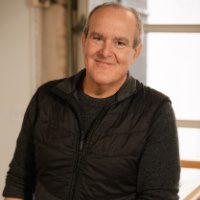
John Ames Jr., At Optilogic John is responsible for building strategic partnerships with the consulting community and works with global organizations to develop repeatable solutions for their supply chain design organizations. Prior to Optilogic, John was part of the leadership team at LLamasoft, helping the company go from 12 employees to over 500 across 10 years. John is a recognized thought leader on supply chain network design, inventory optimization, and sustainability modeling. Connect with John on LinkedIn.

Evrim Ertugrul is a Deputy Head of Corporate Logistics Dept at SCOA with an 18-year career leading supply chain organizations spanning supply planning, S&OP management, demand planning, category planning, and new product introductions. Evrim is focused on continuous improvement in supply chain from design to implementation. She specializes in Six Sigma management and simulating logistics models for different locations and potential customers. Connect with Evrim on LinkedIn.
